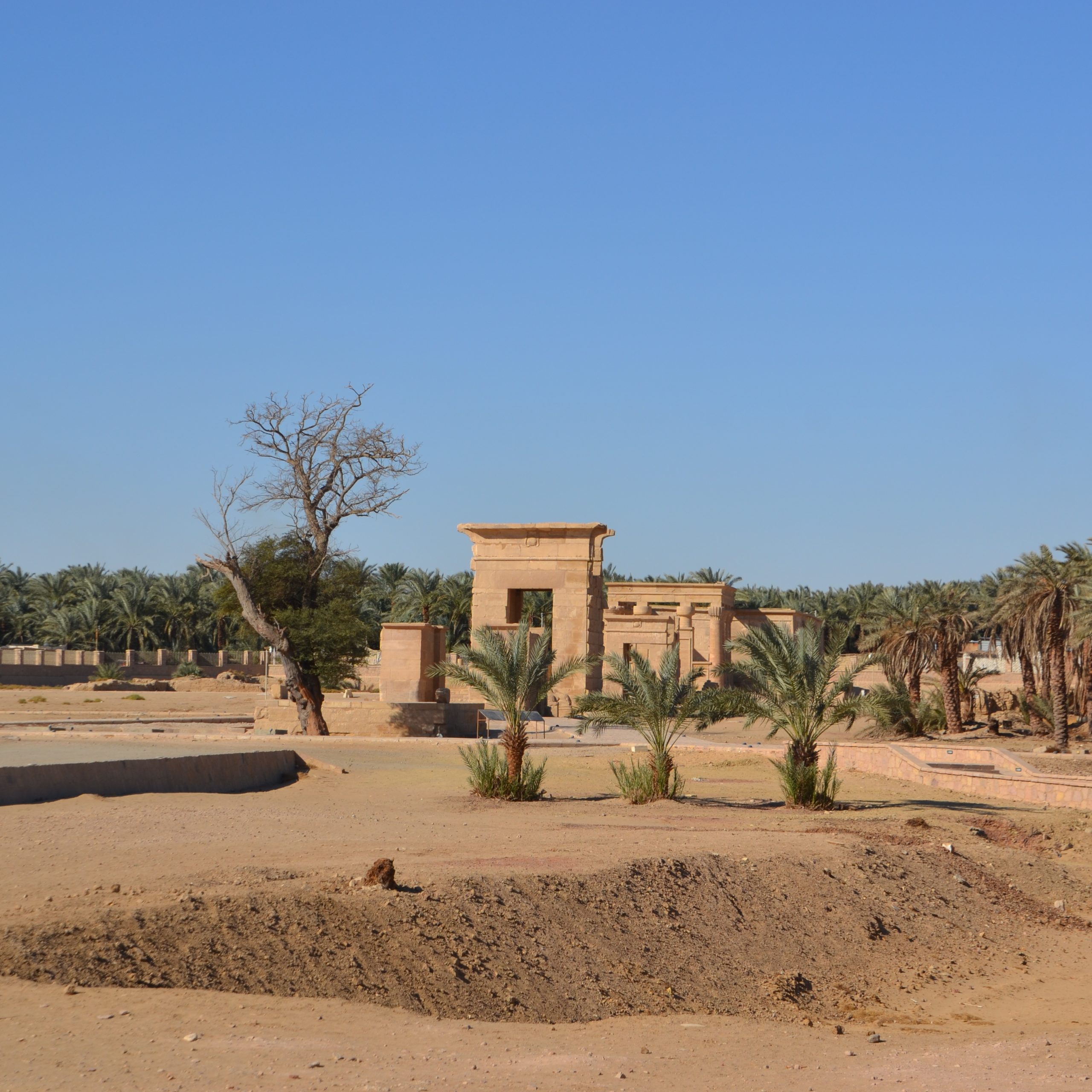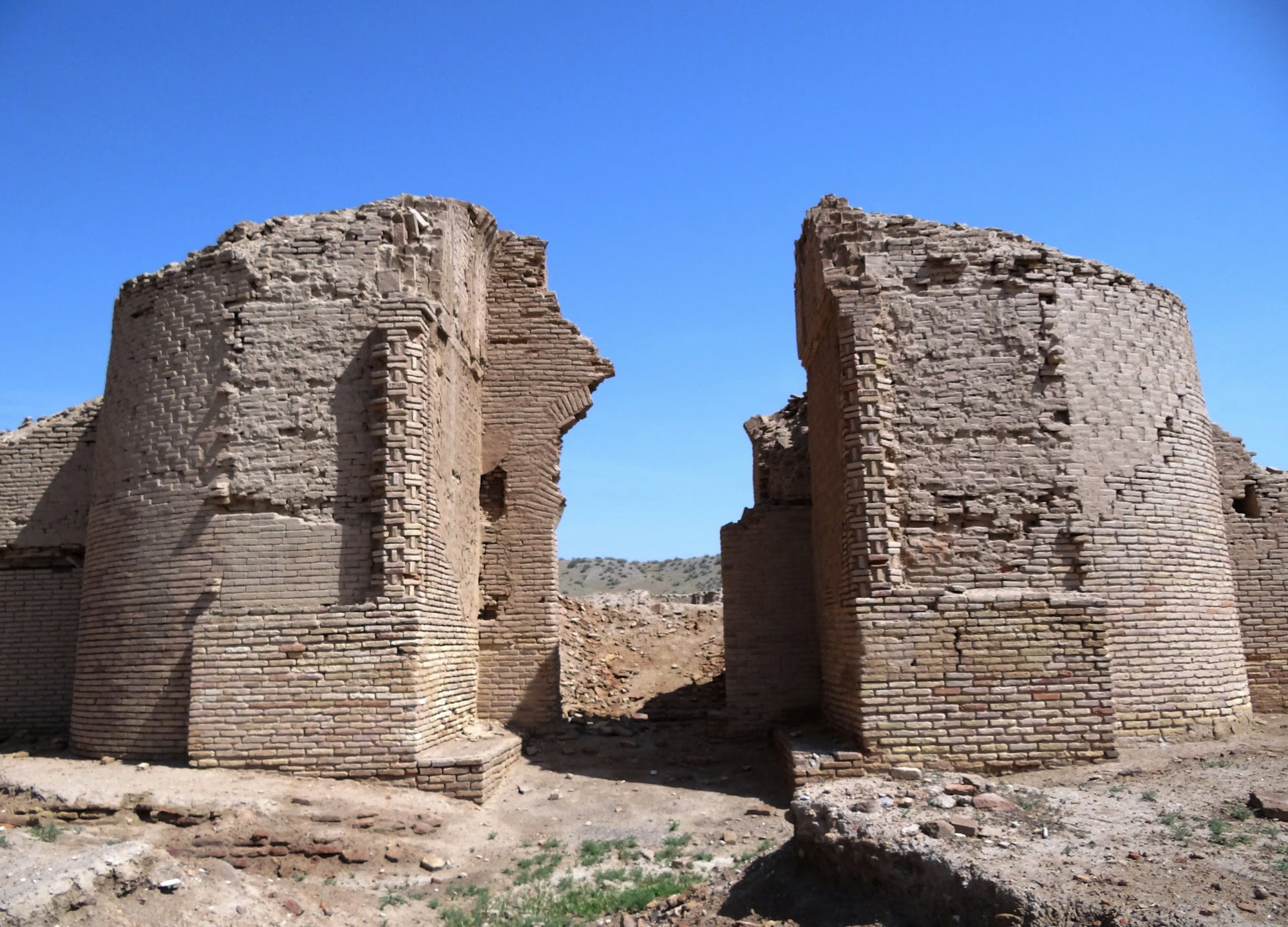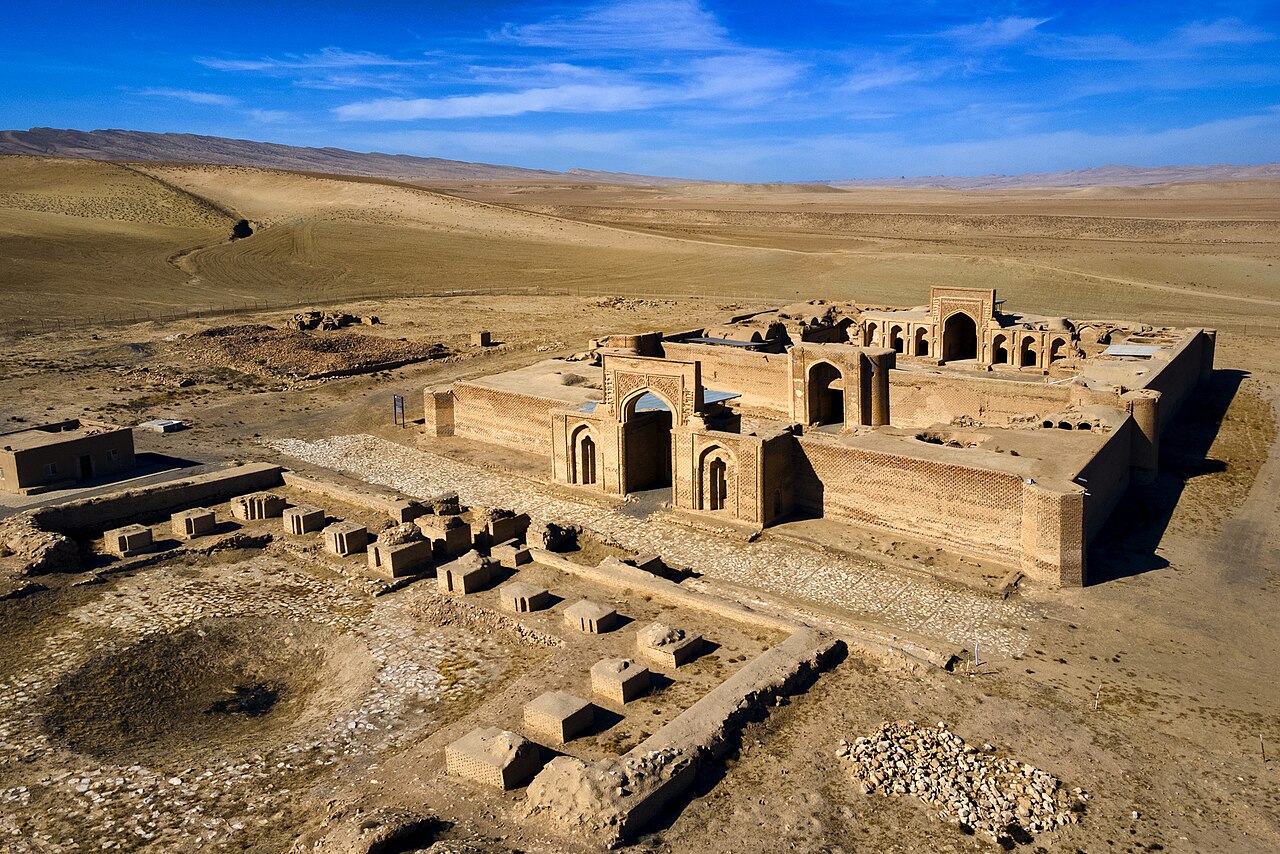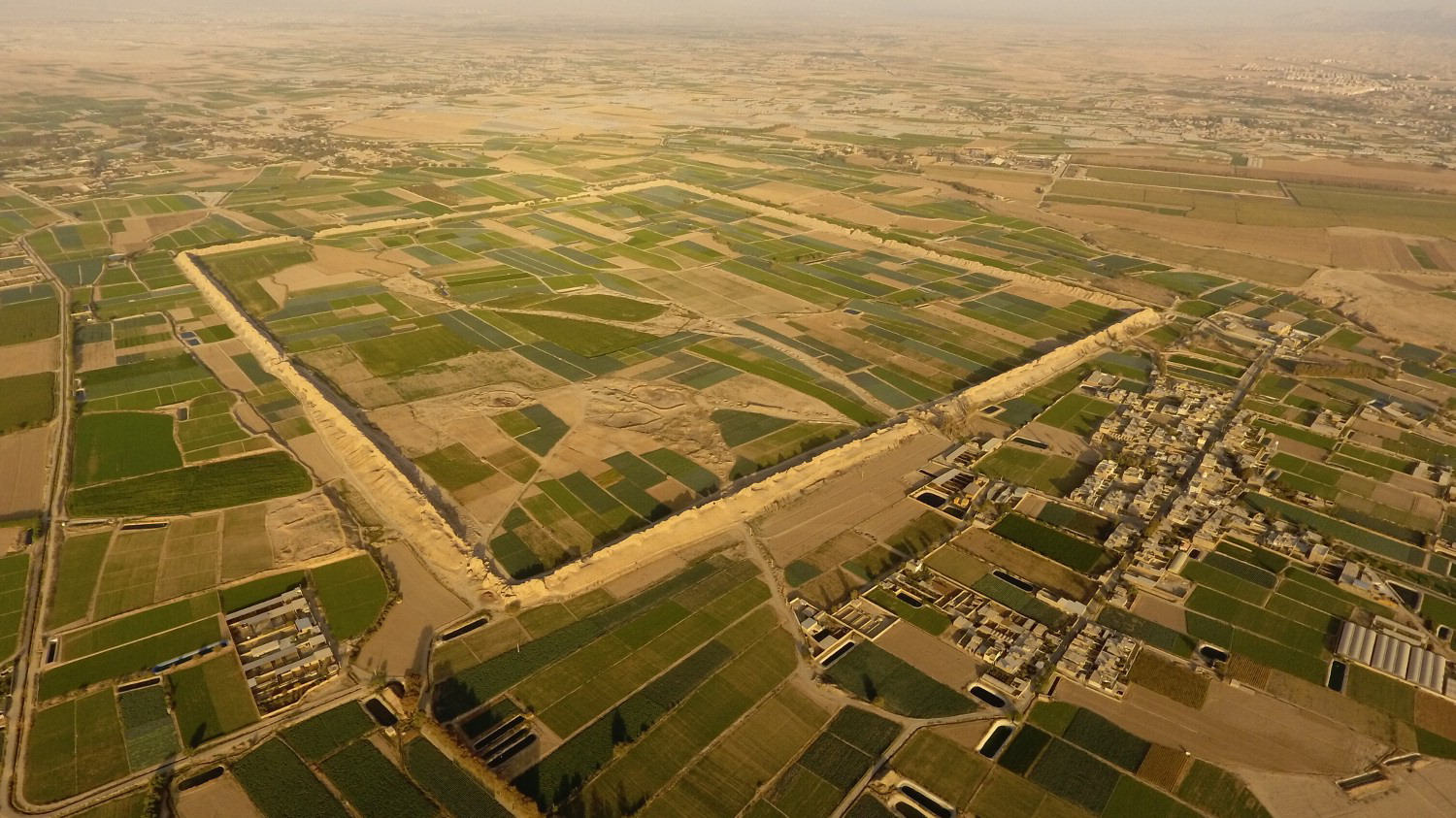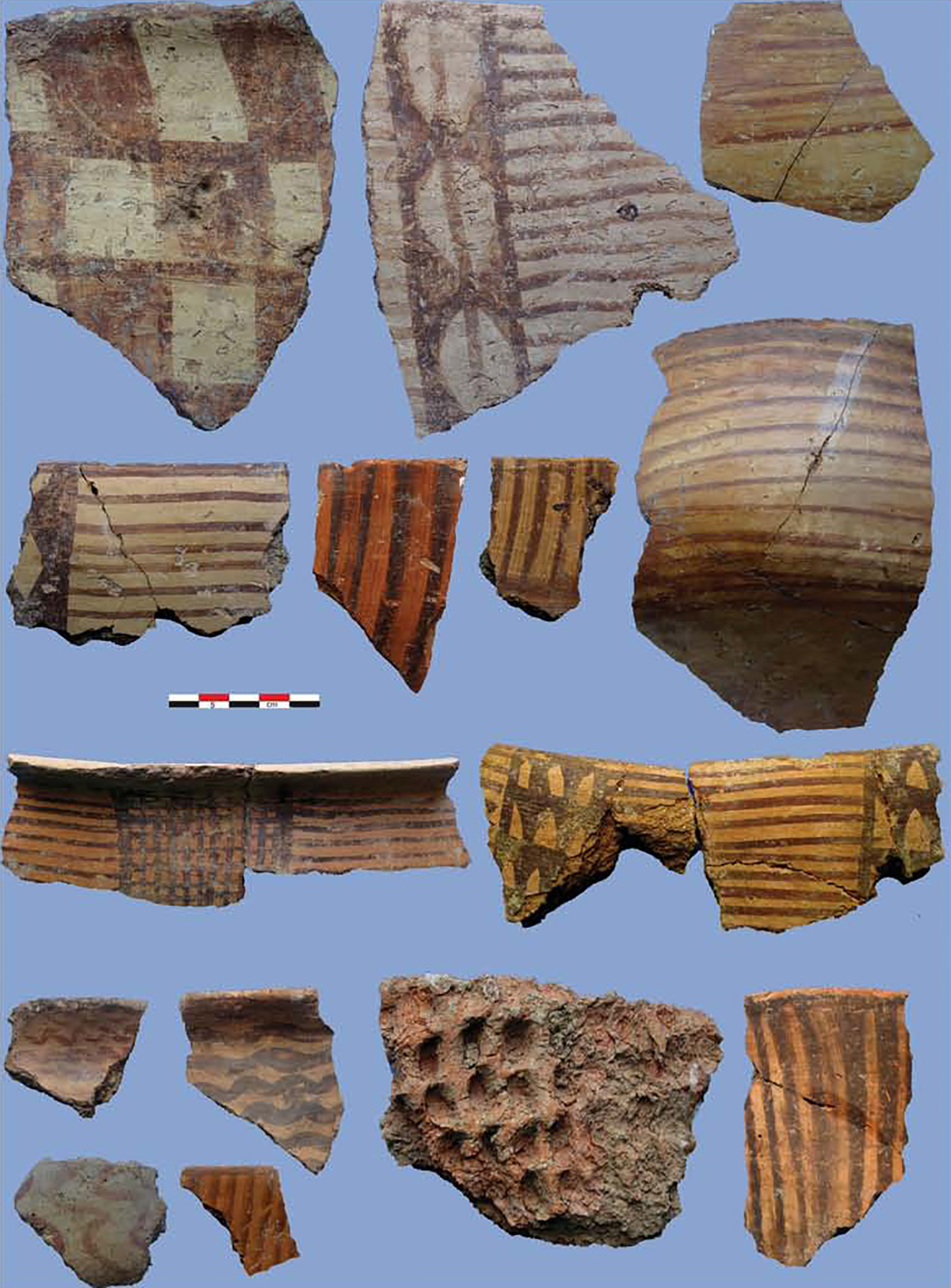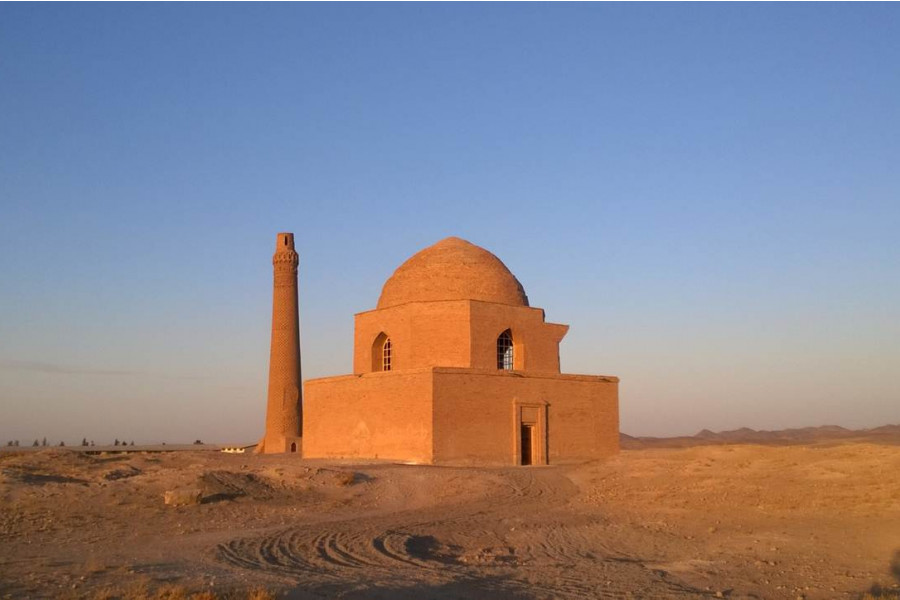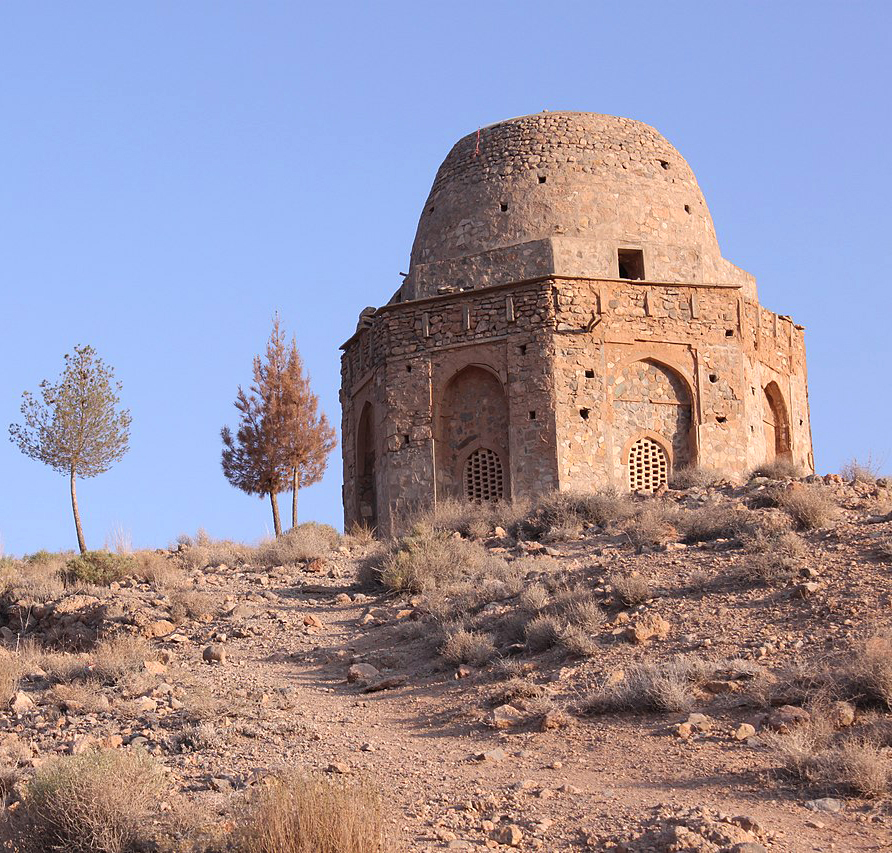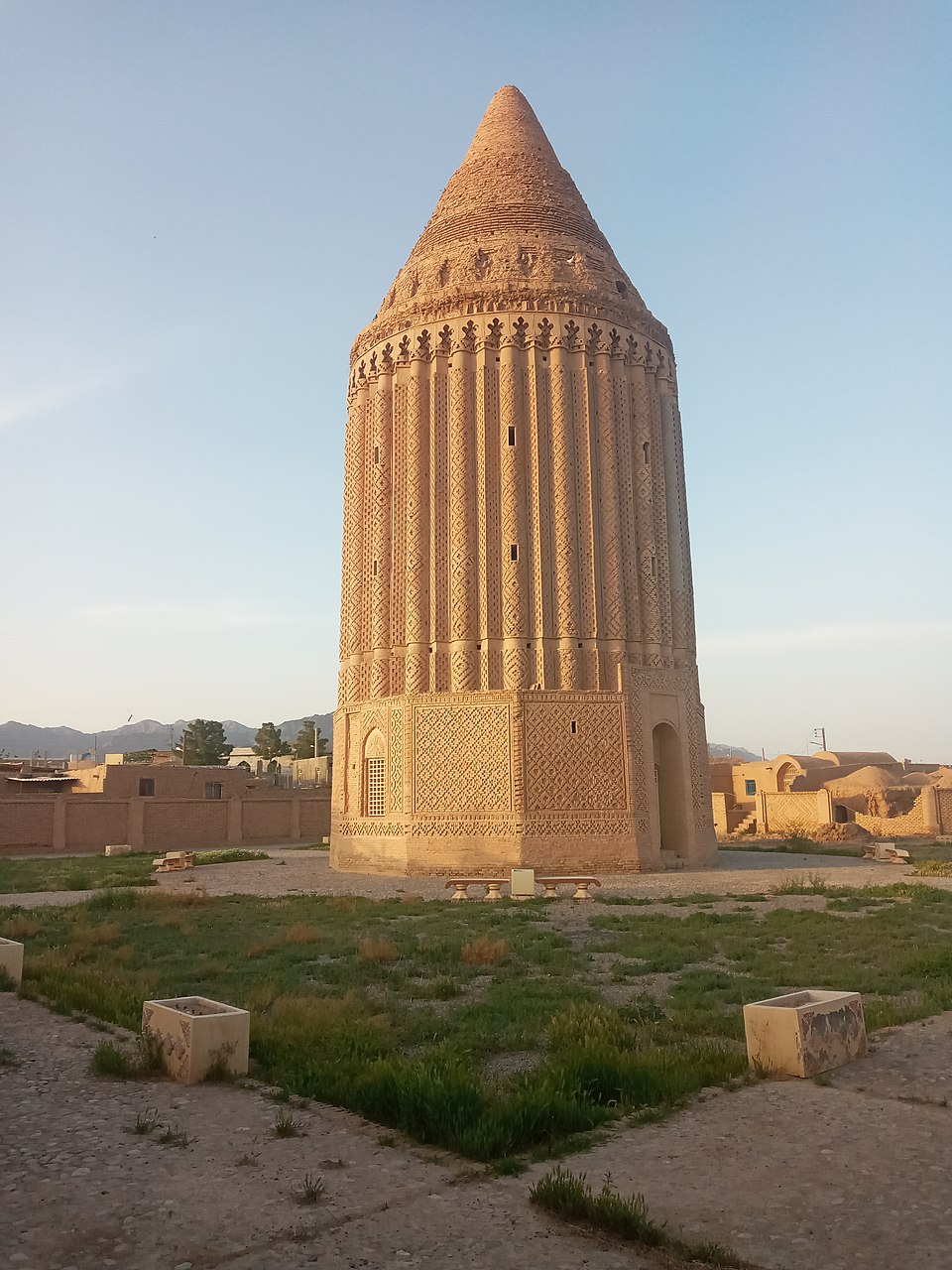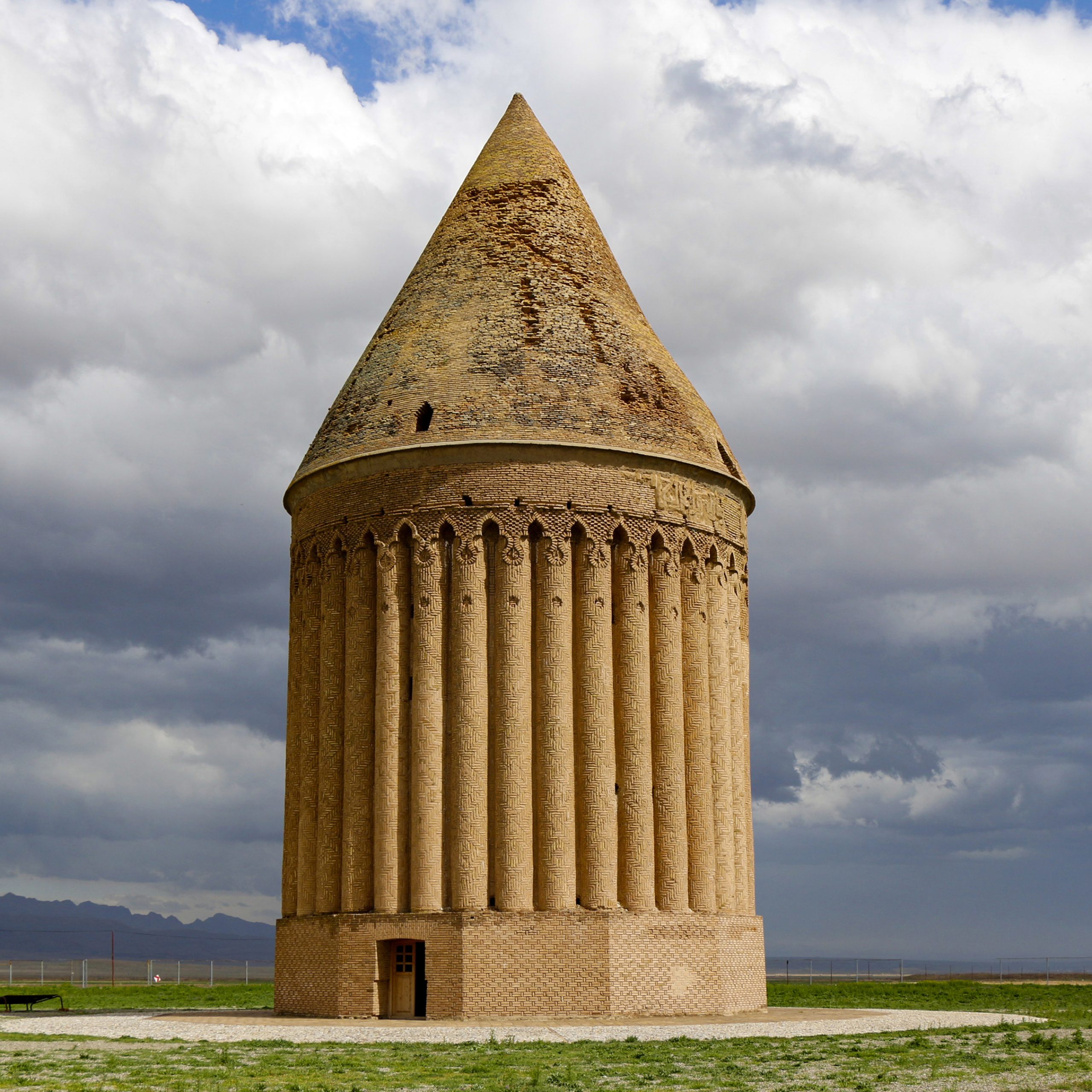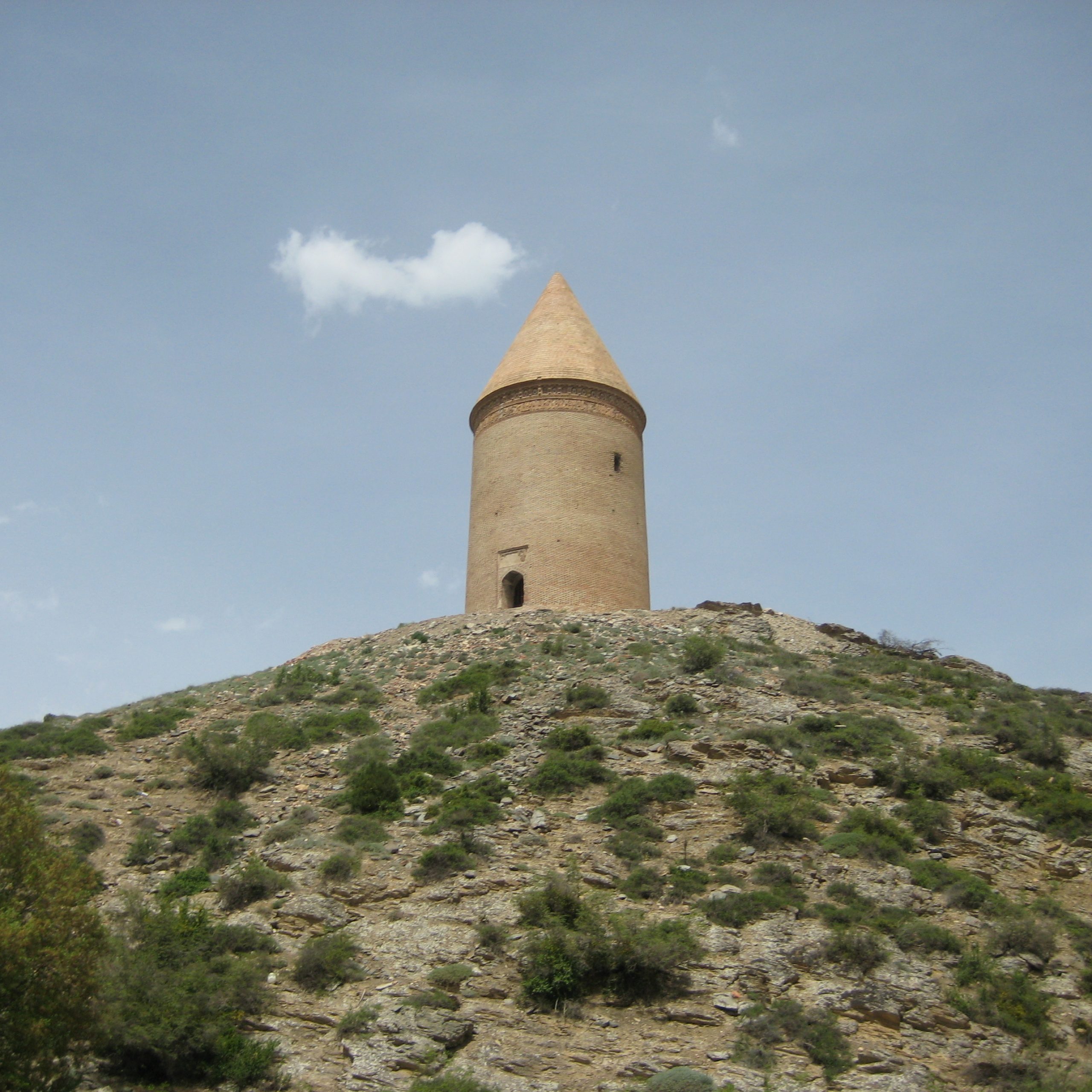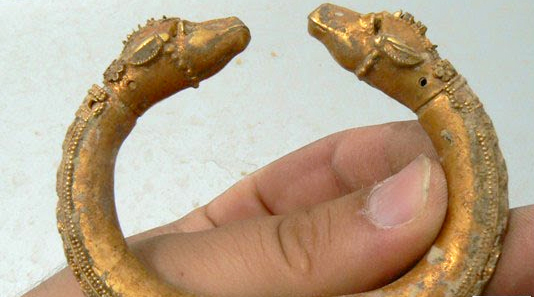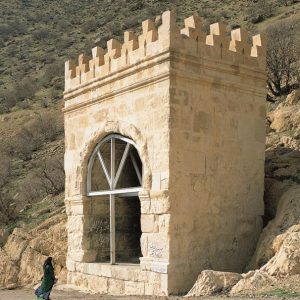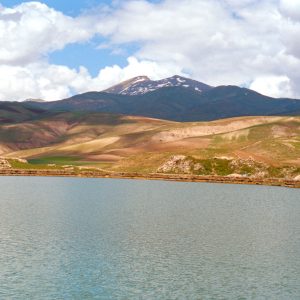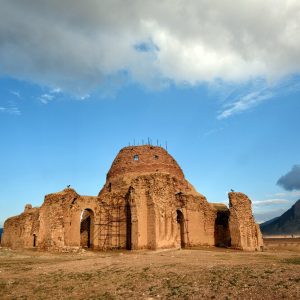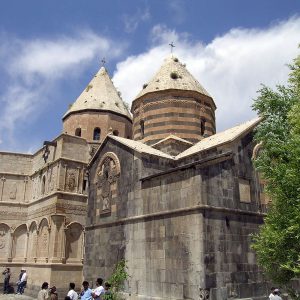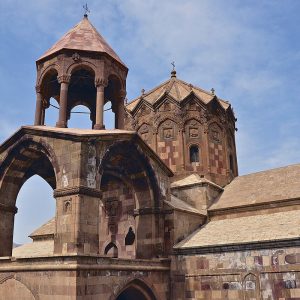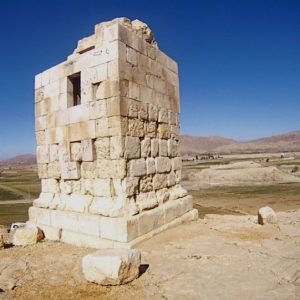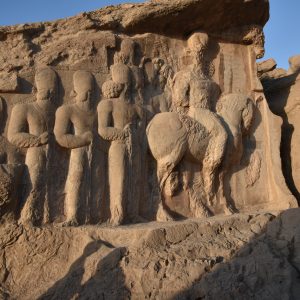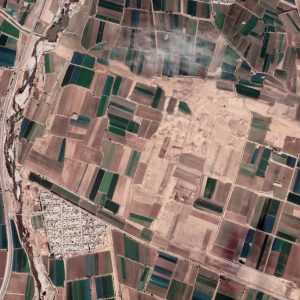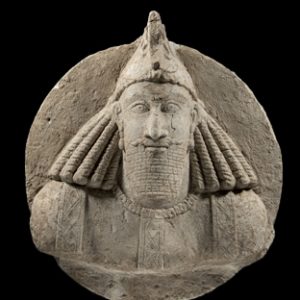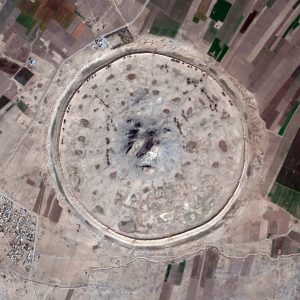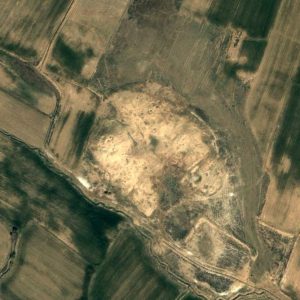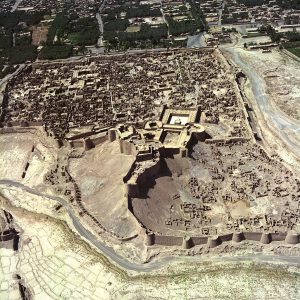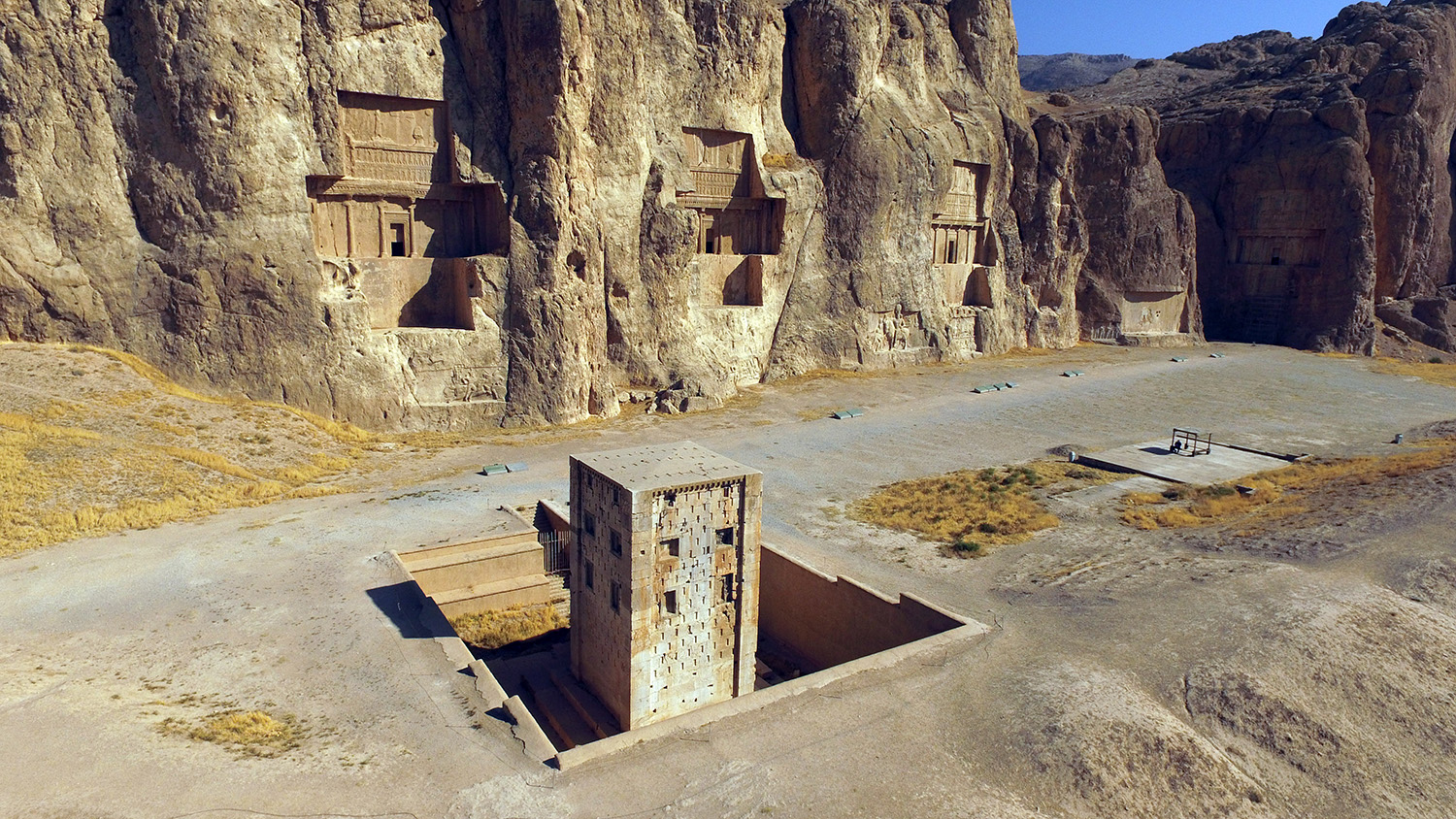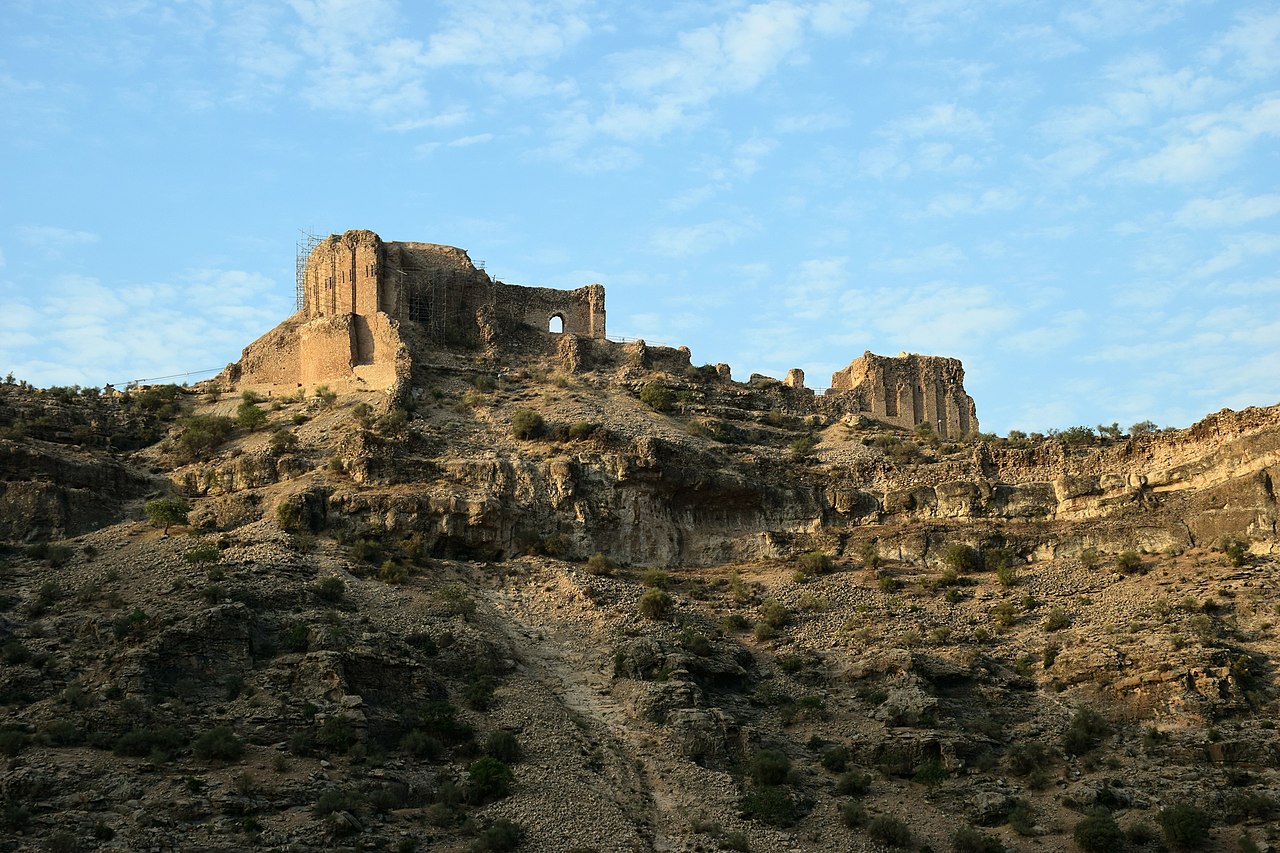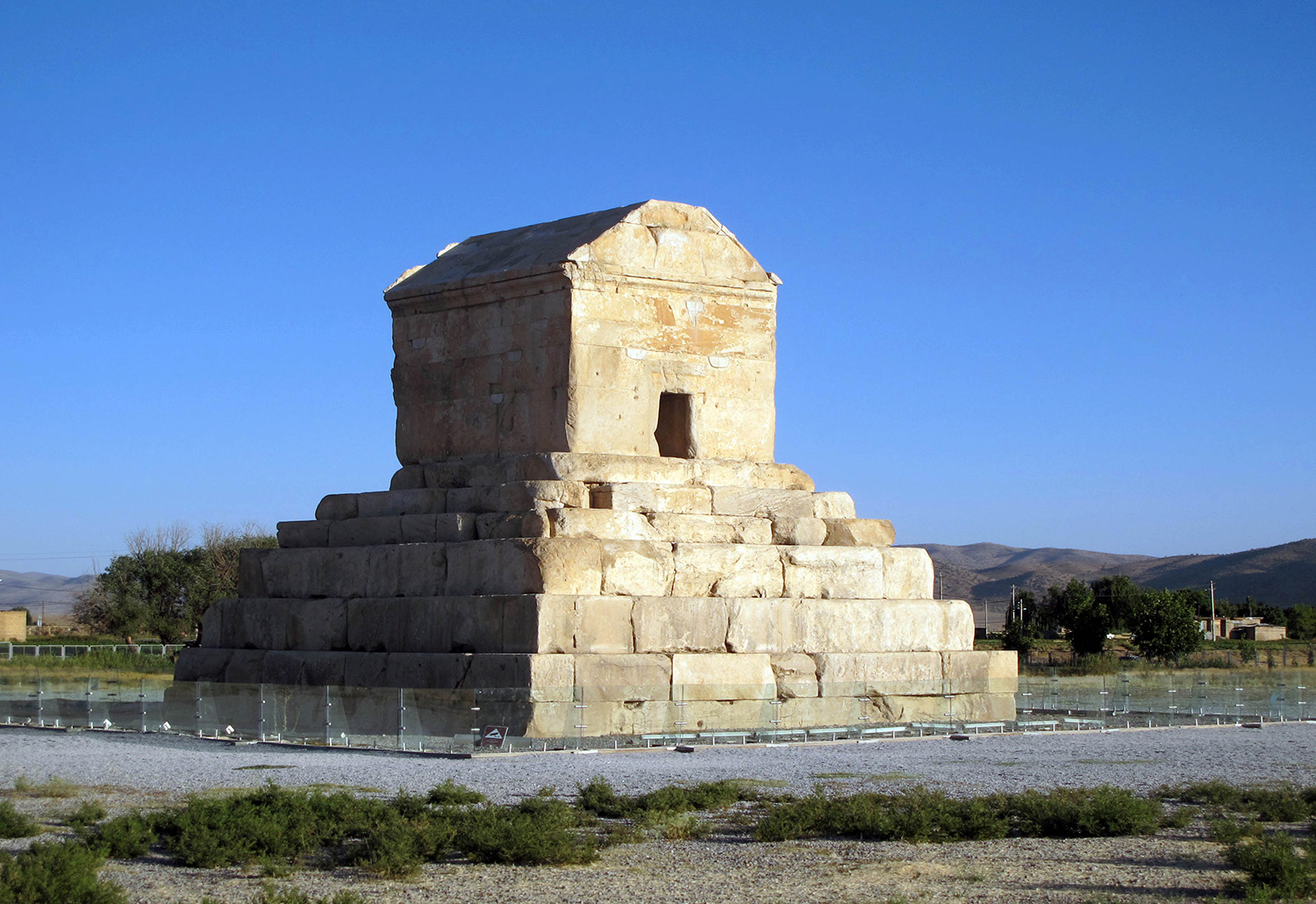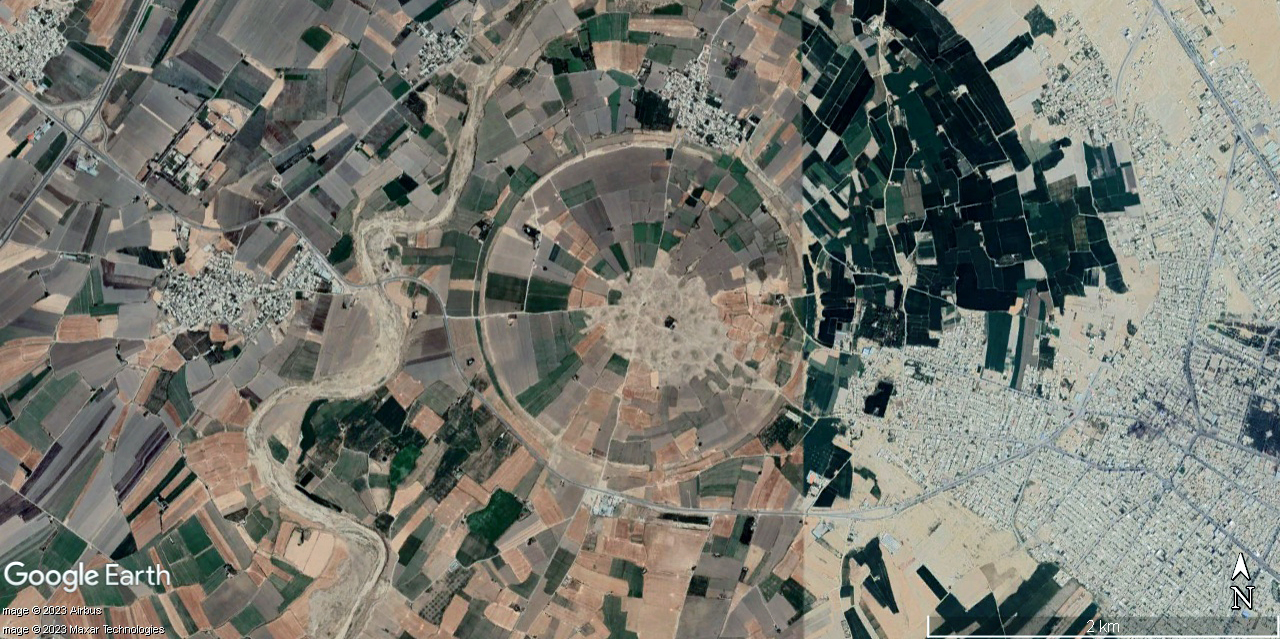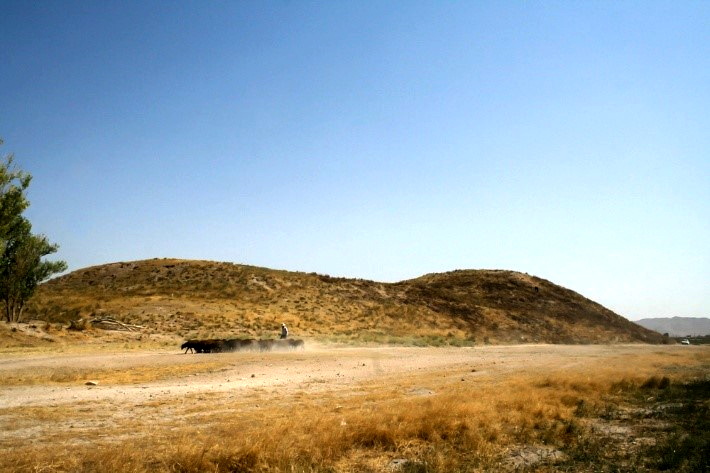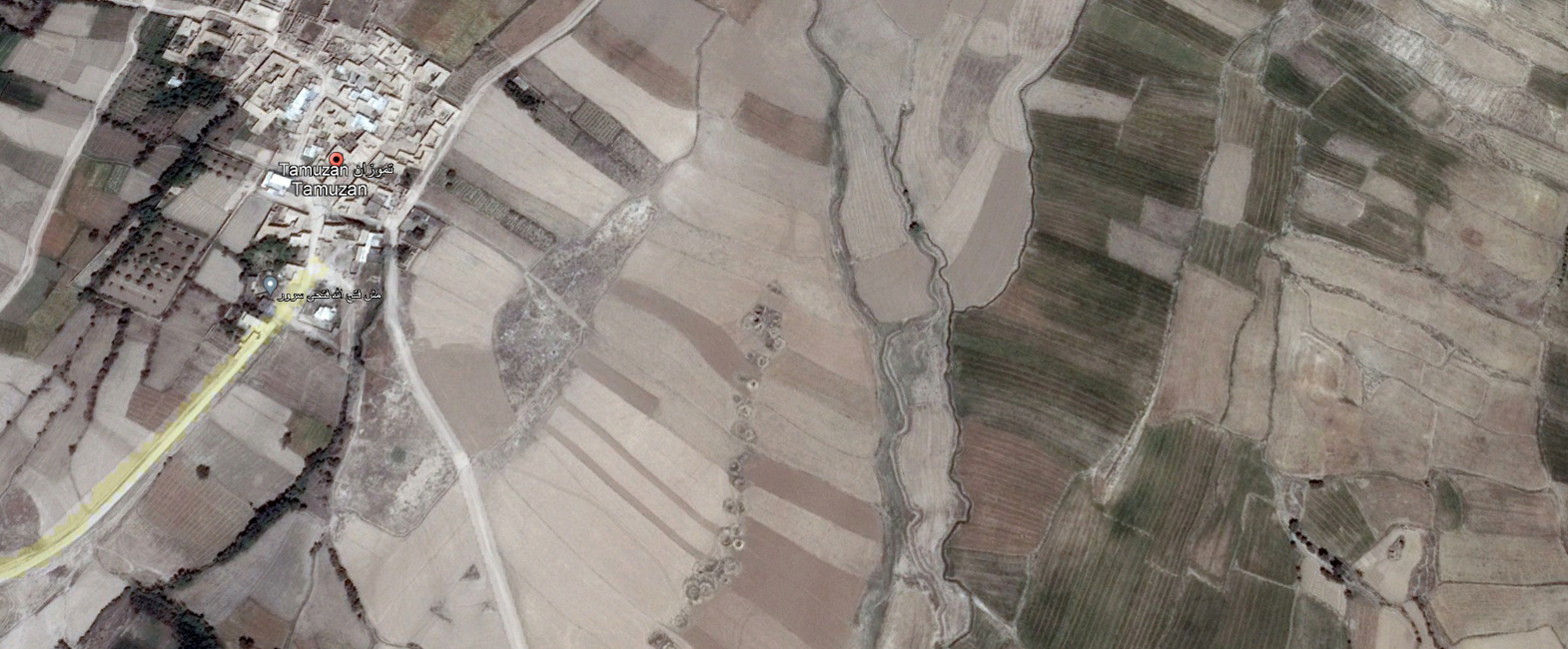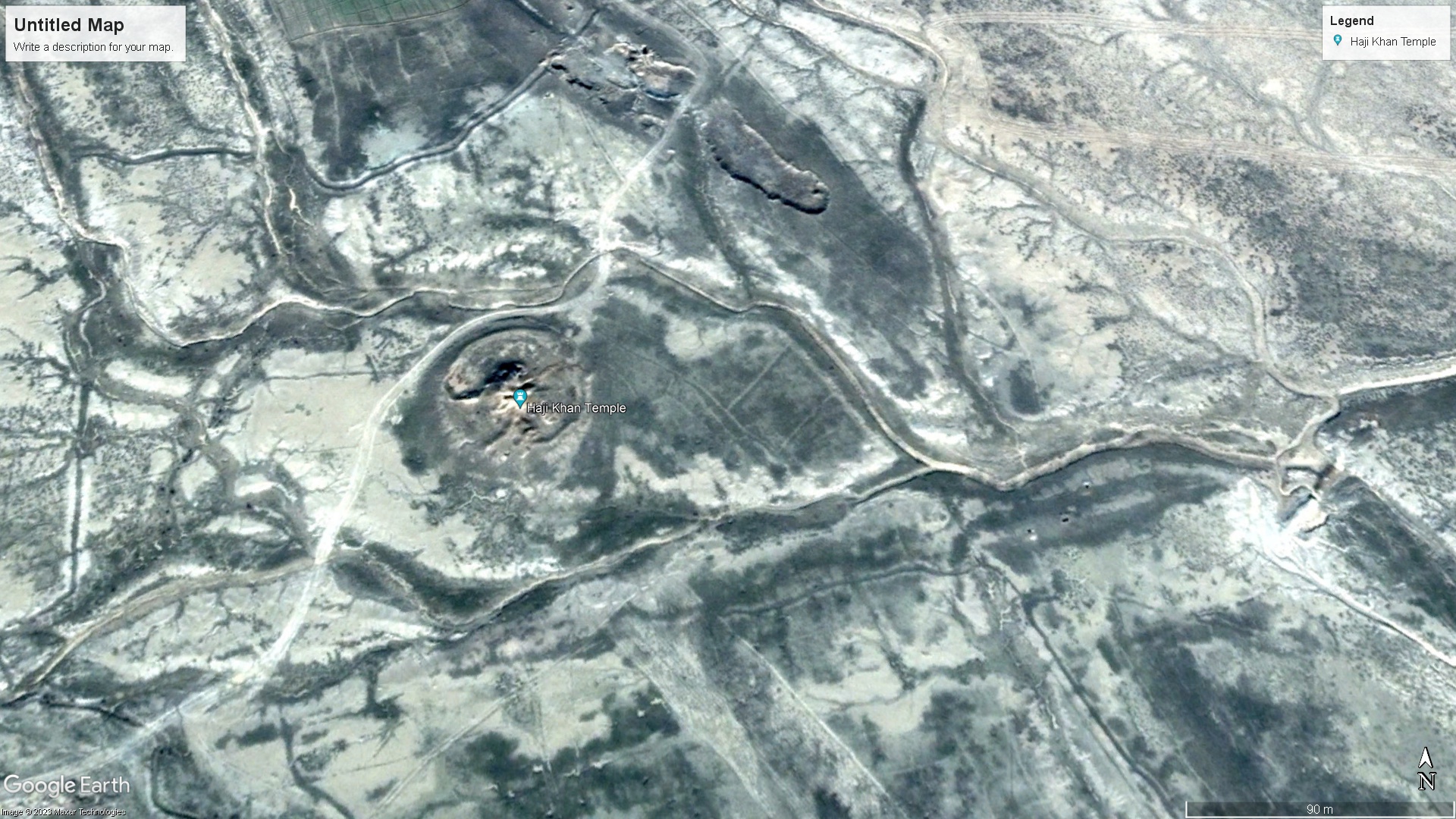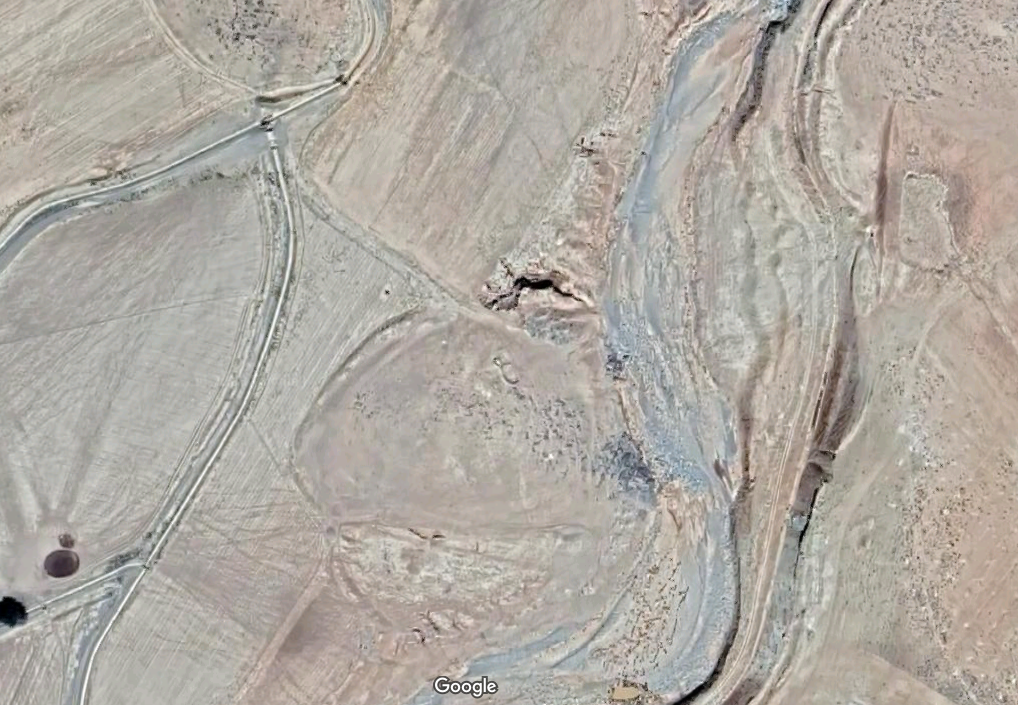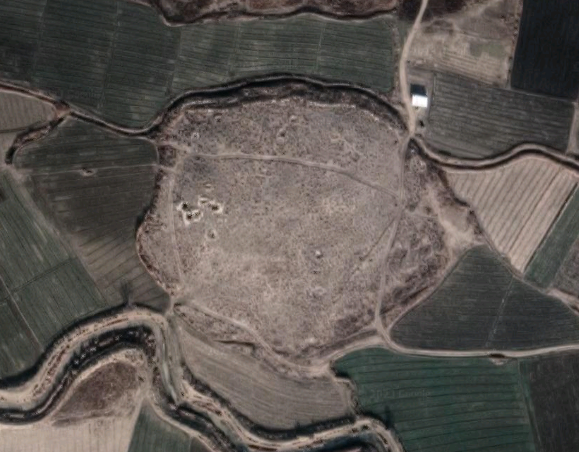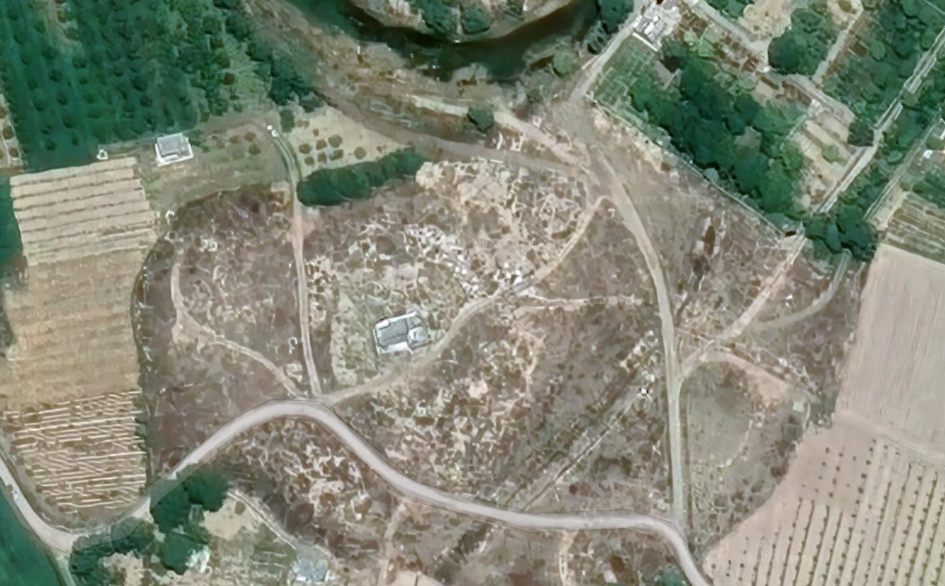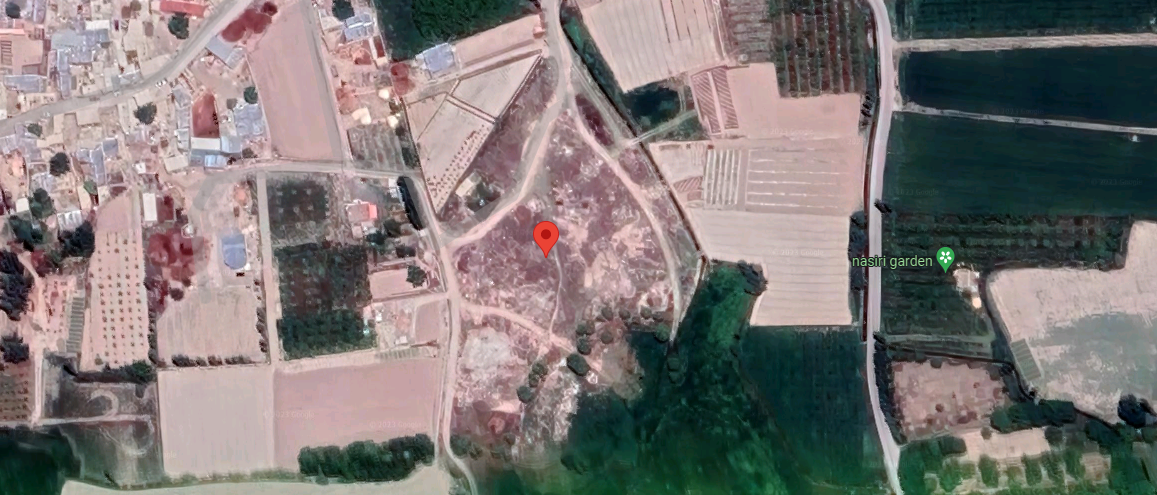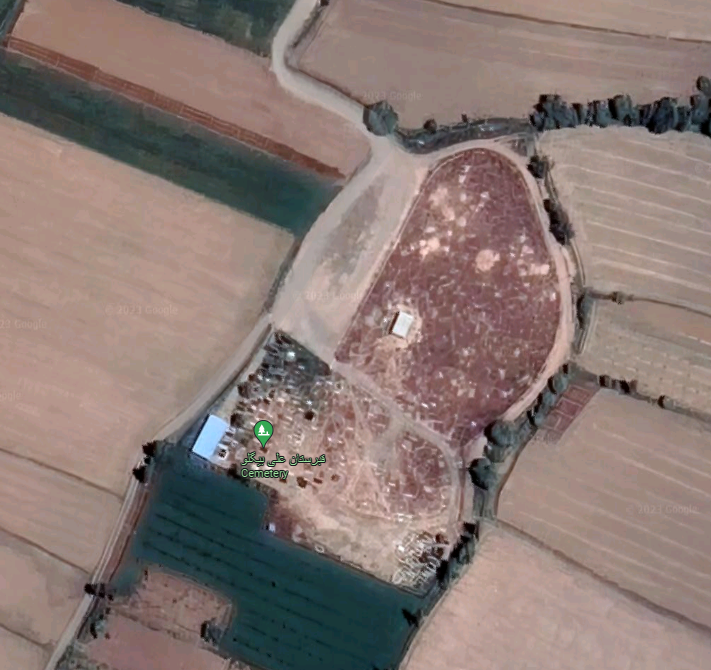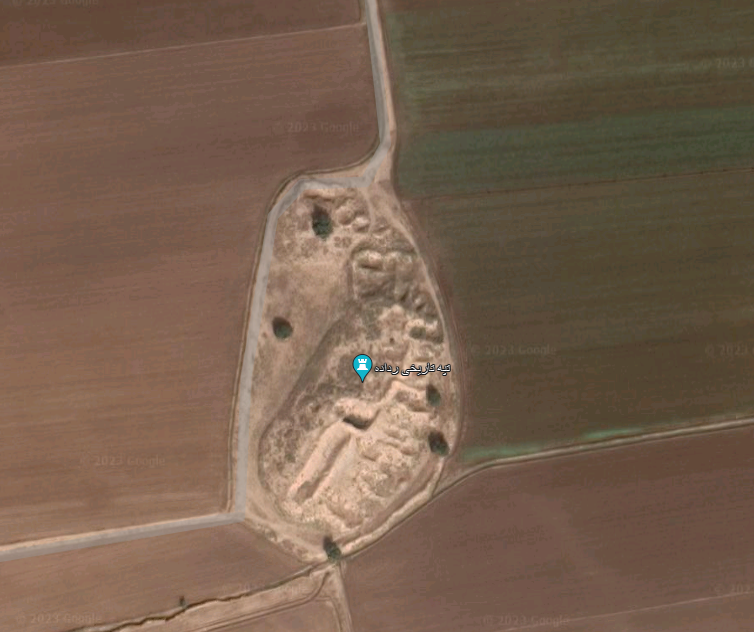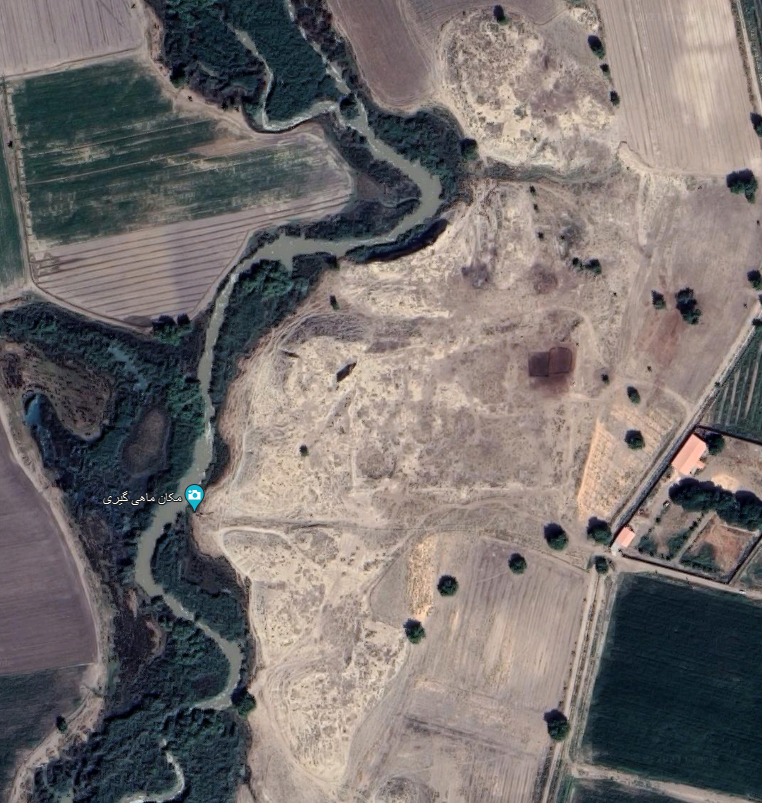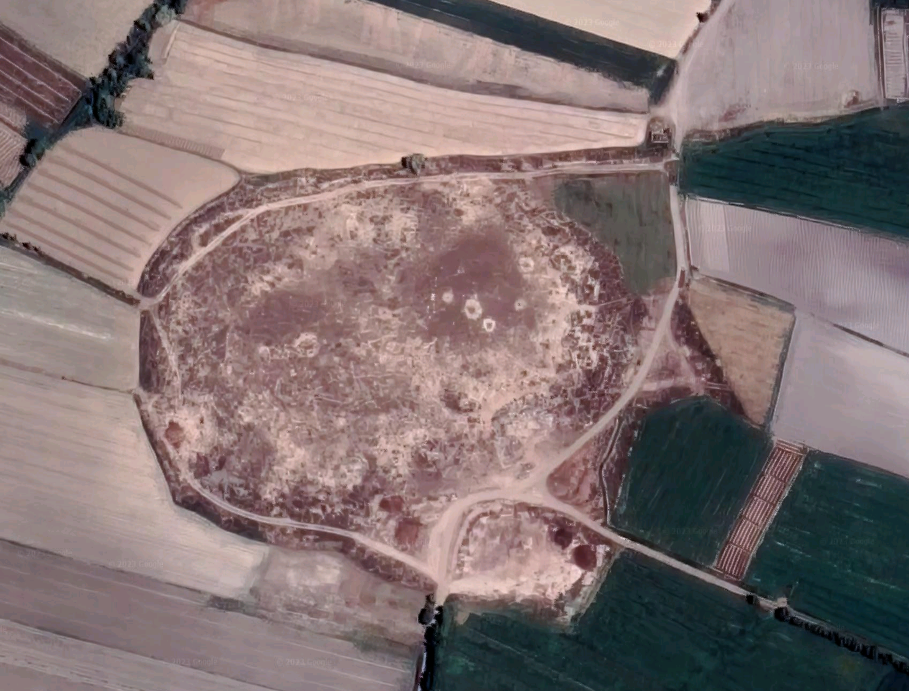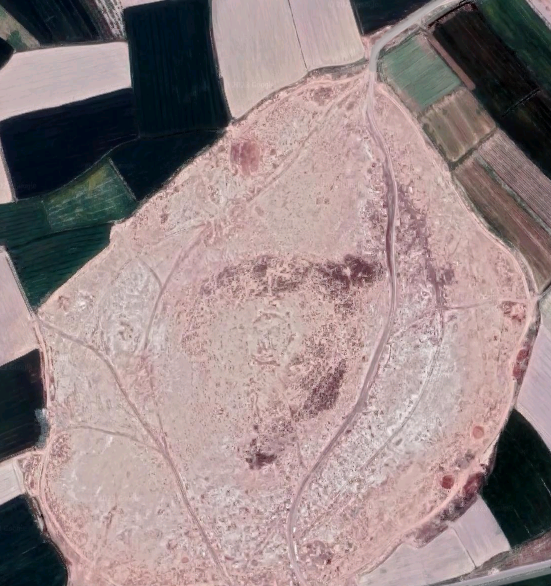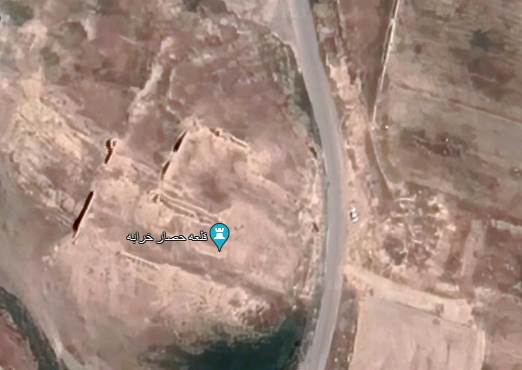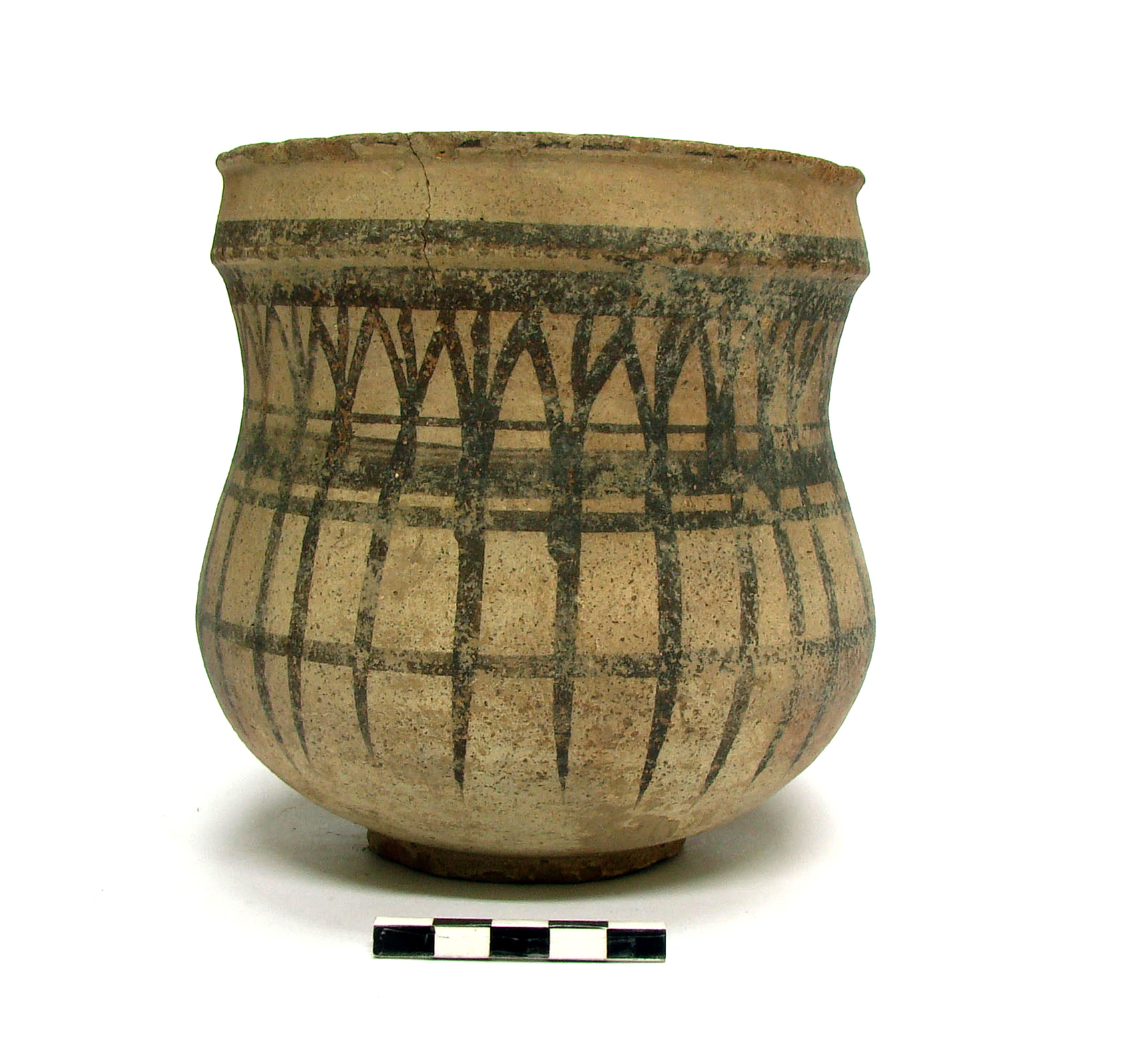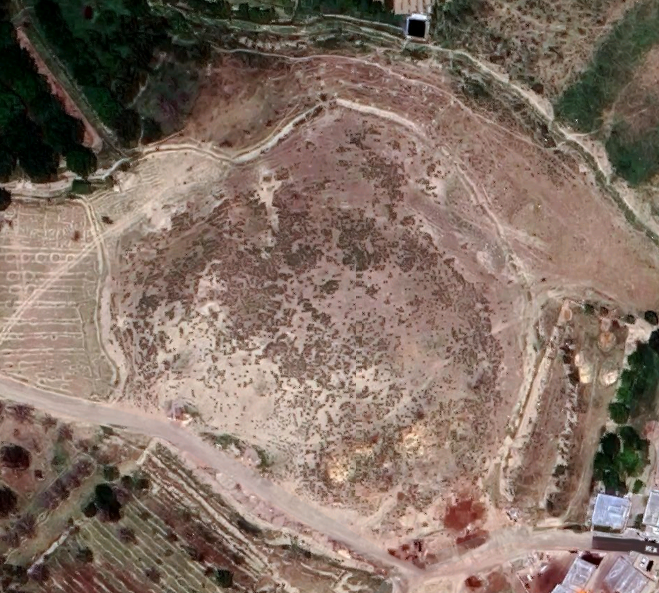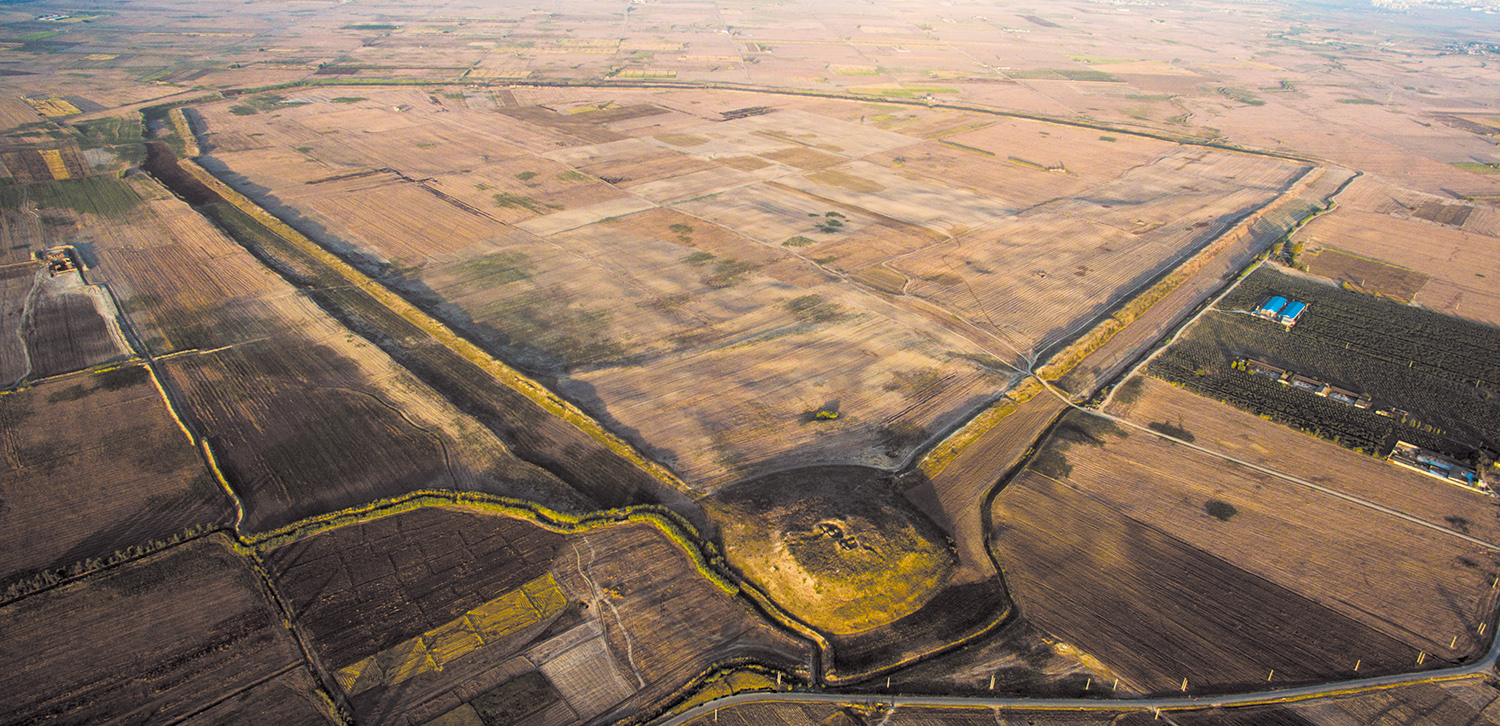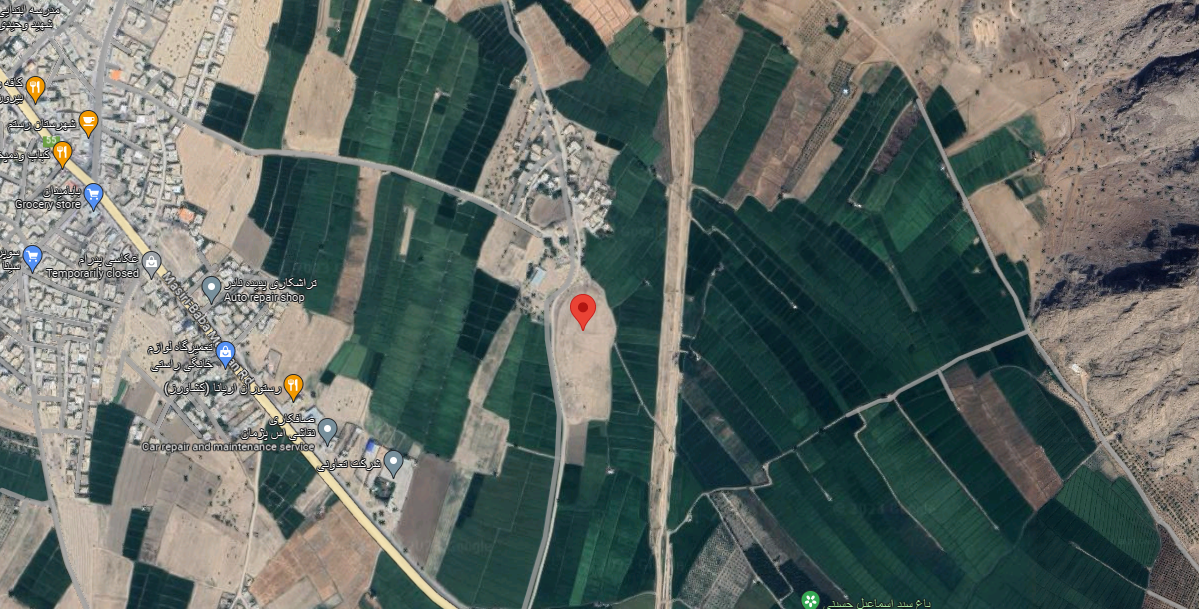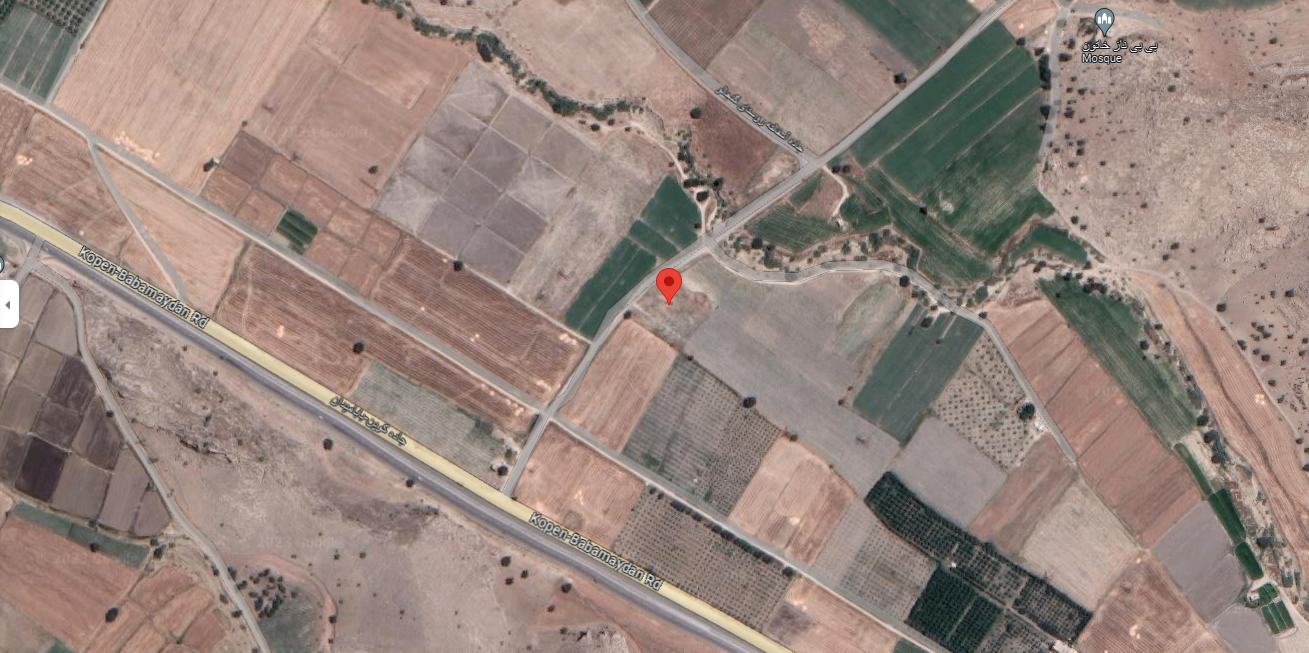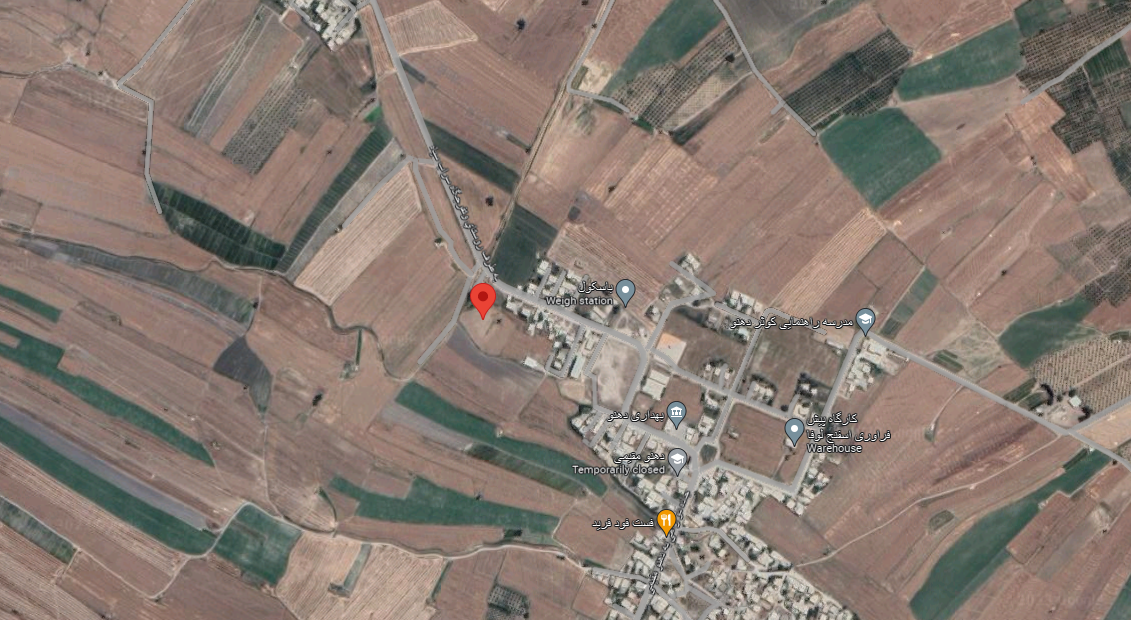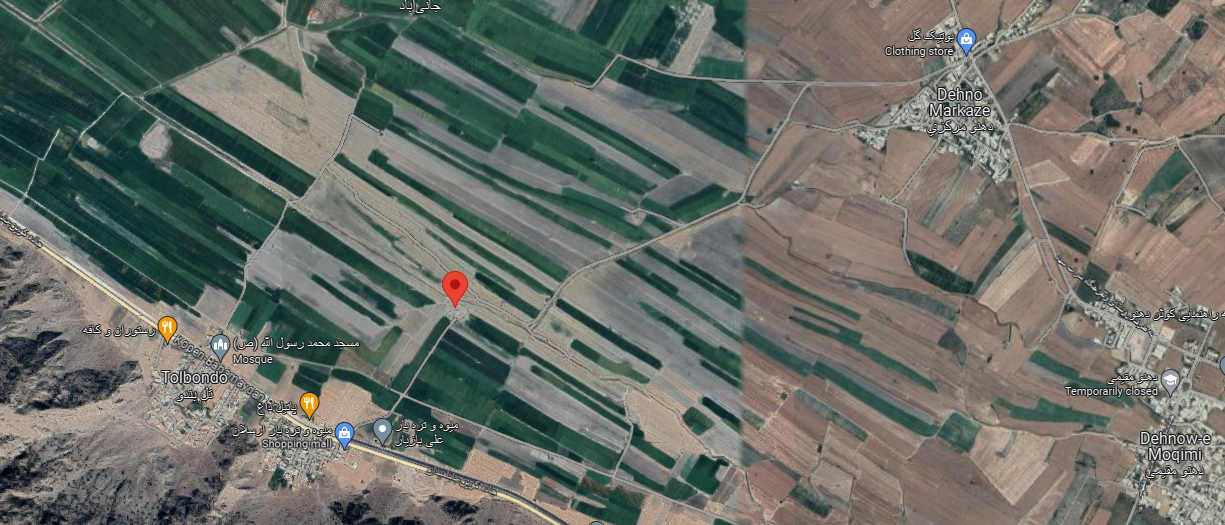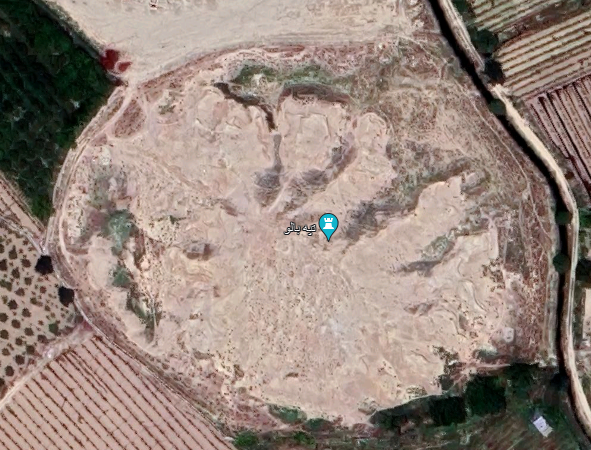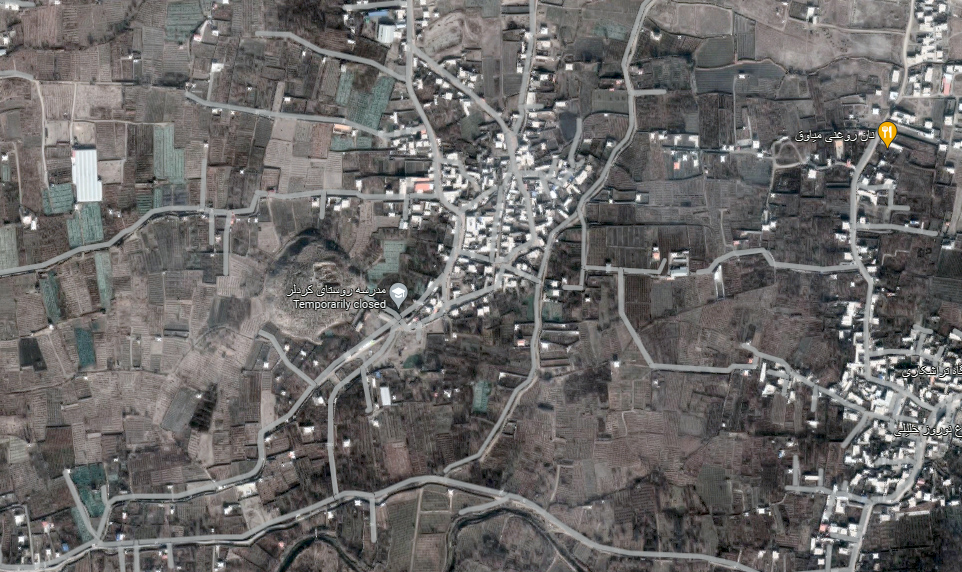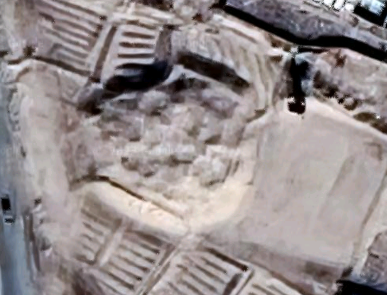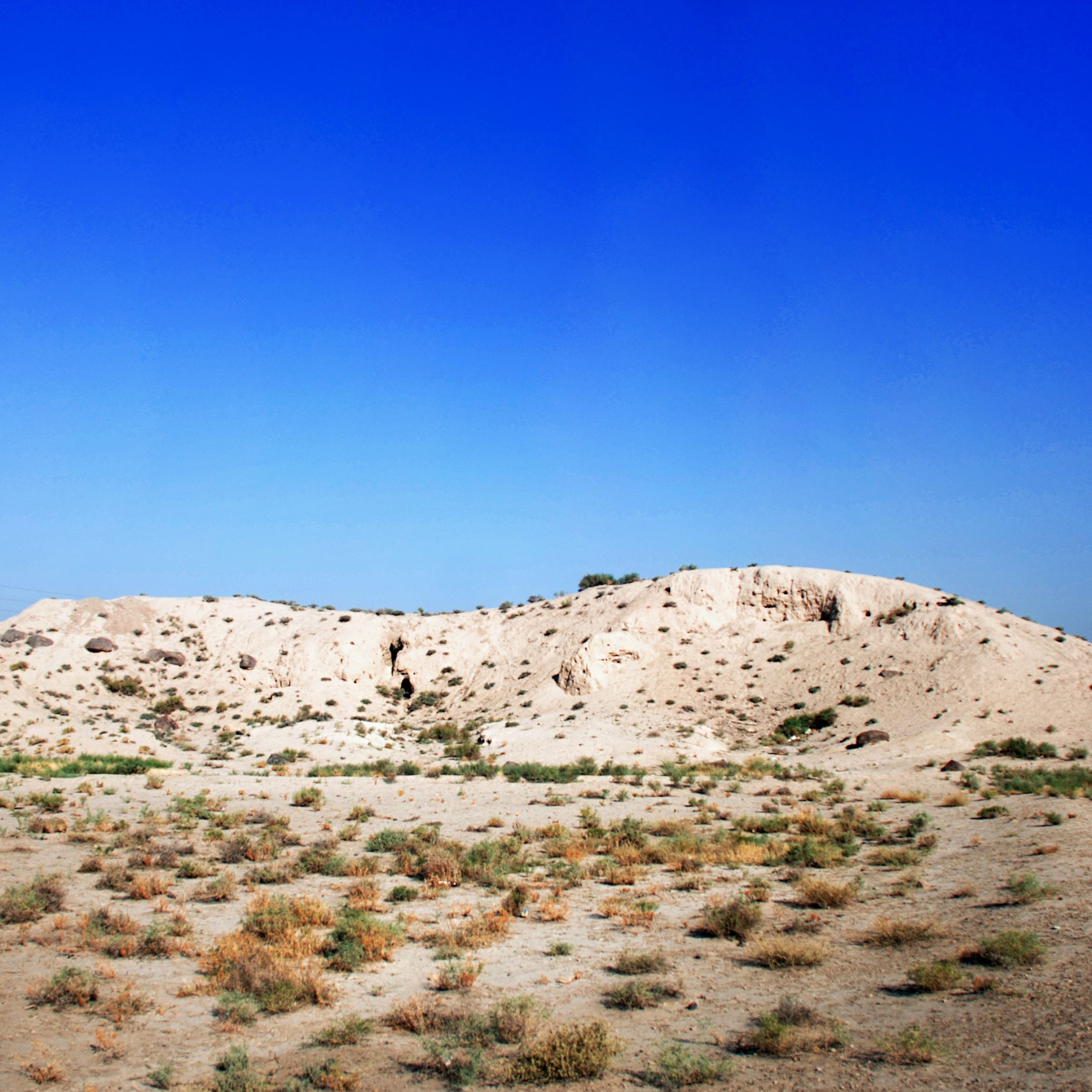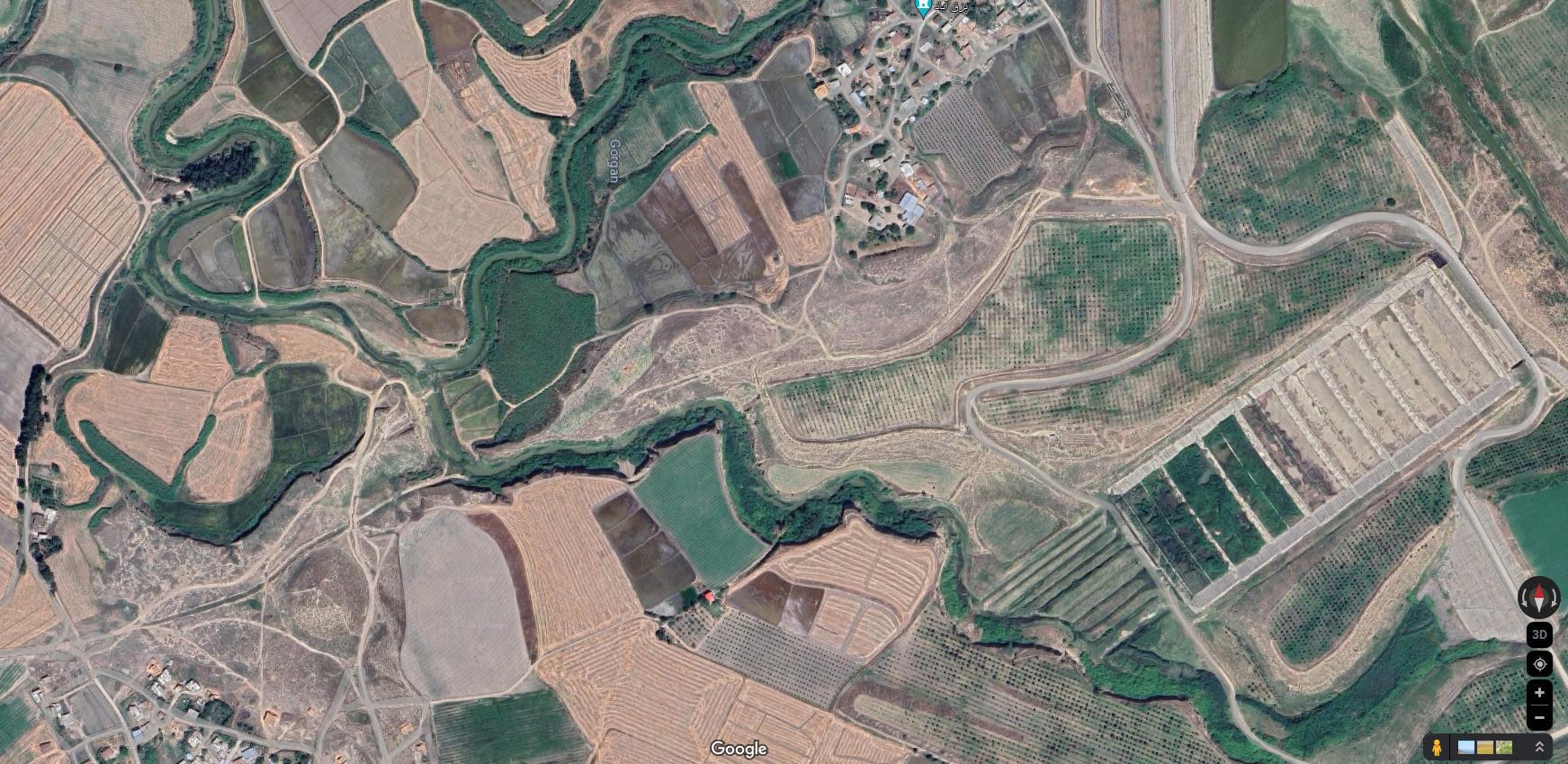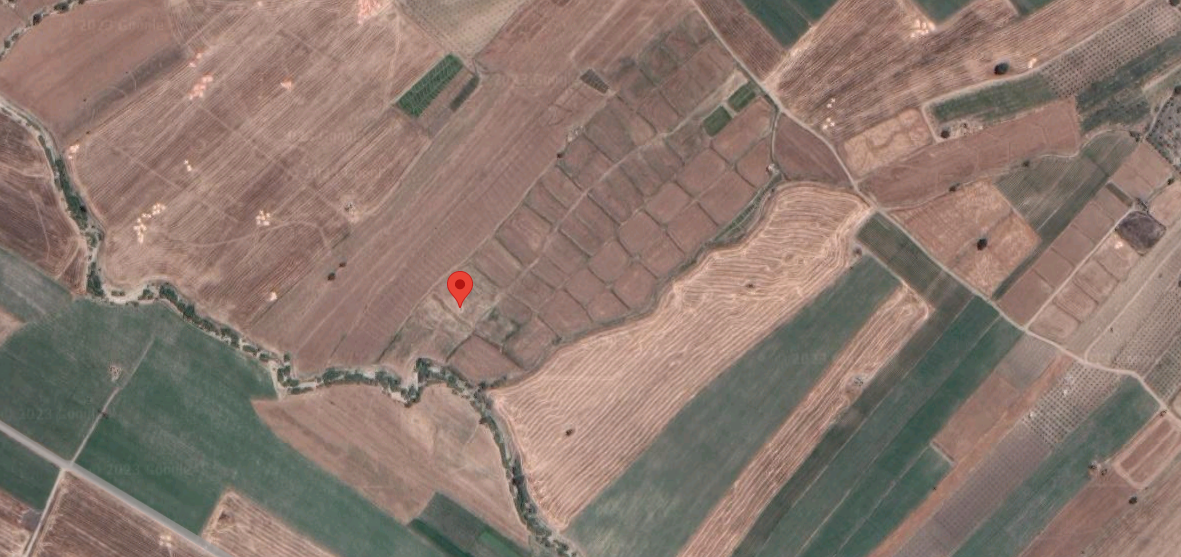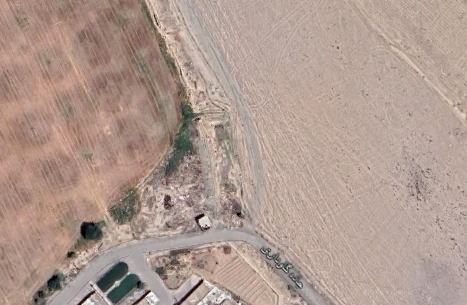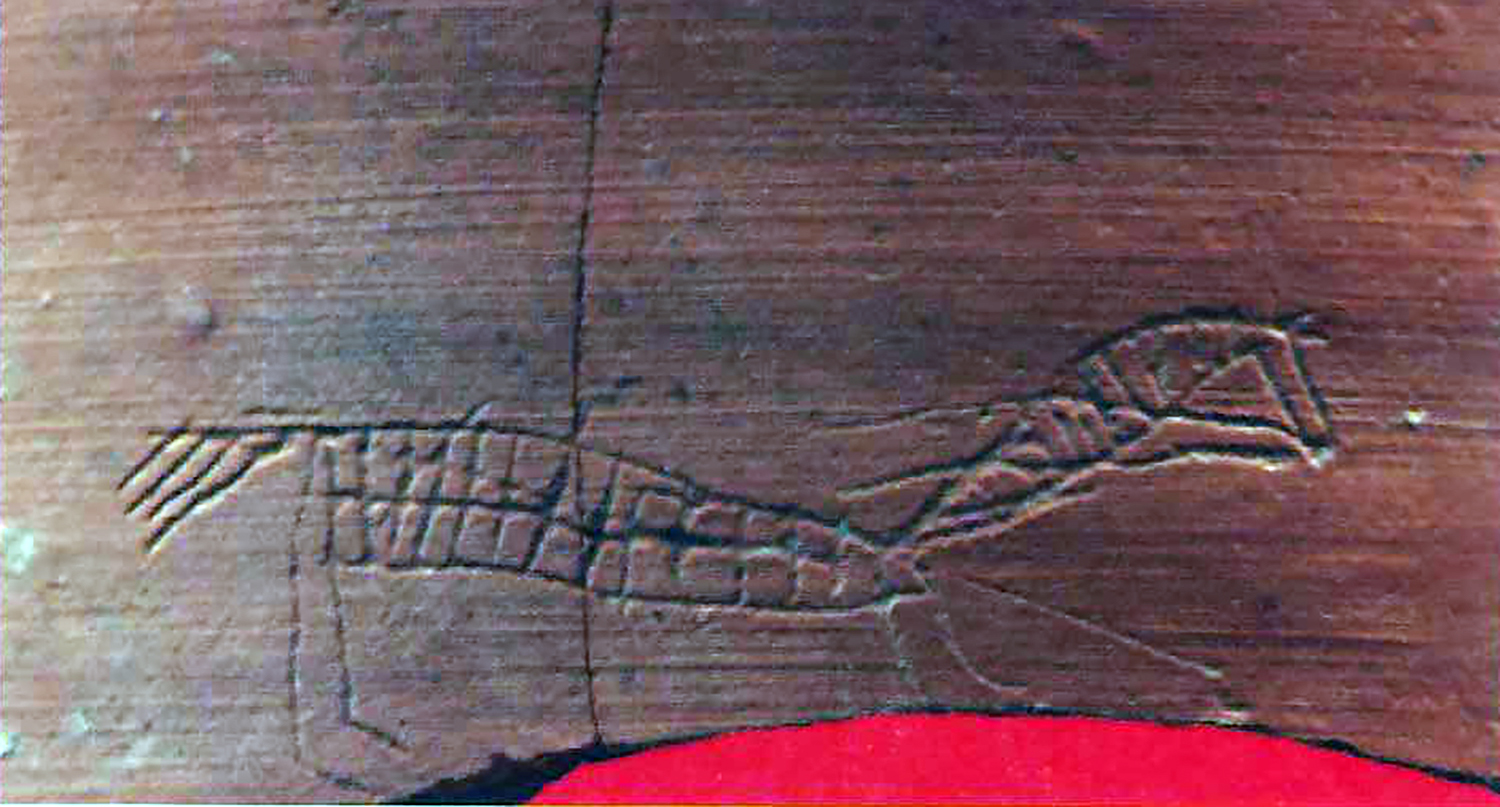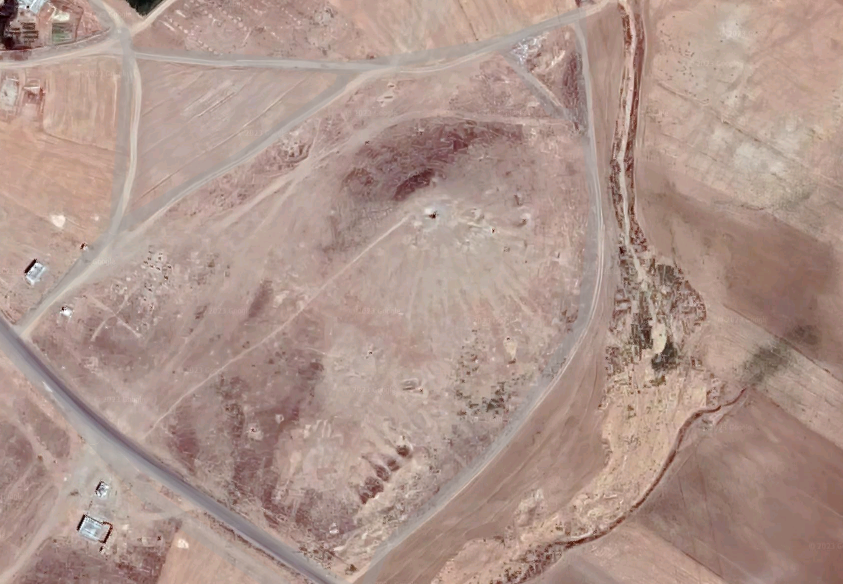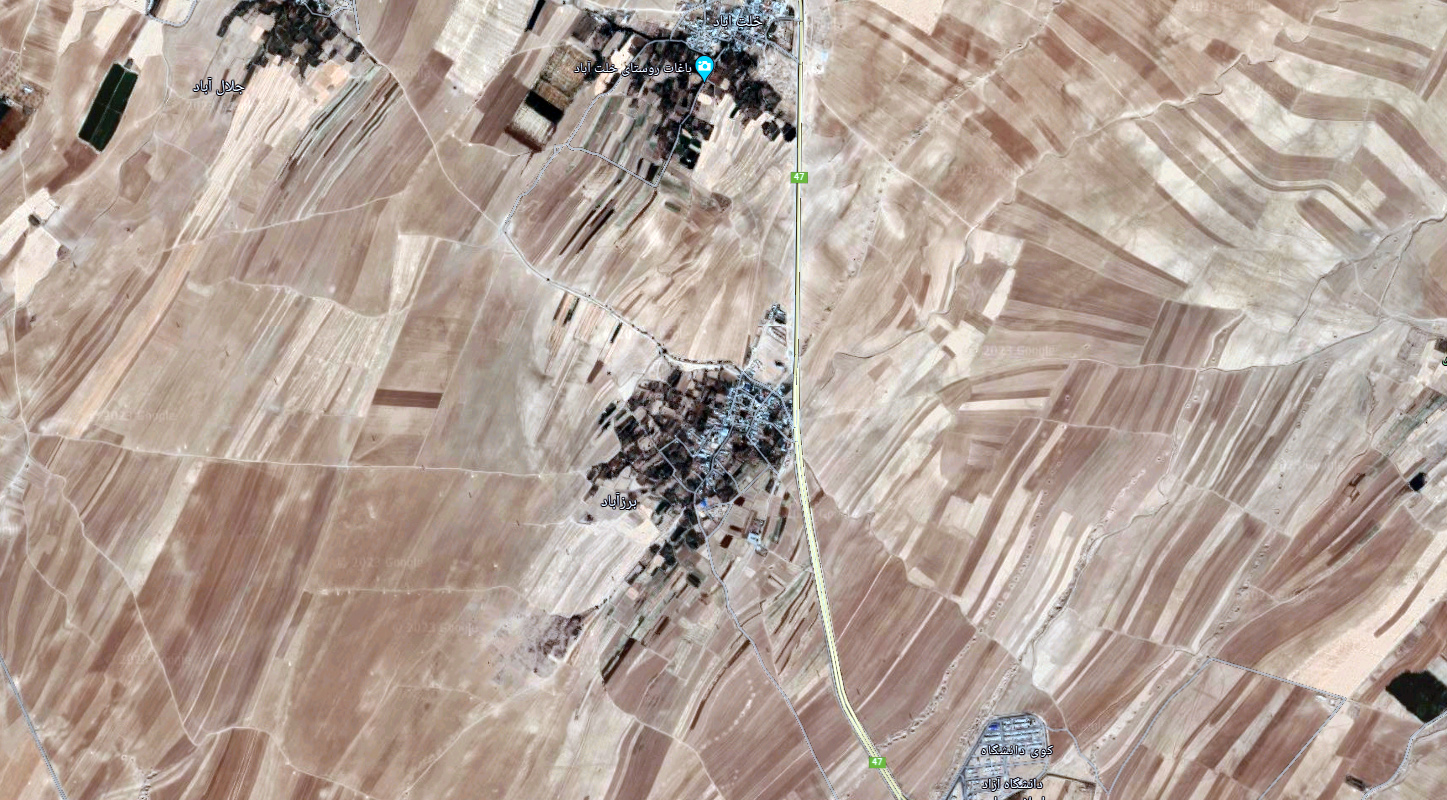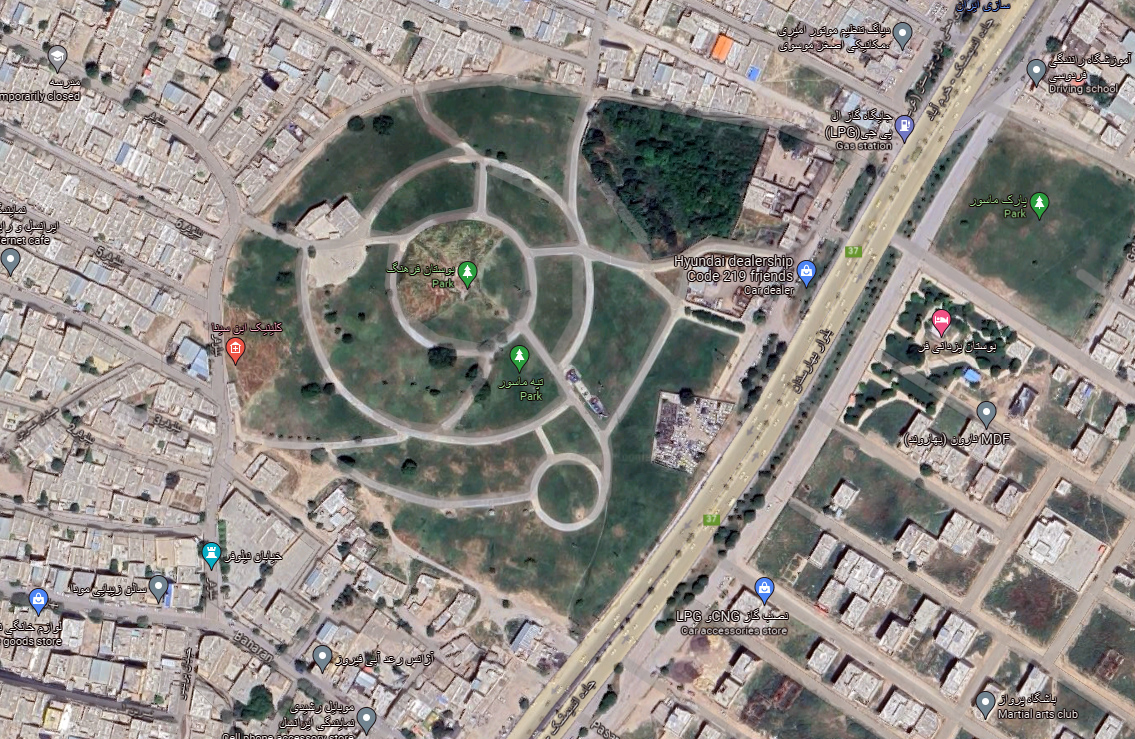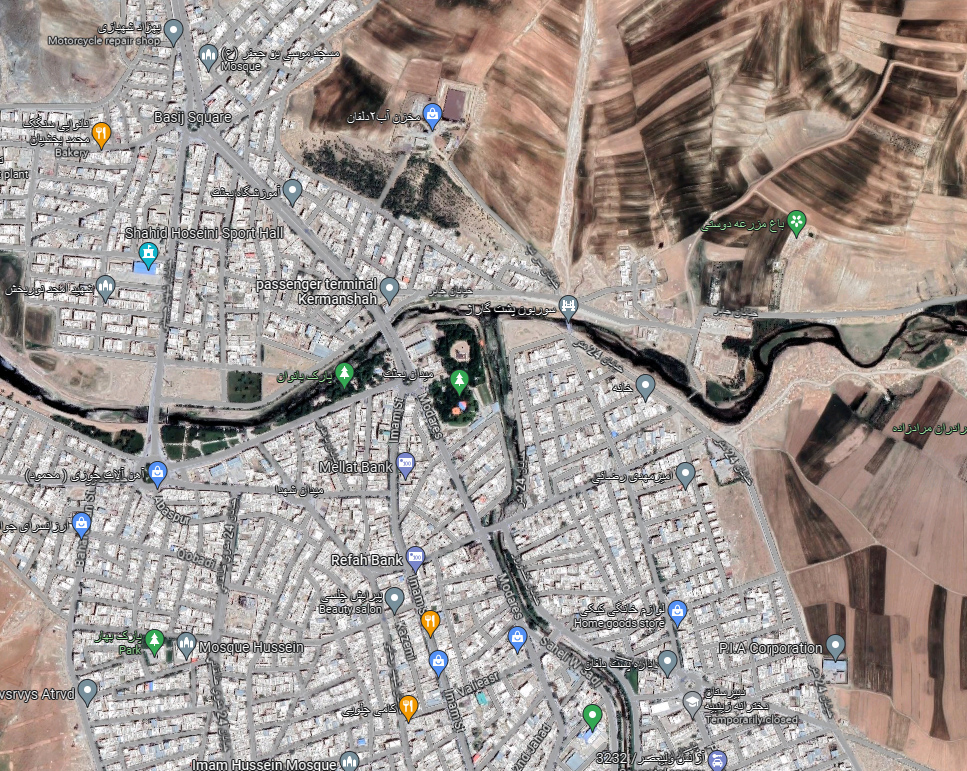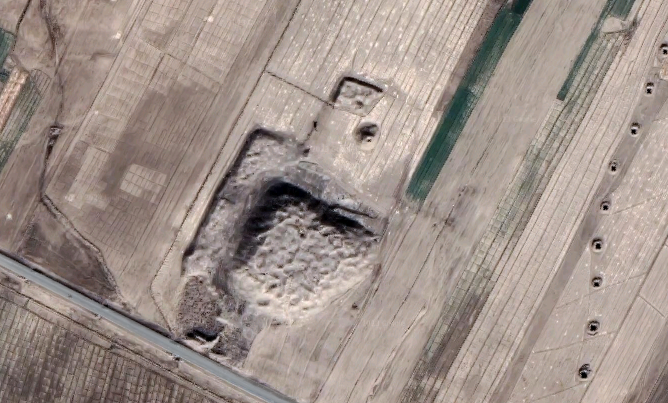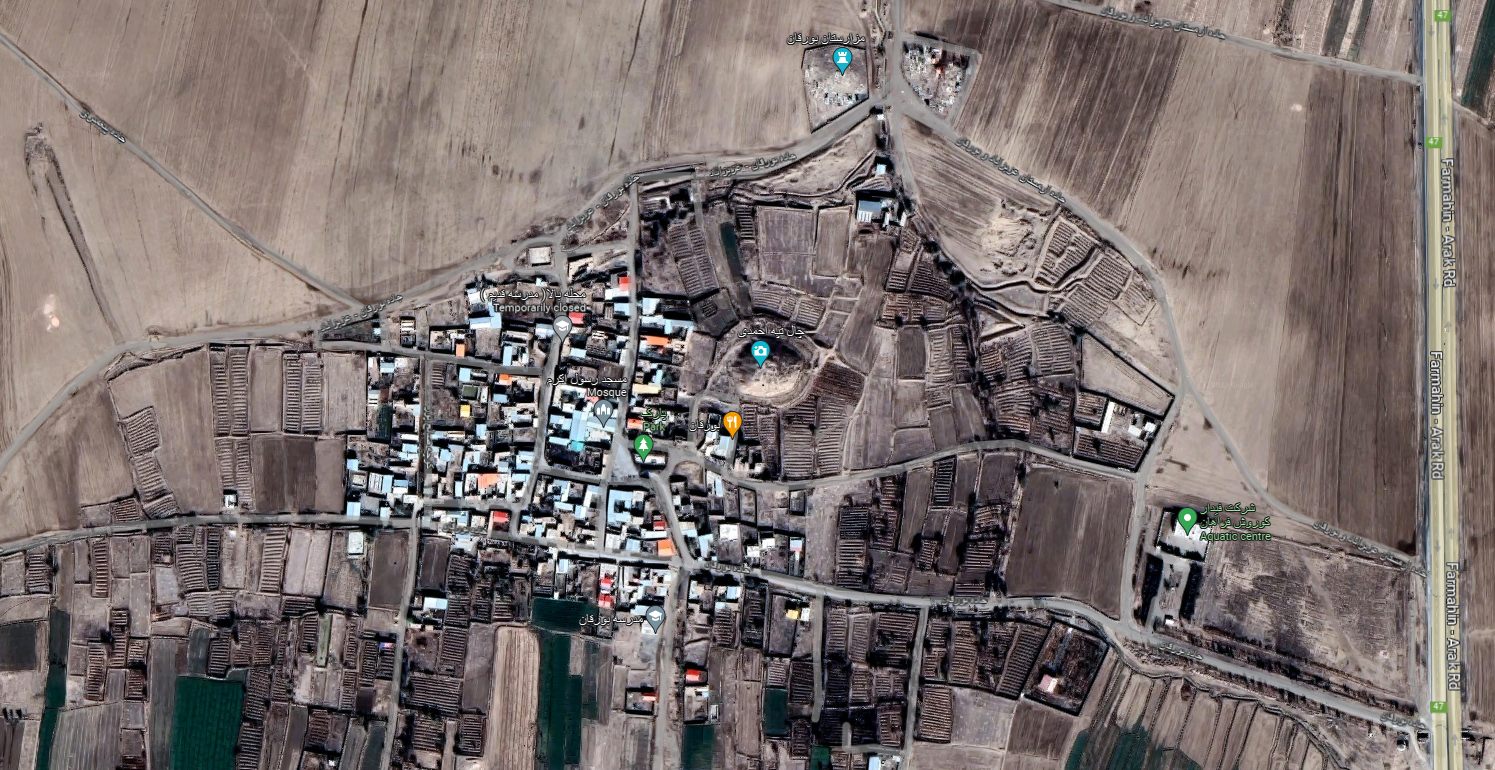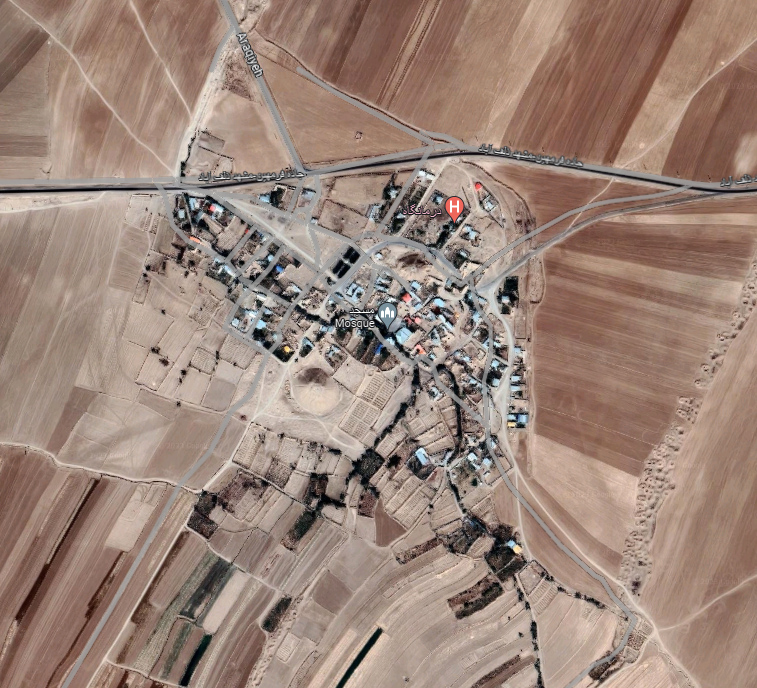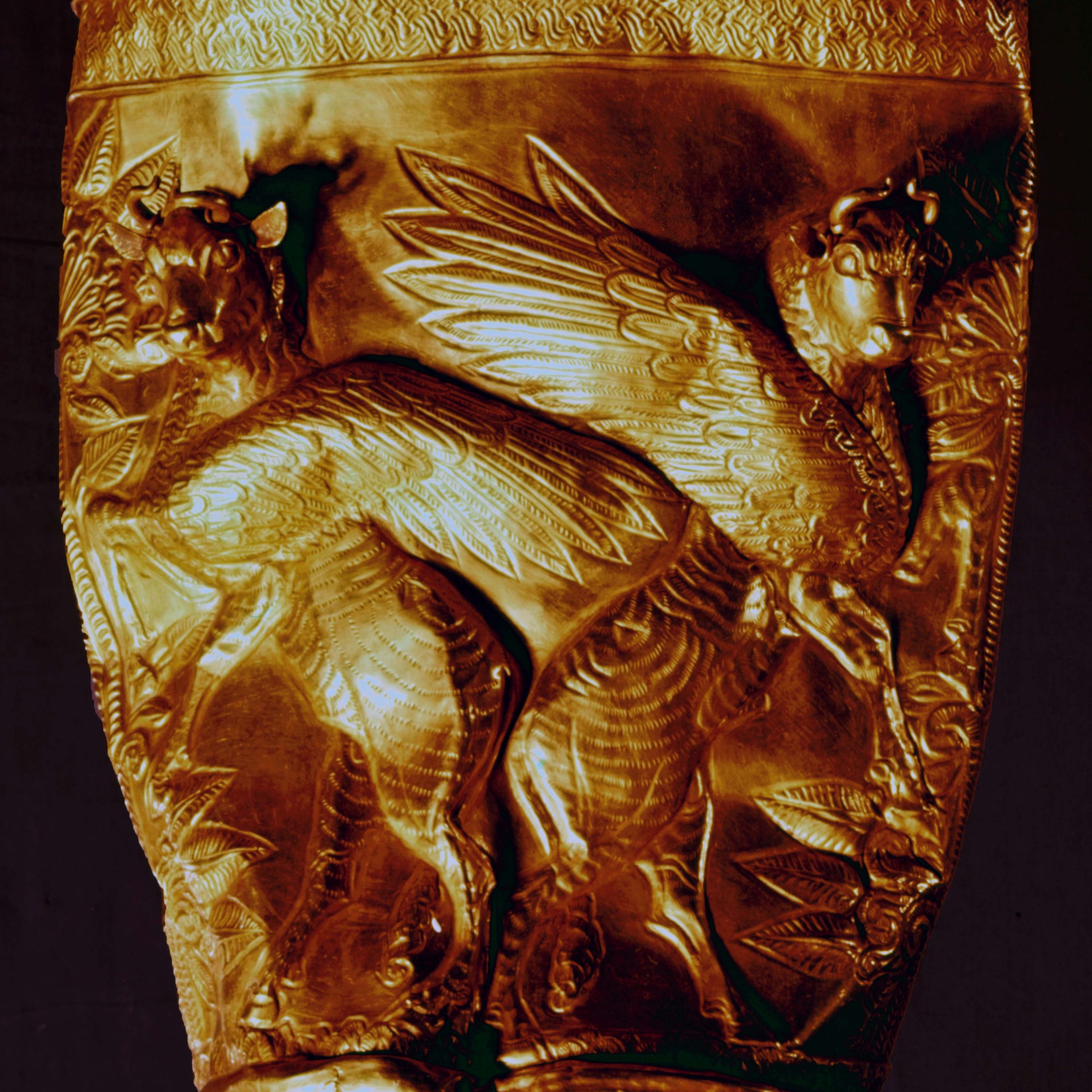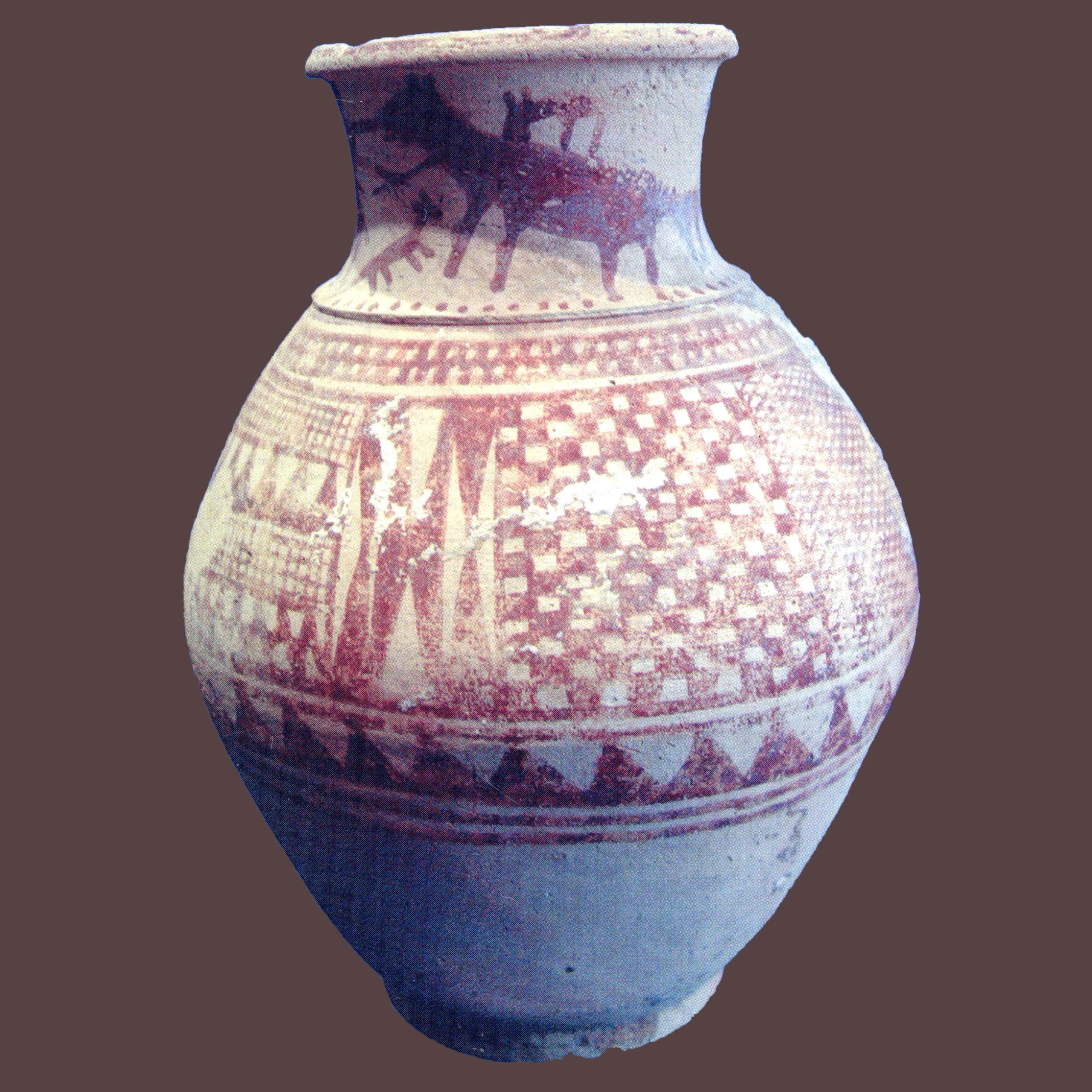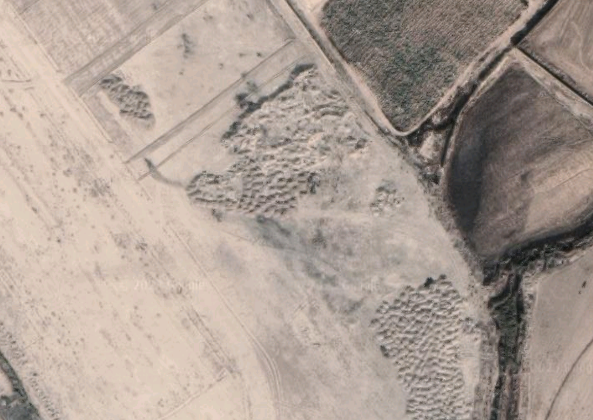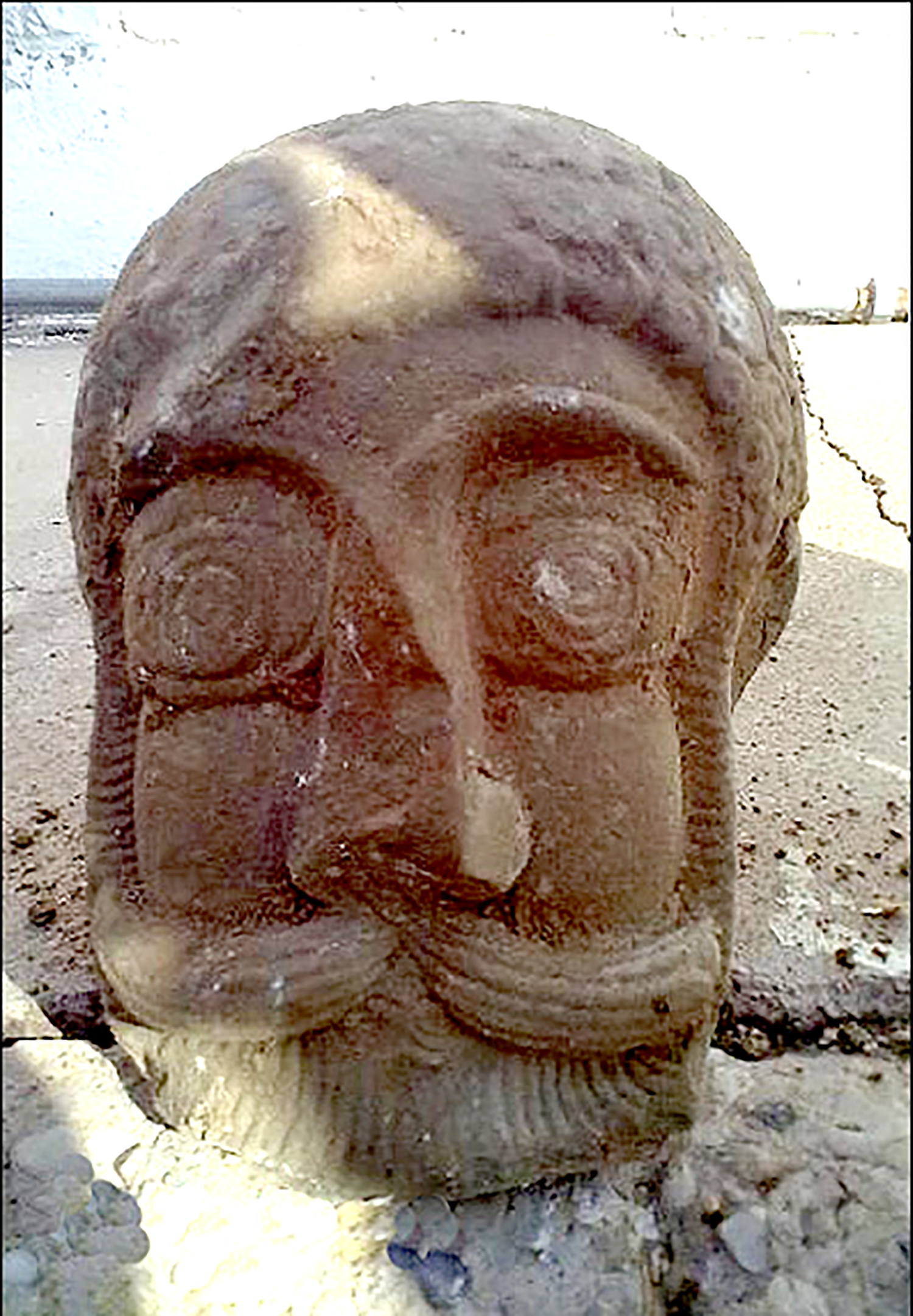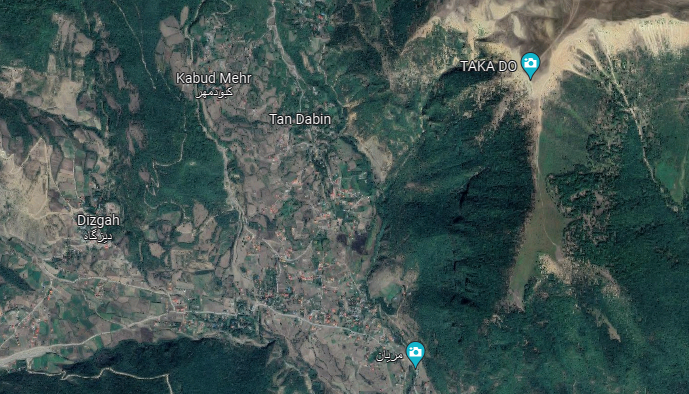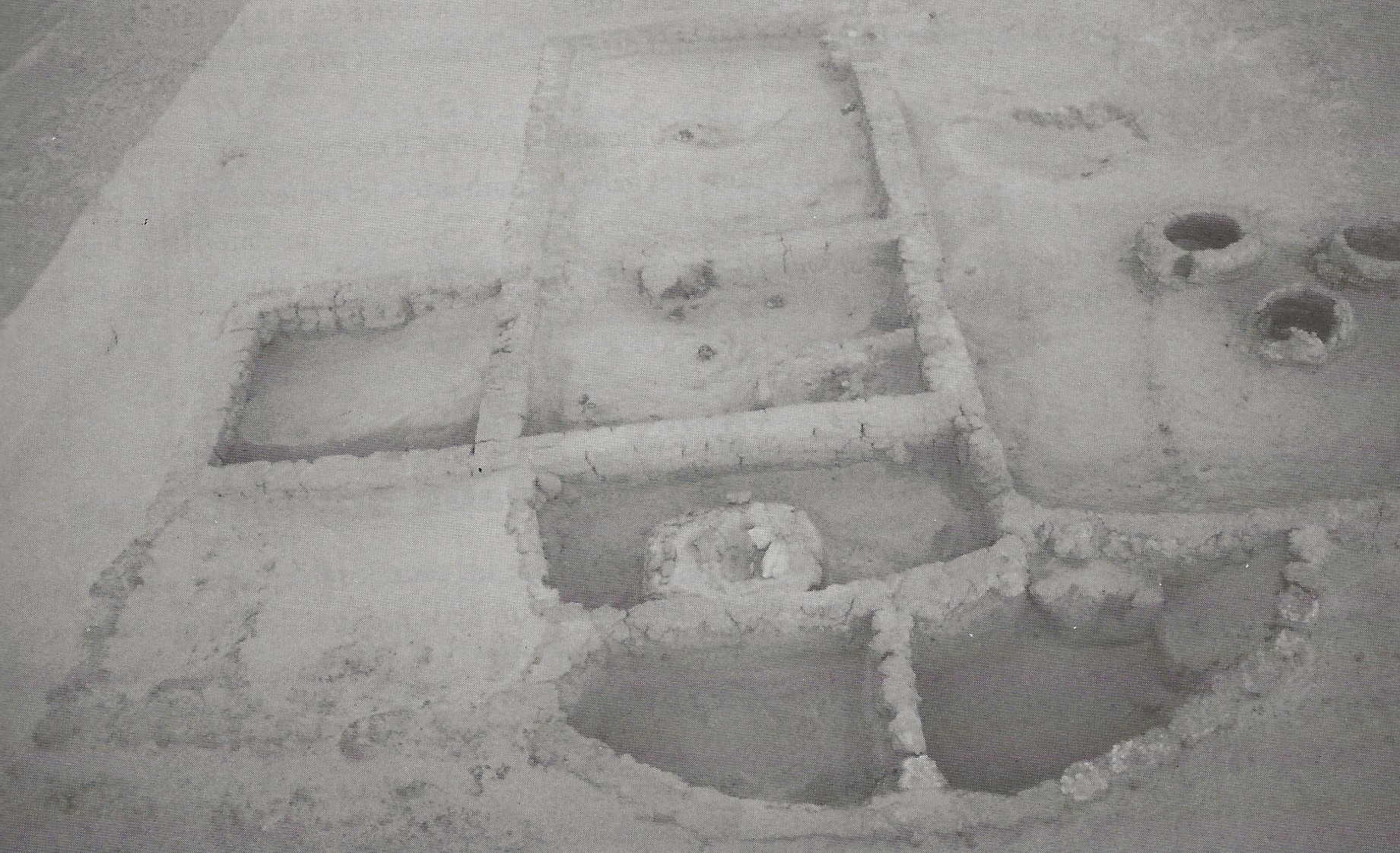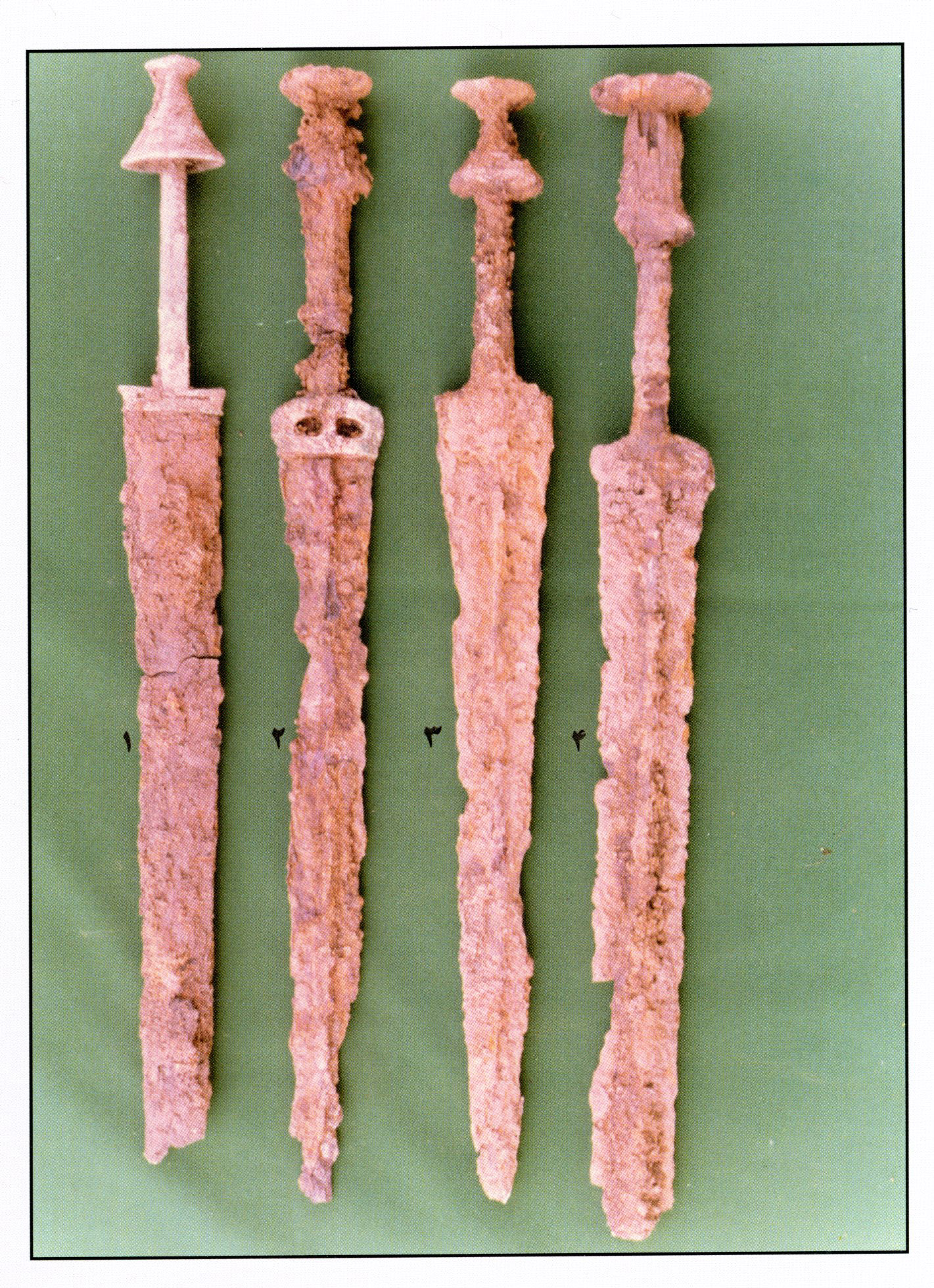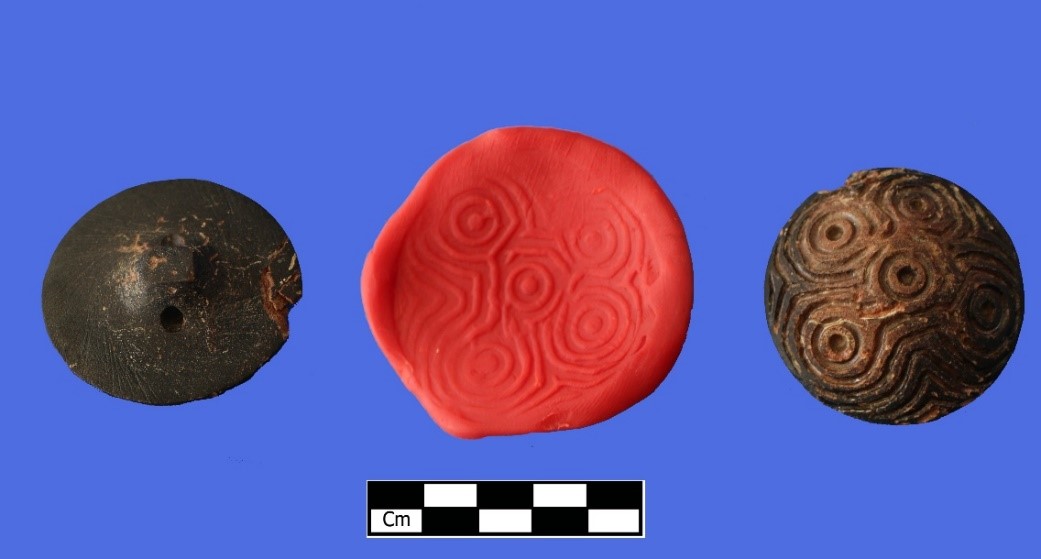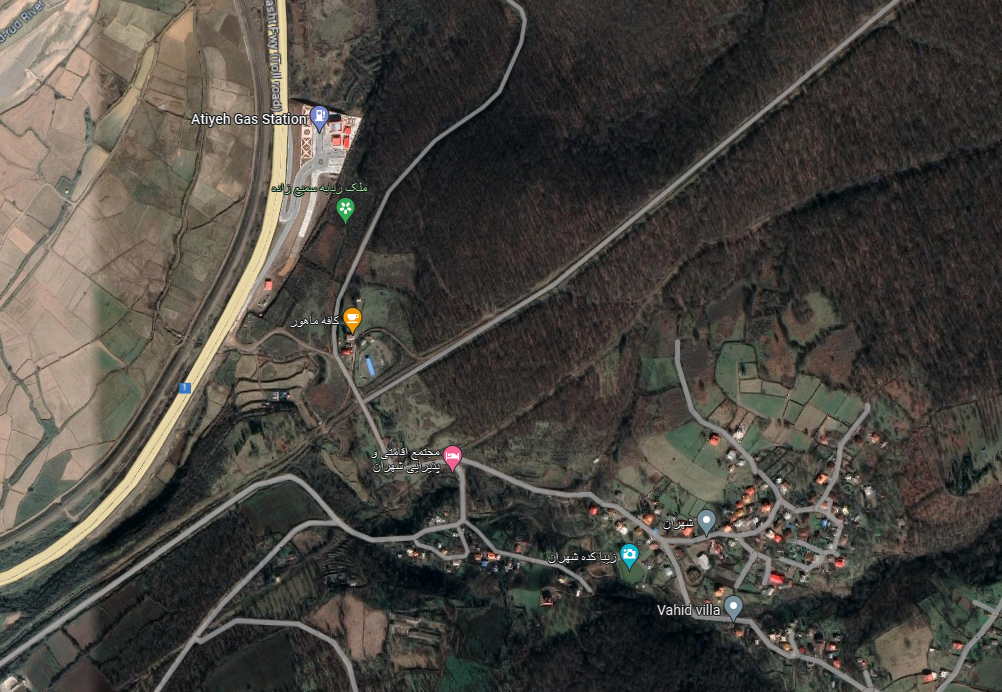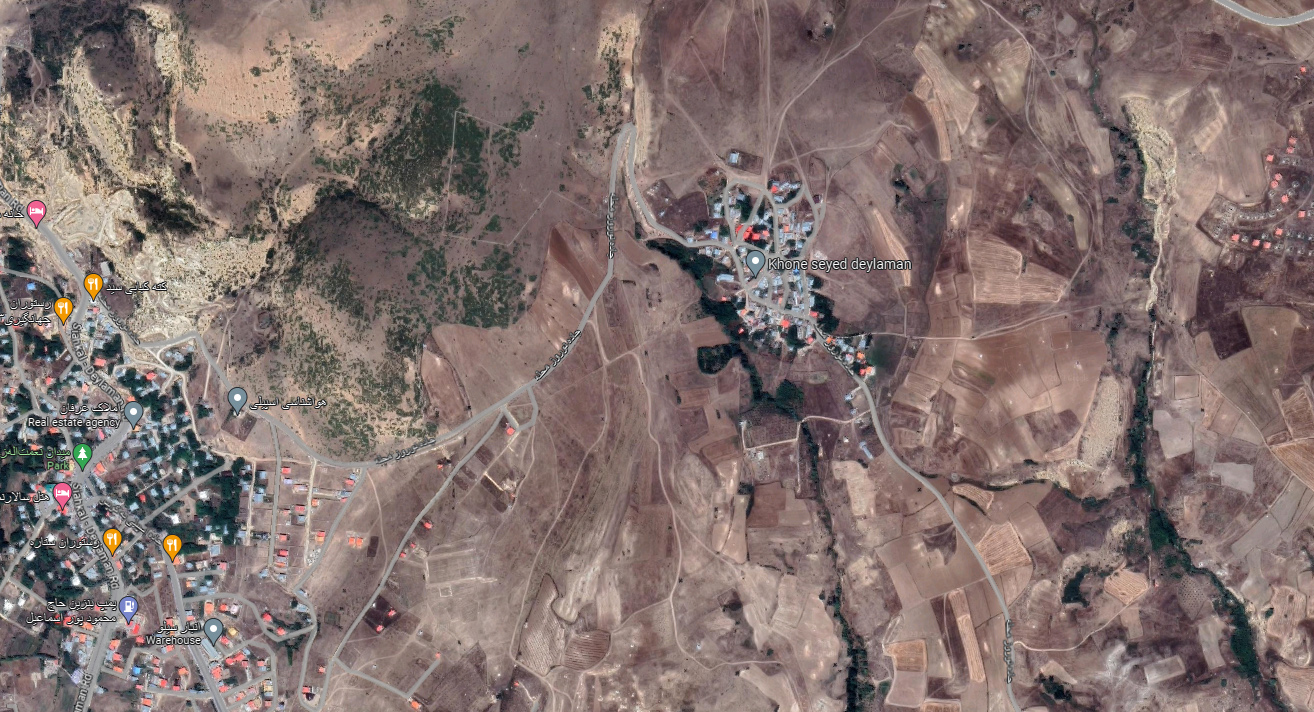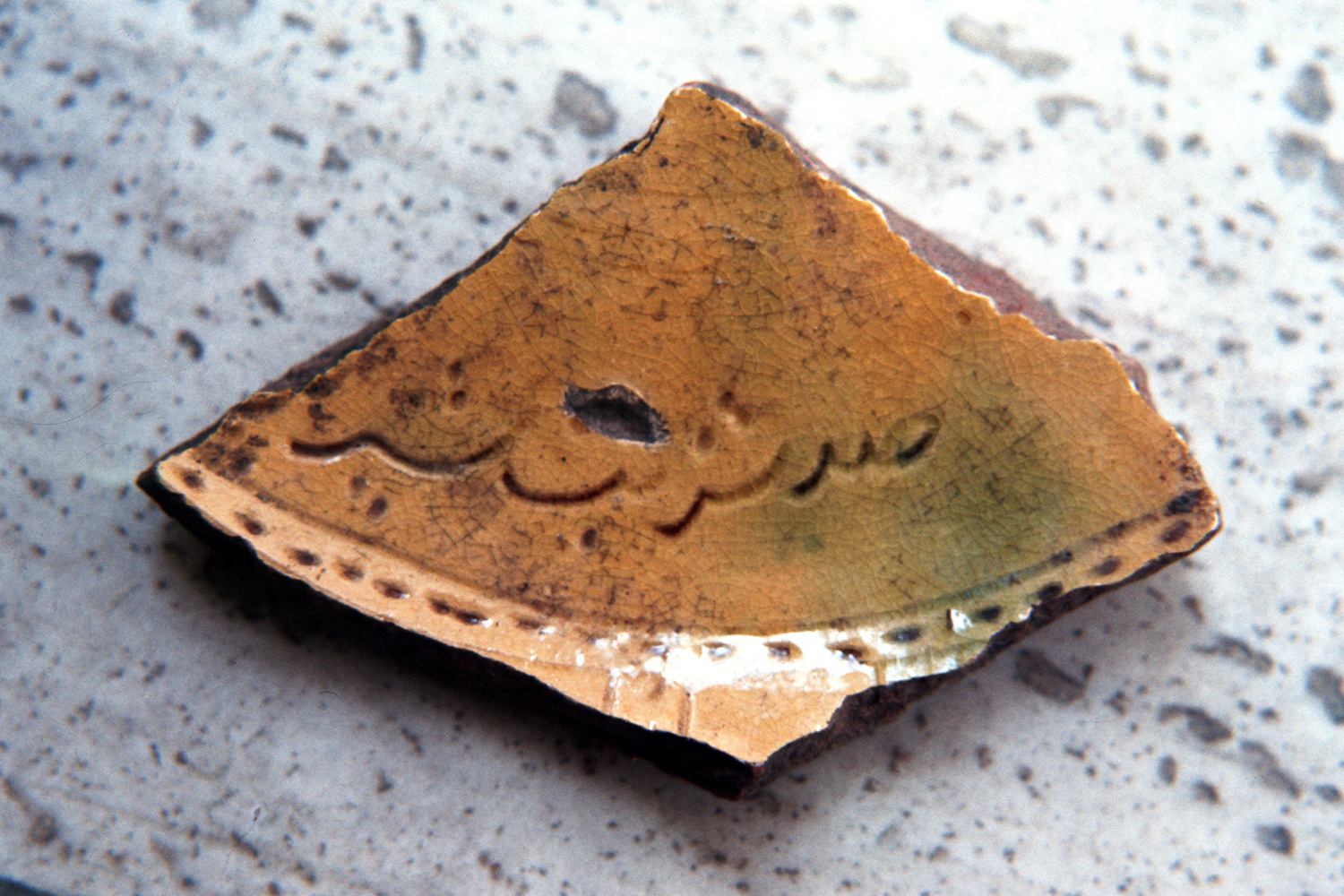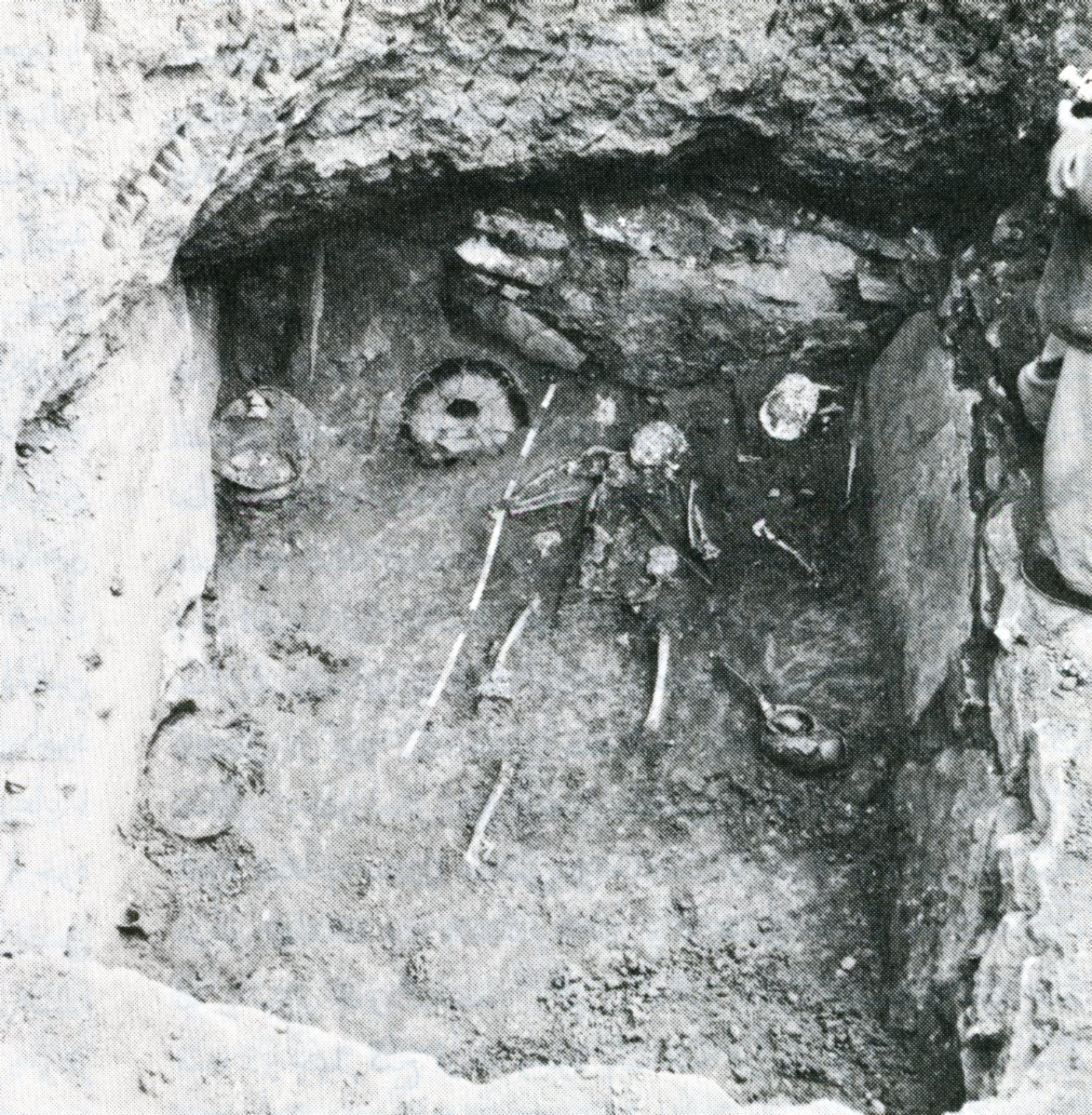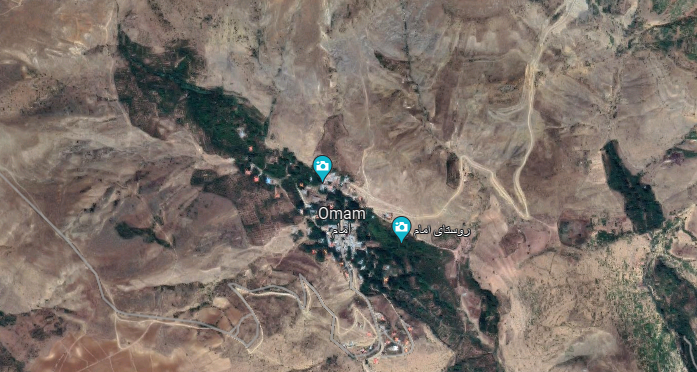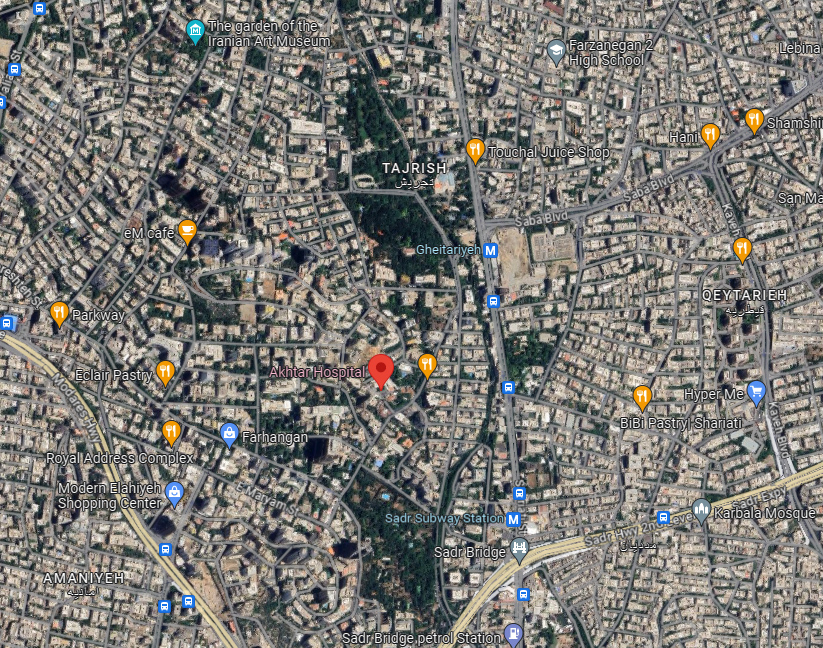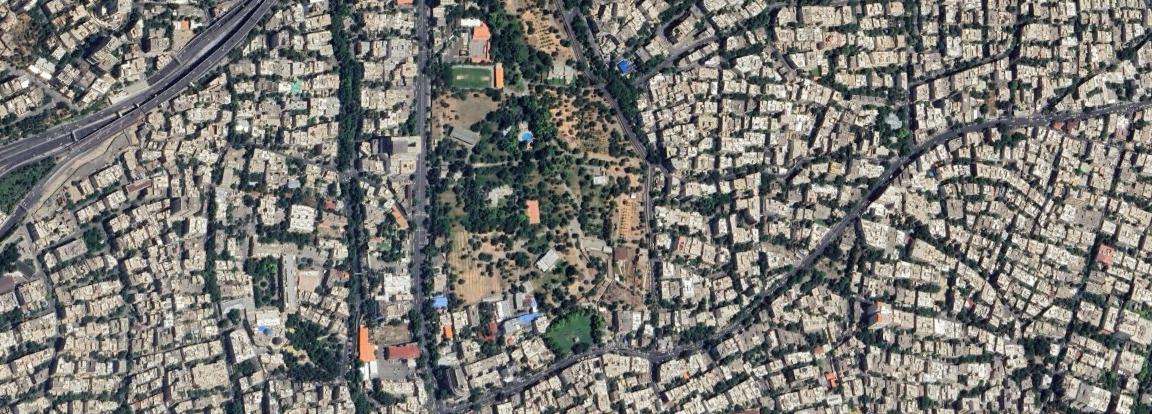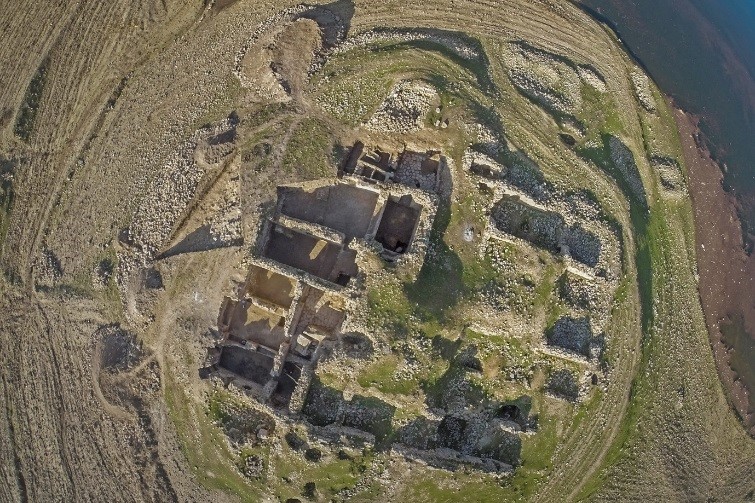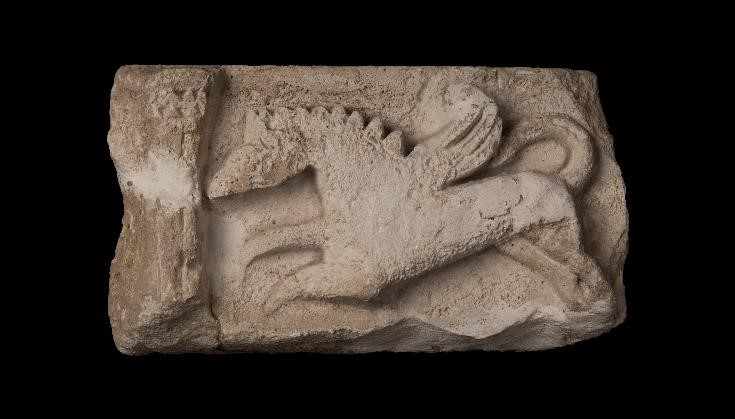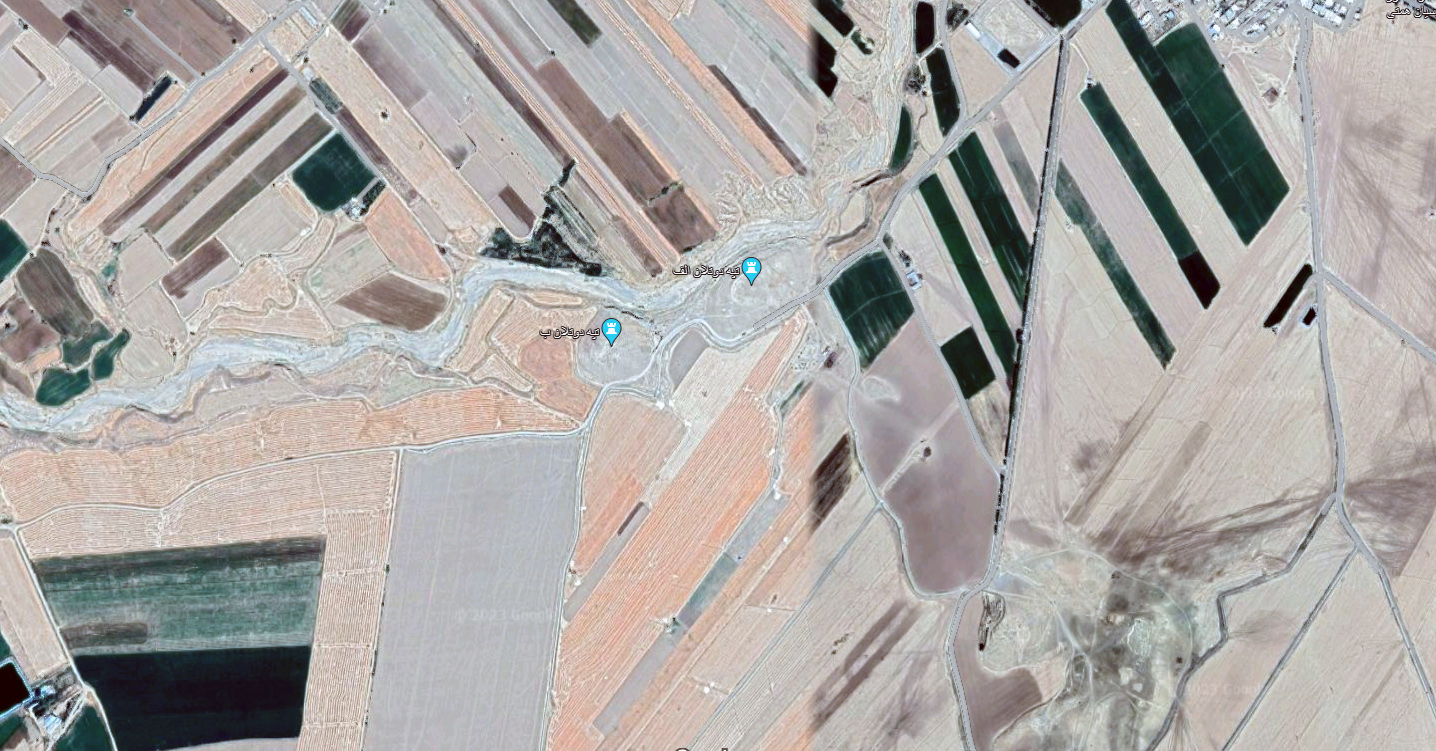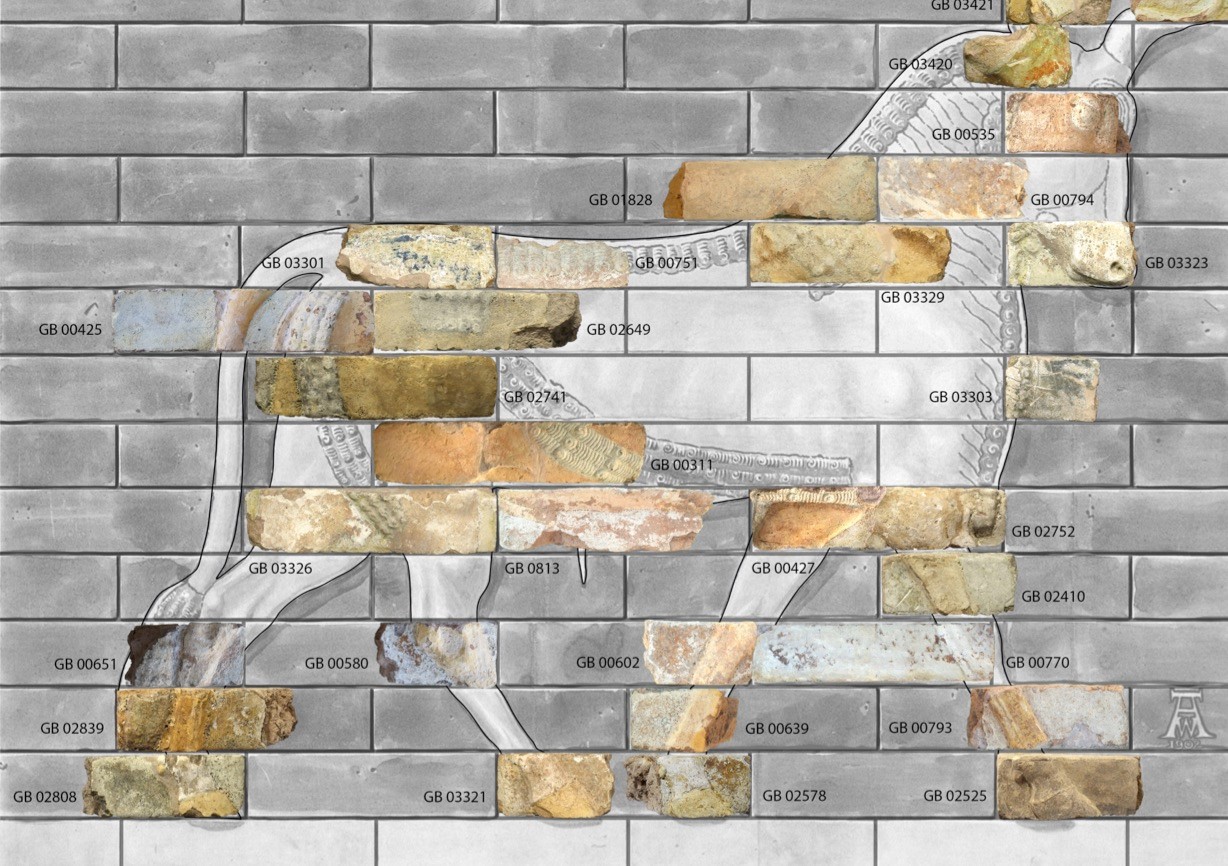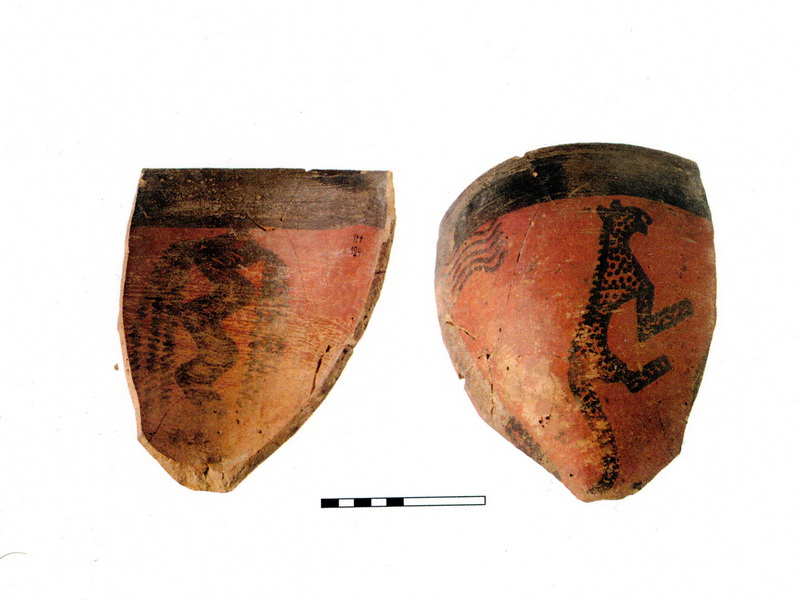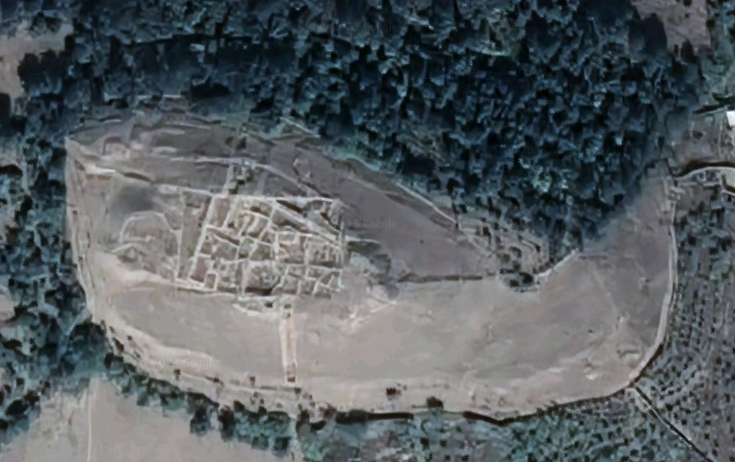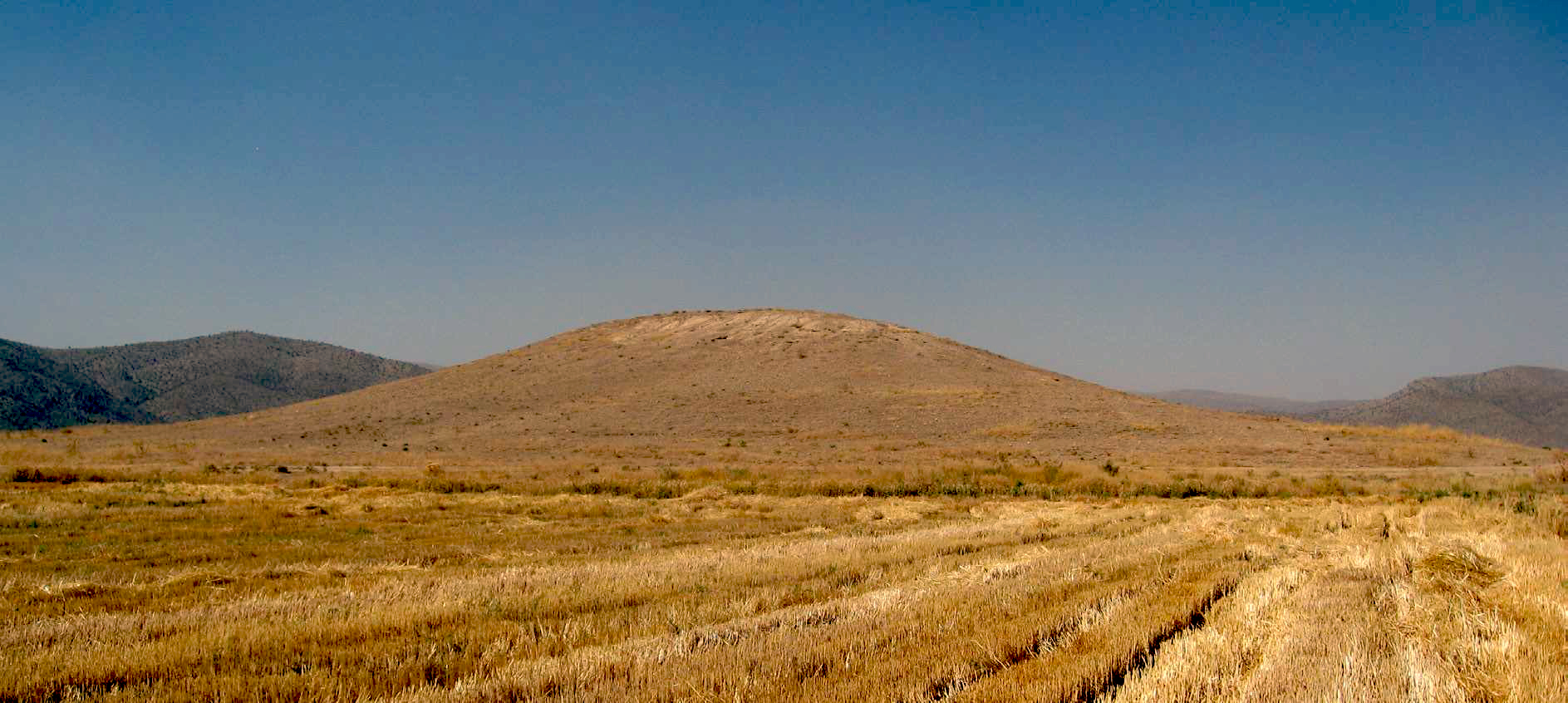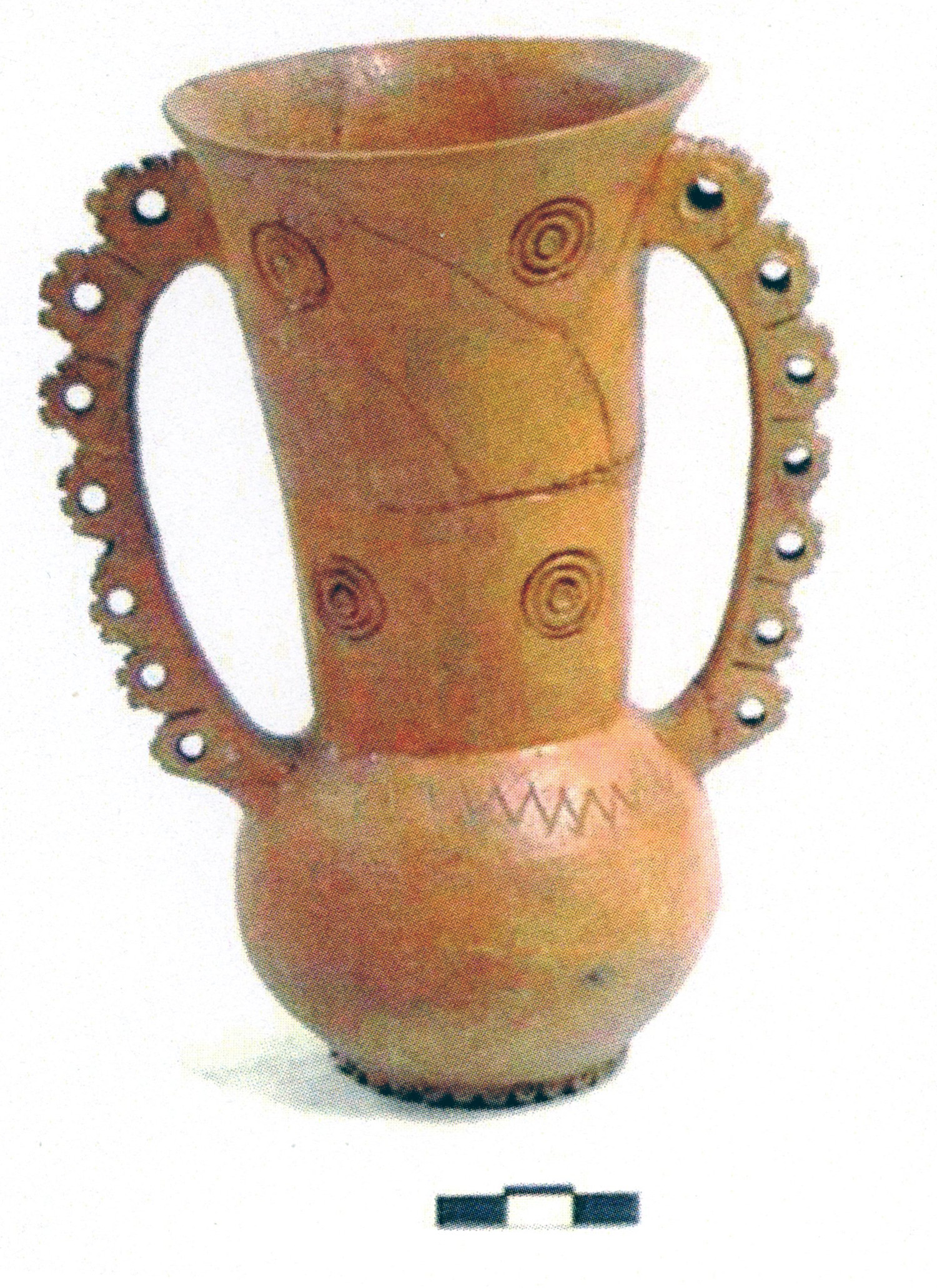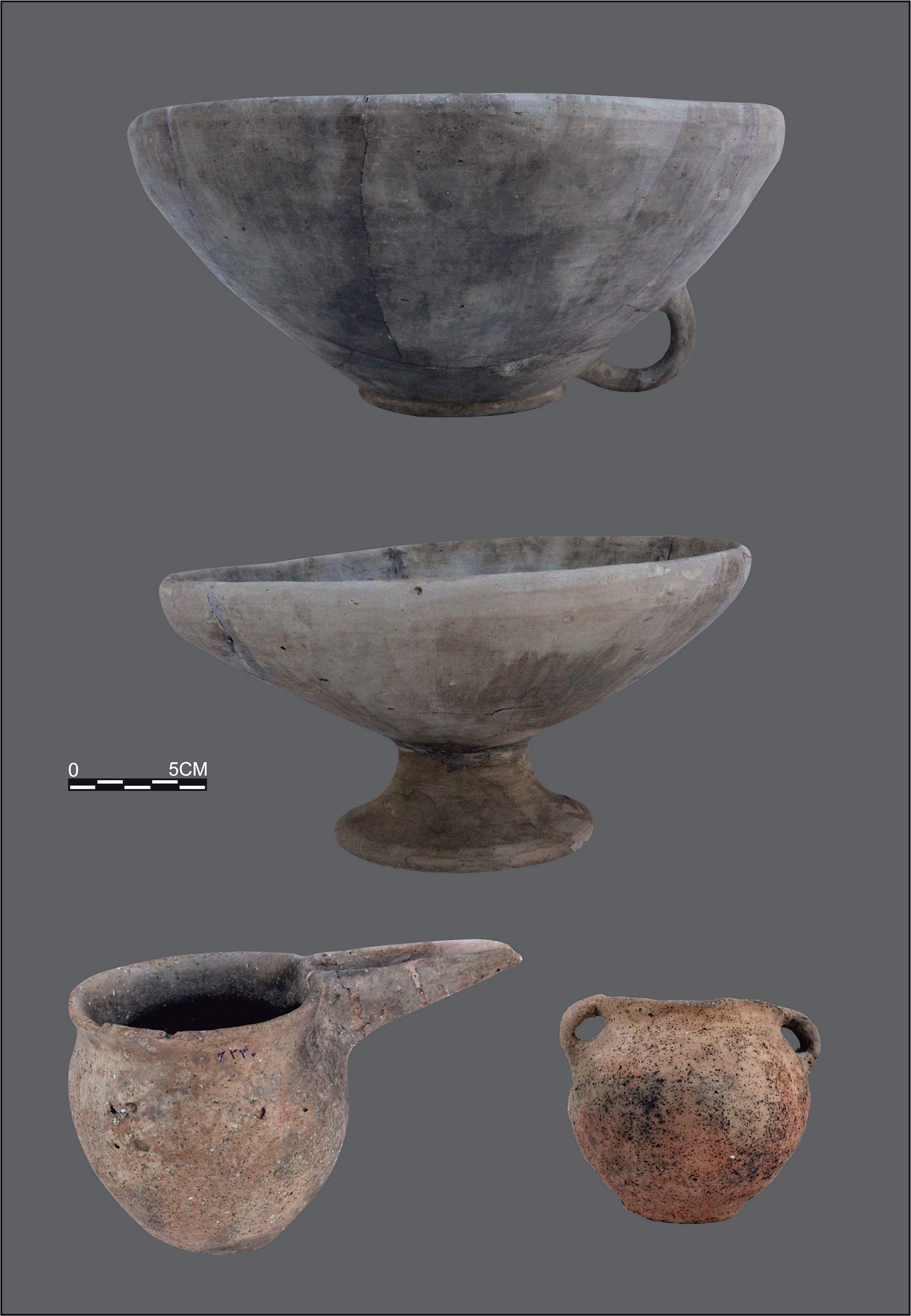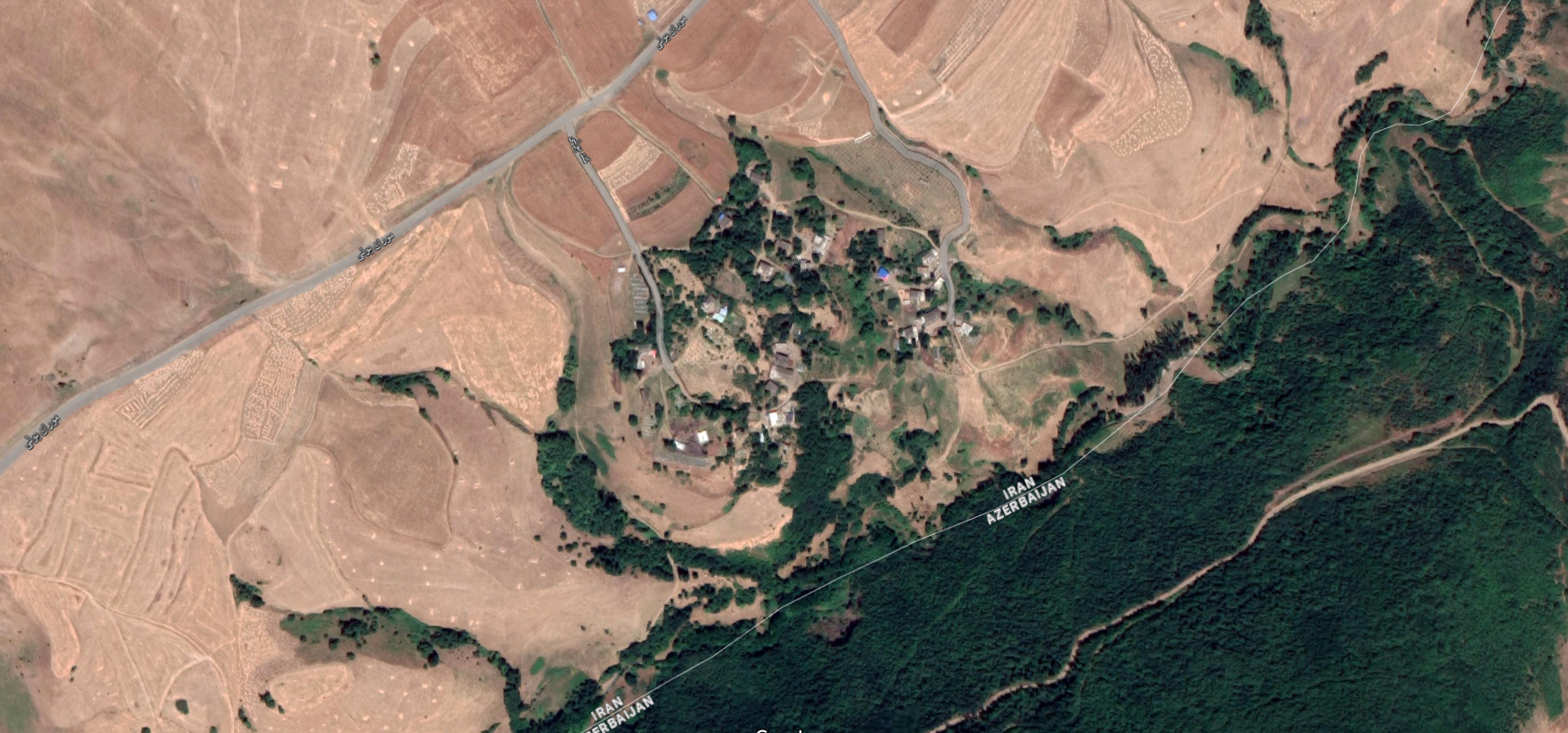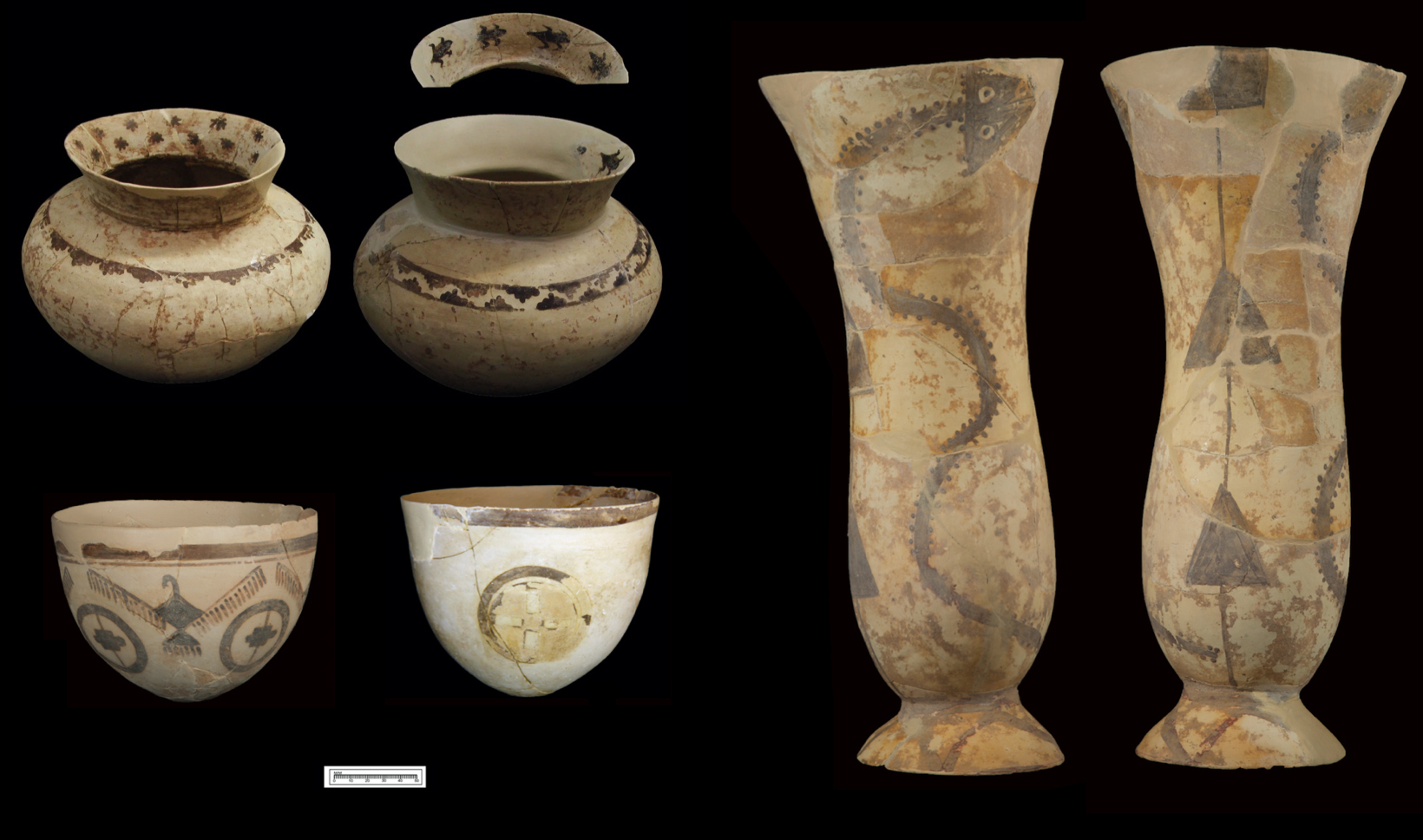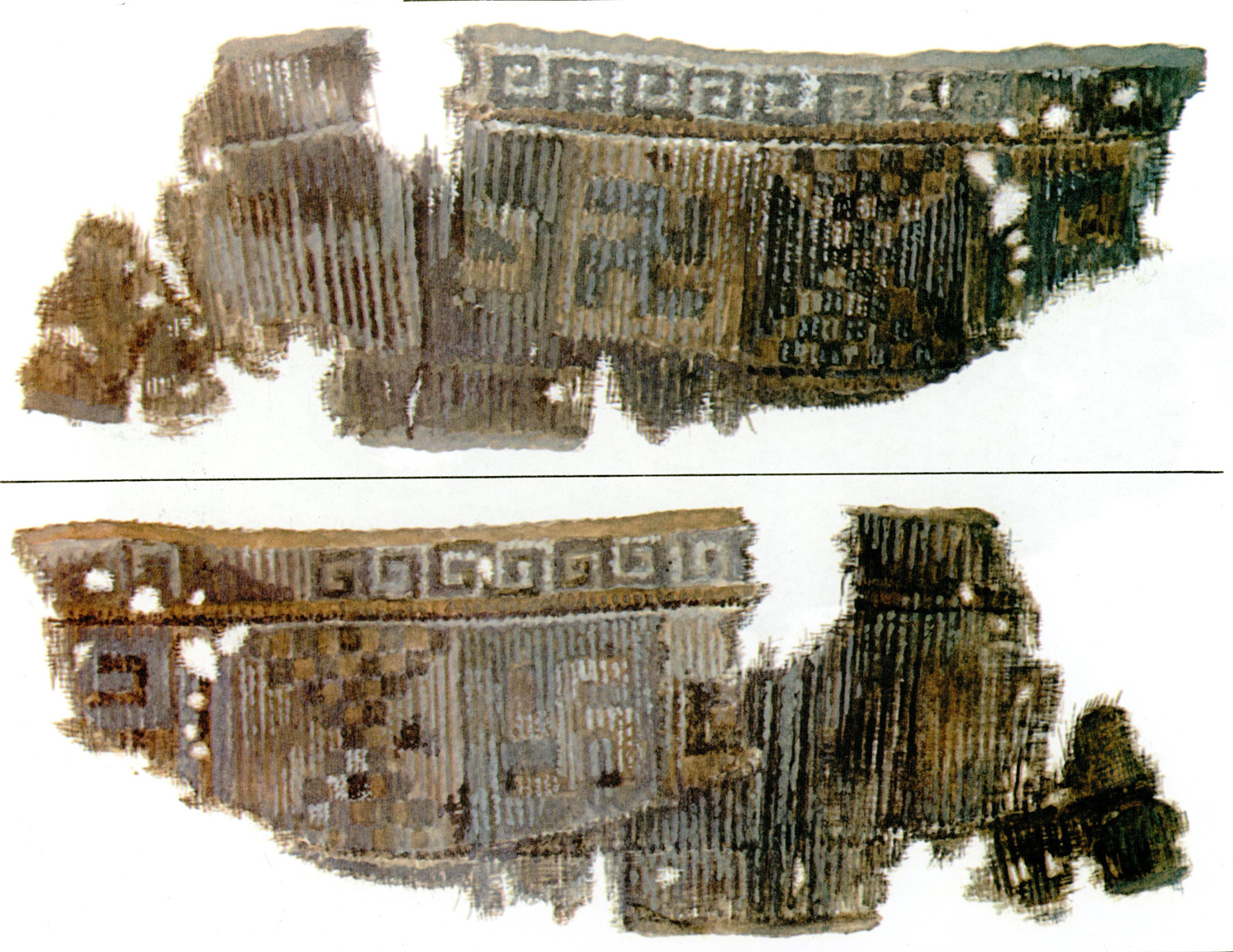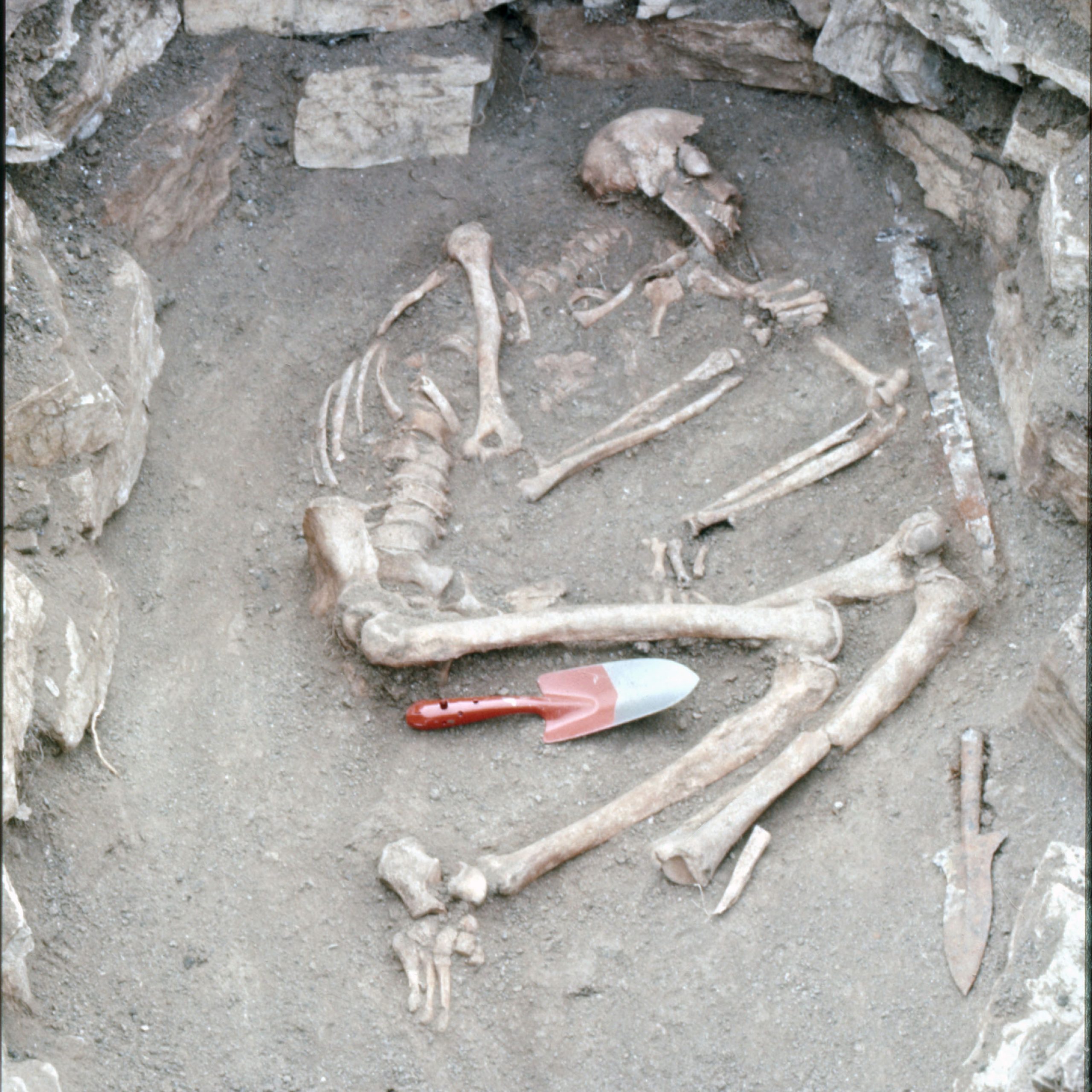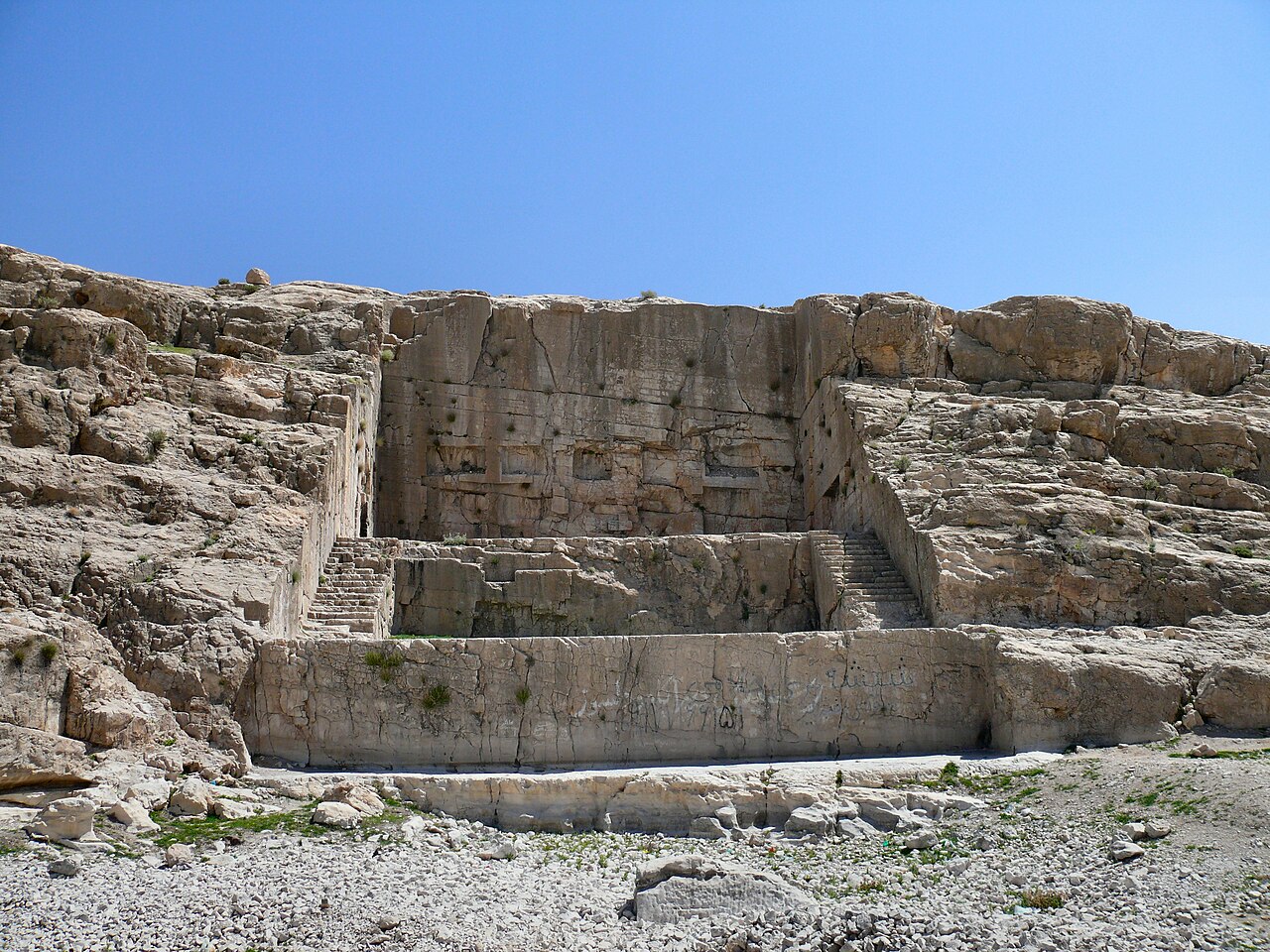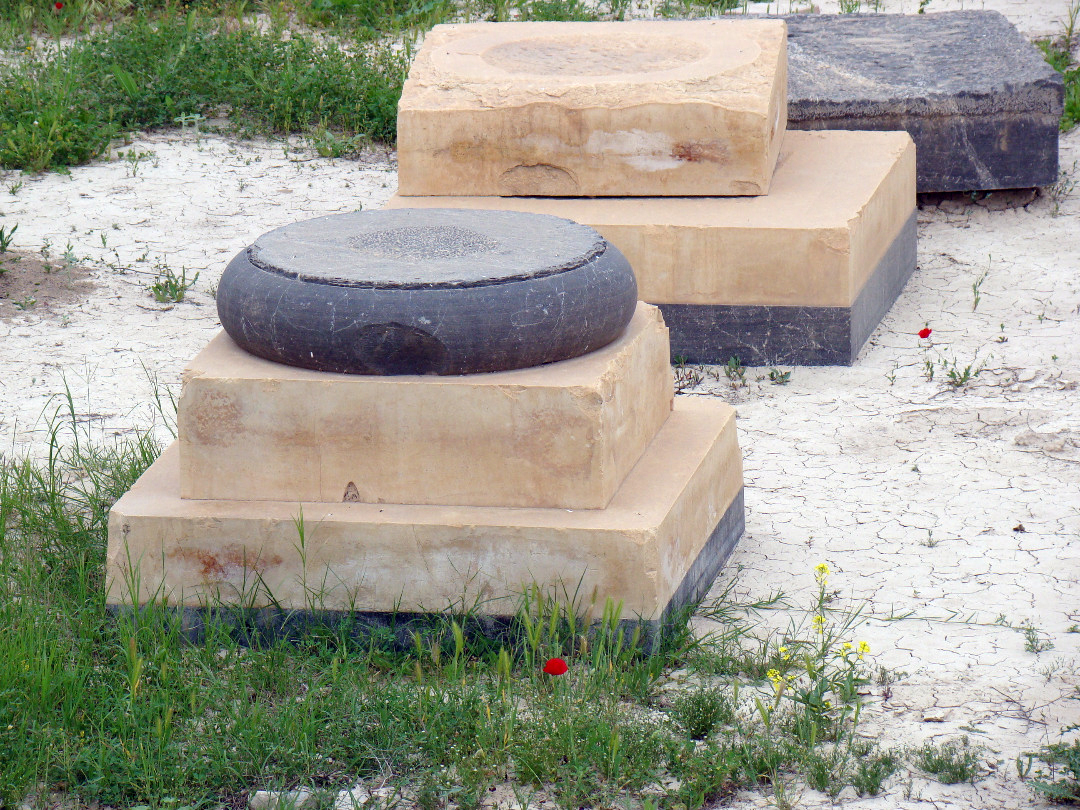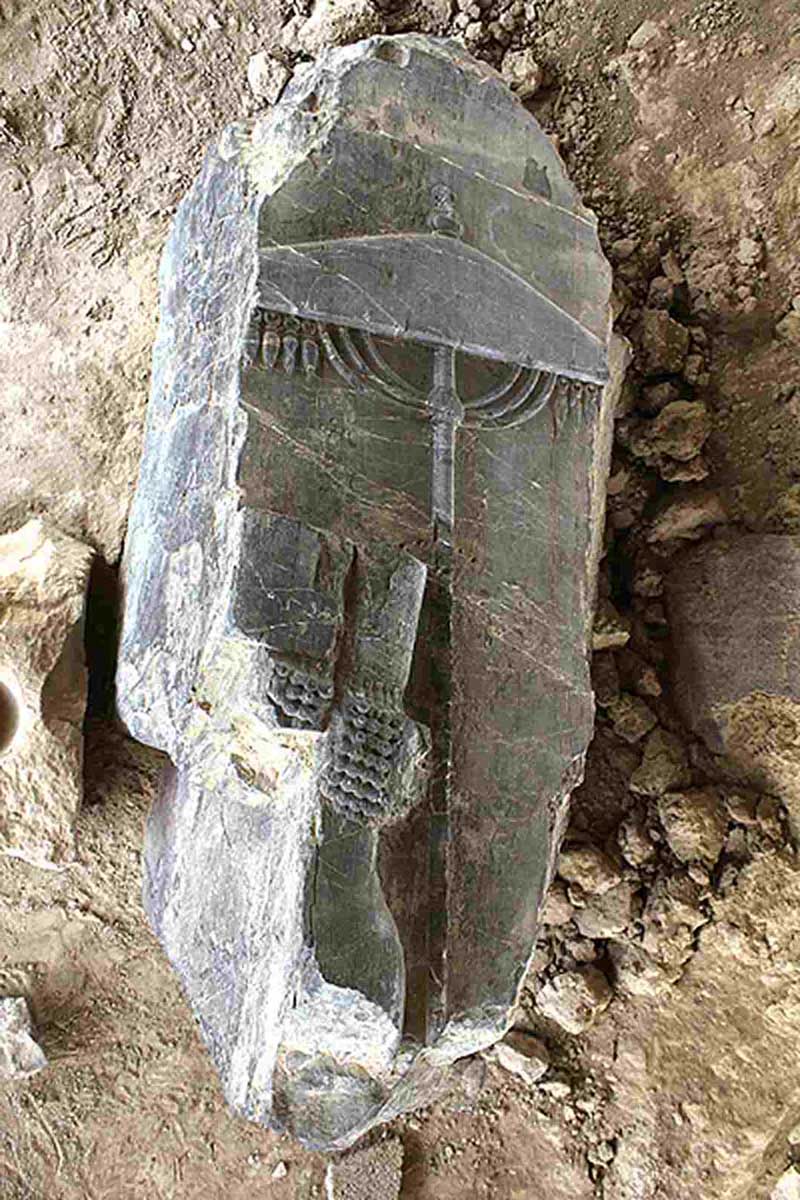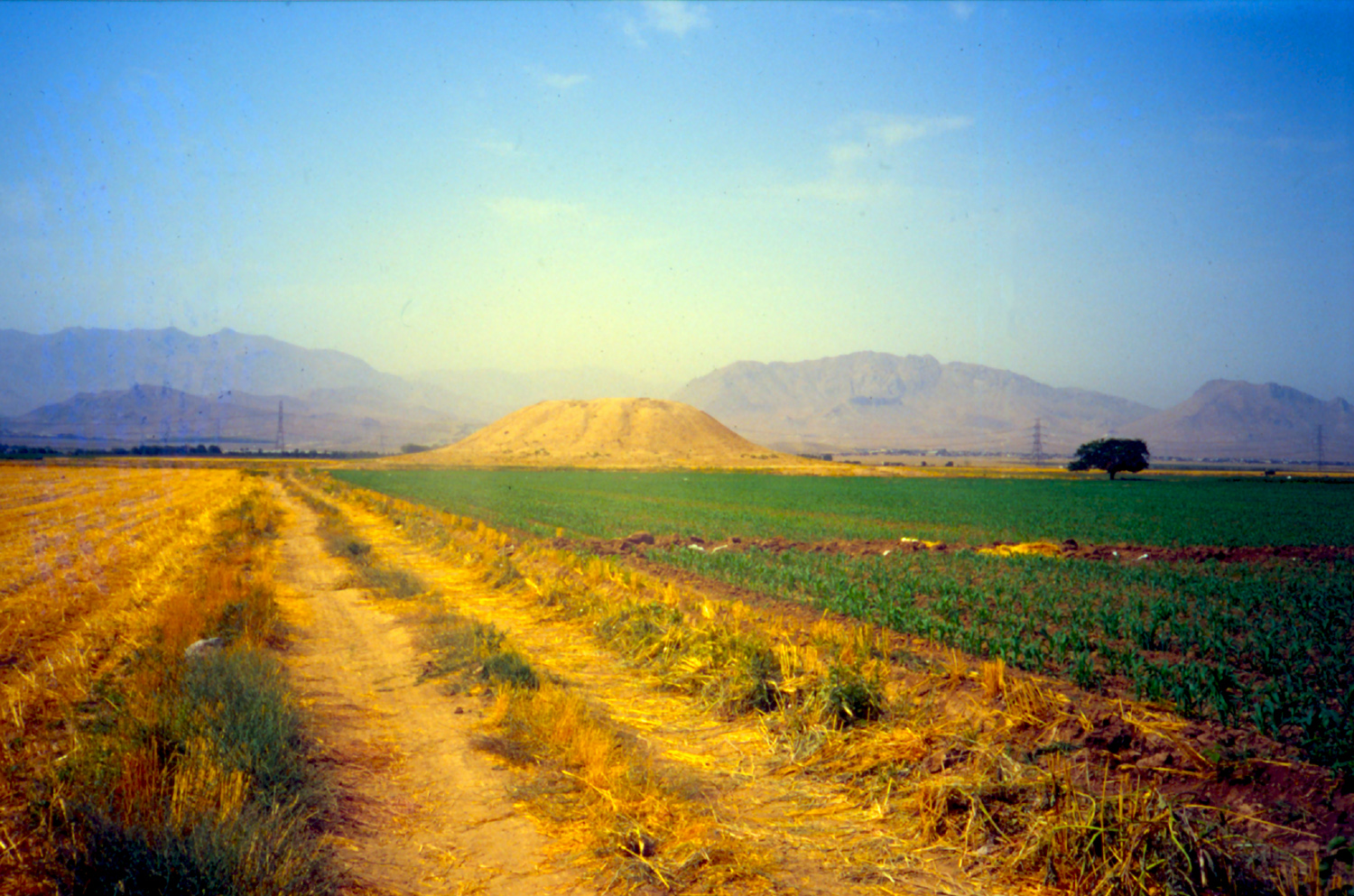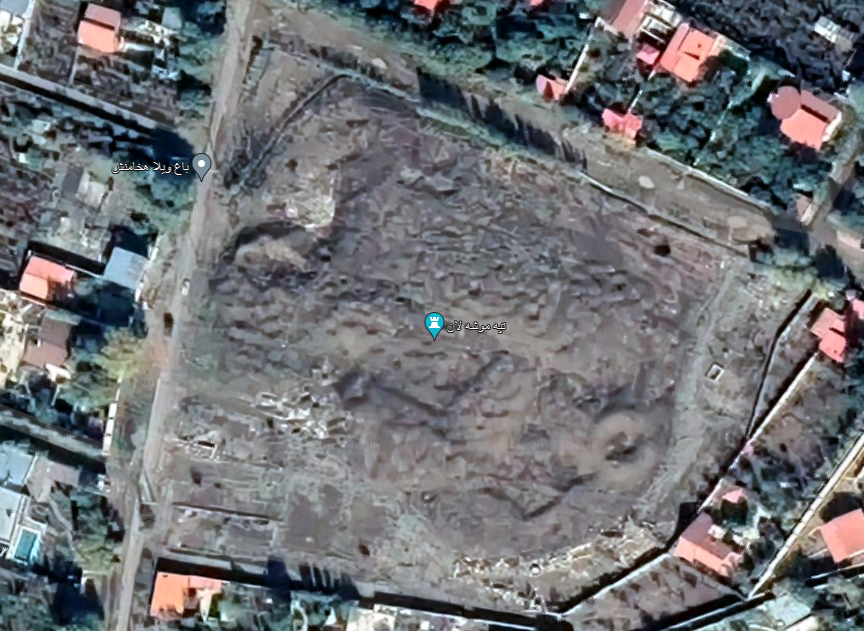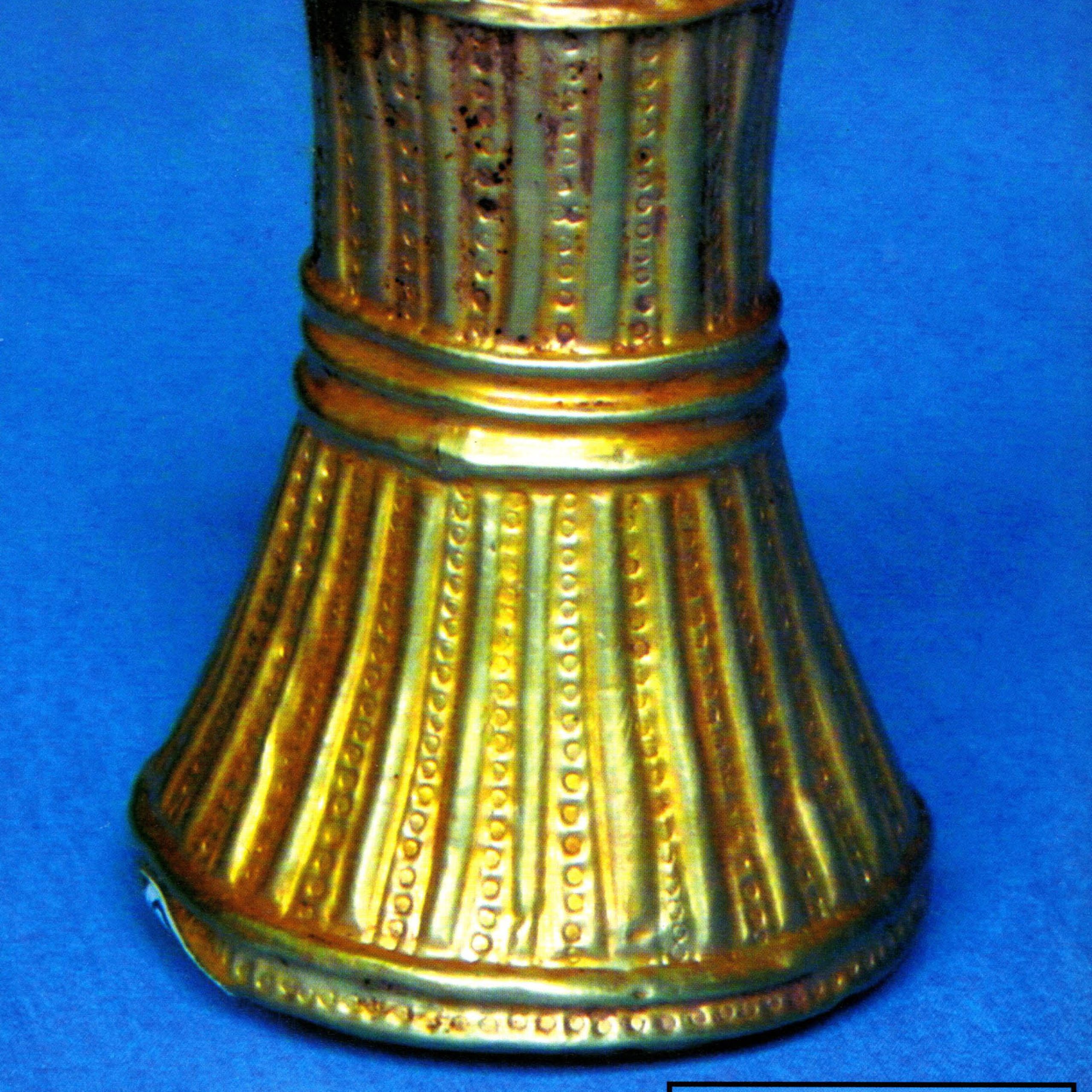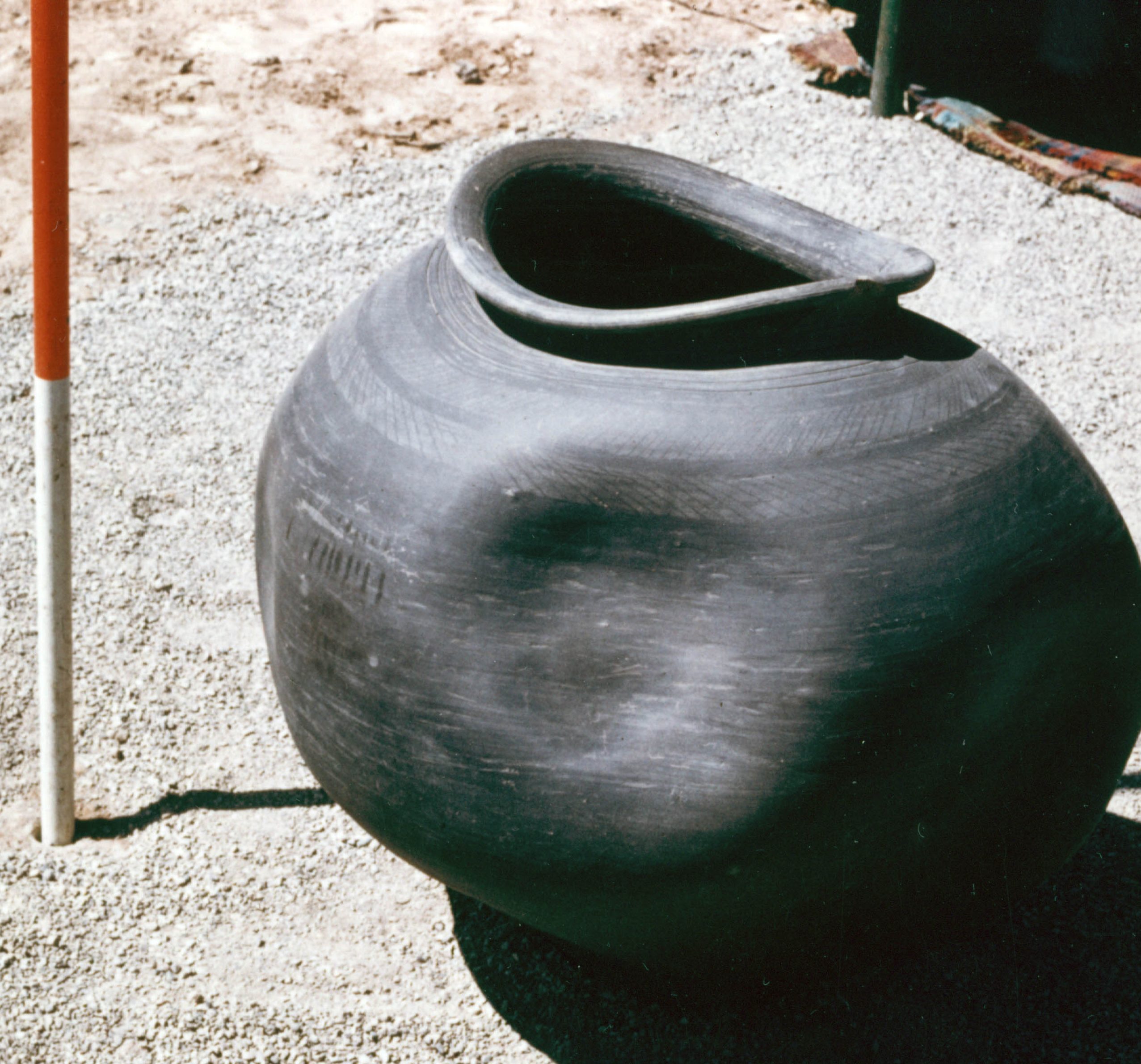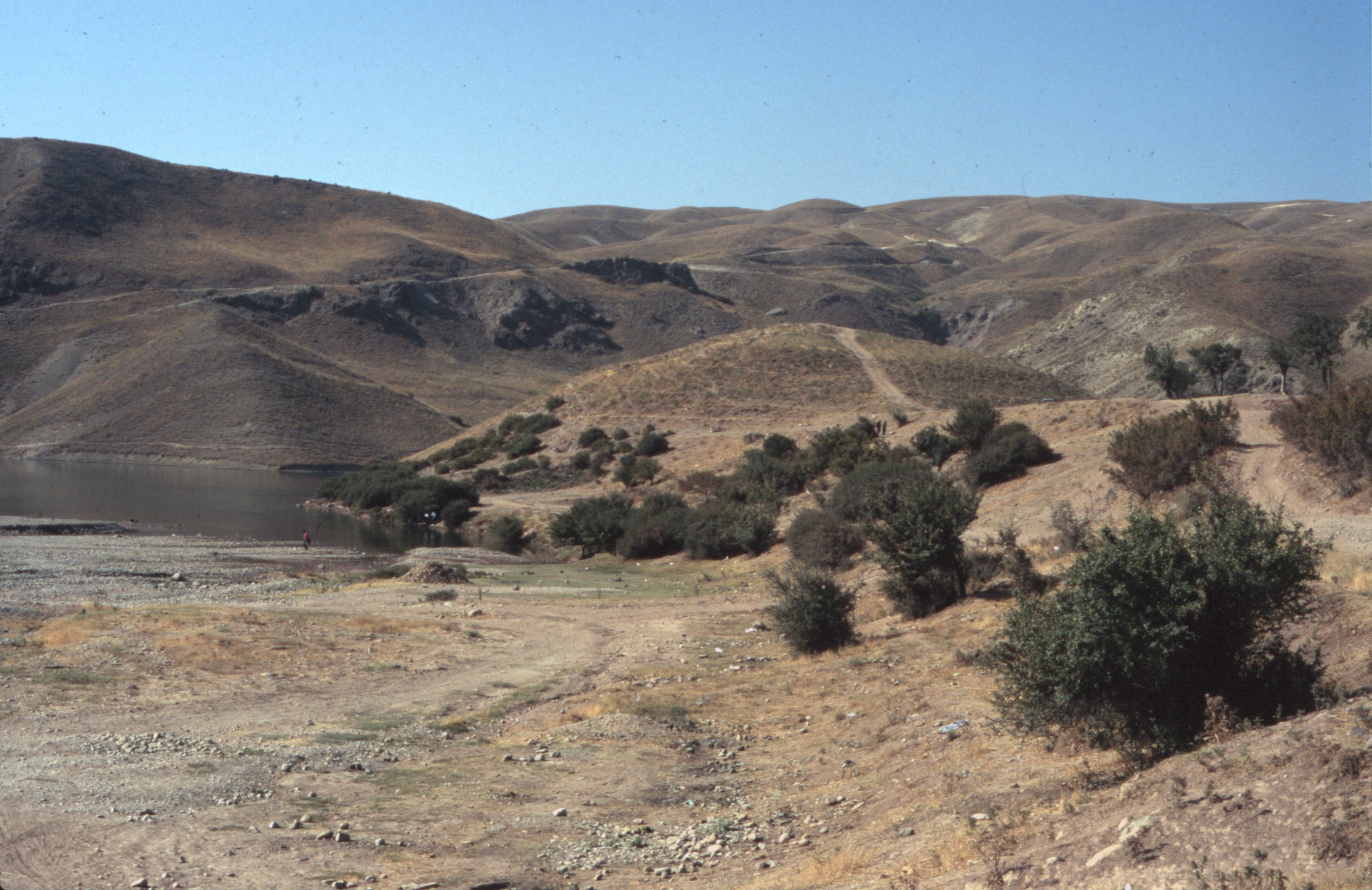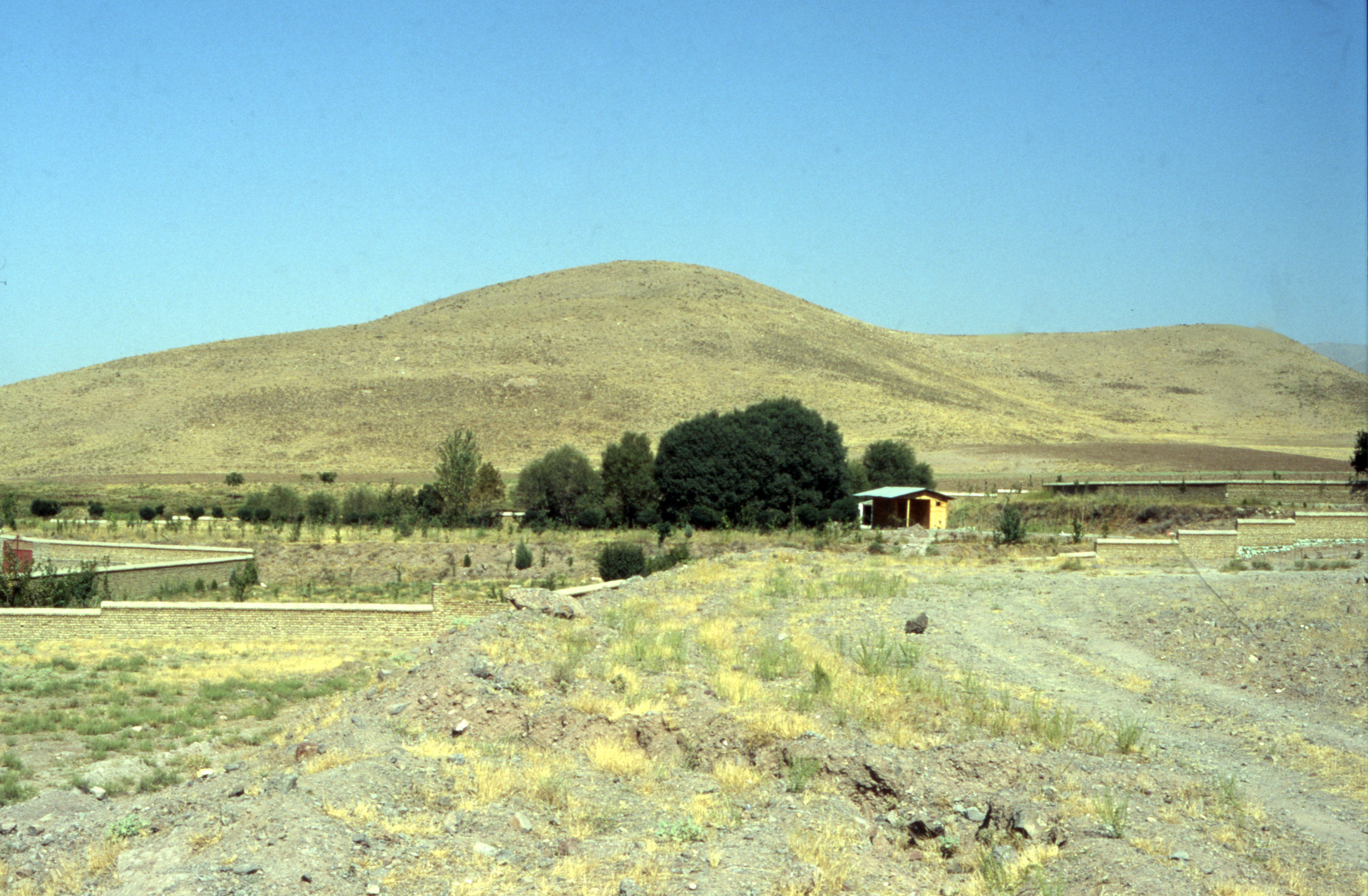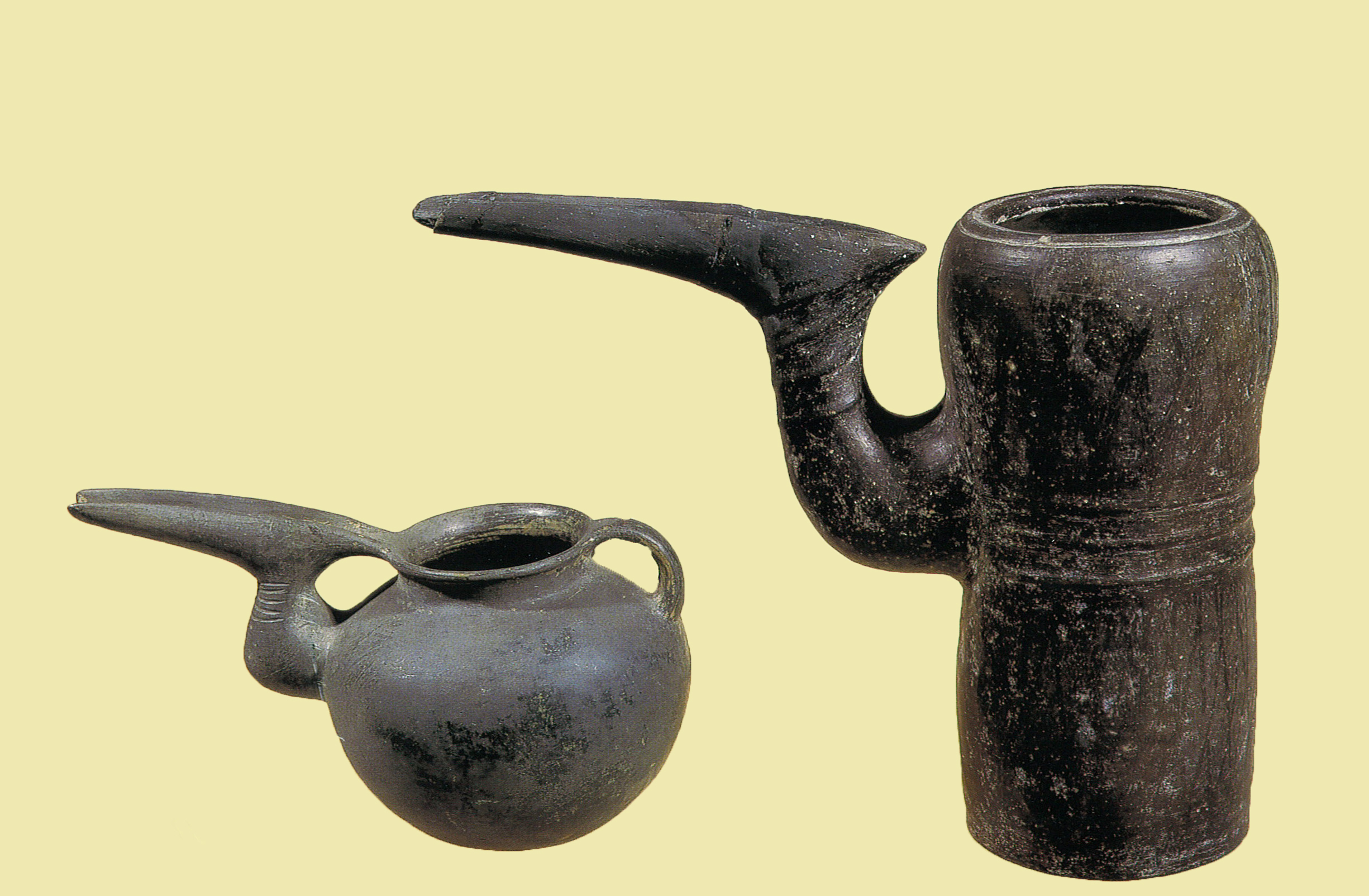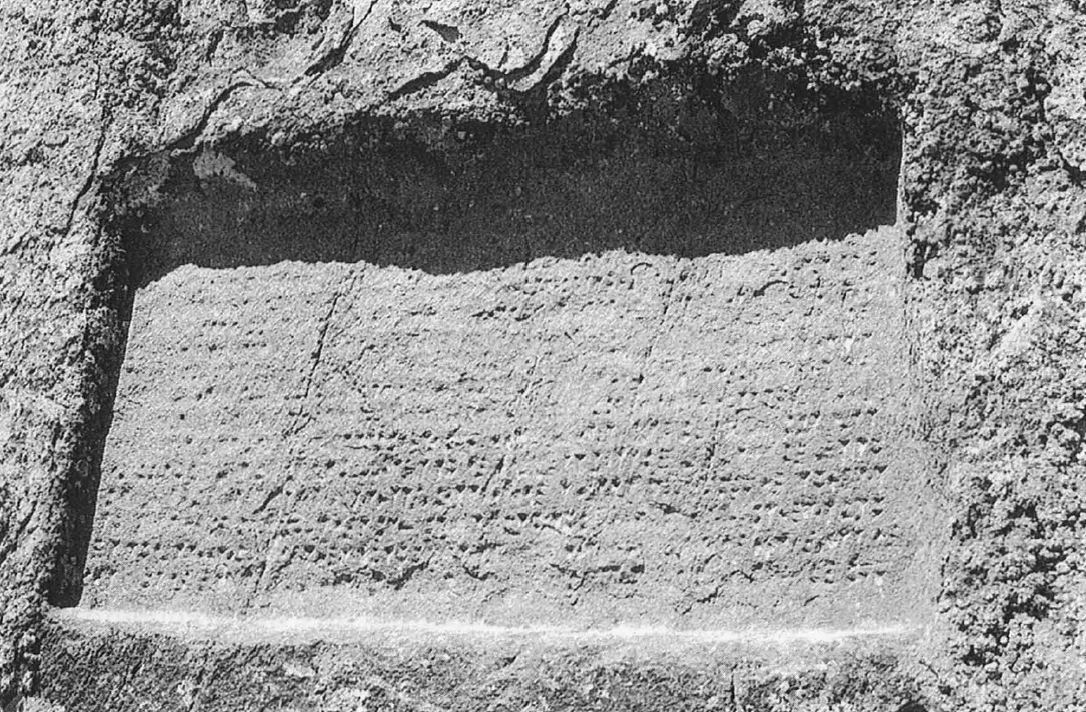Radkan West Towerمیل رادکان غربی
Location: The Radkan West Tower is 54 kilometers southwest of Gorgan, in northeastern Iran, Golestan Province.
36°37’46.0″N 54°06’21.0″E
Map
Islamic
History and description
The Rādkān West Tower or Mil-e Rādkān (fig. 1) is located 4 kilometers southeast of the village of Rādkān between Gorgan and Gonbad-e Qābūs. It rests on a scenic hill in a mountainous, forested region, uniquely positioned on the southern slopes of the Alborz Mountains. From this vantage, it overlooks the Nekā River. The tower, along with the Lājim and Resket towers, was built on a hill visible from afar to guide travelers and passersby. The Rādkan tower is the burial place of one of the ispahbeds (military commanders) of the Bavand dynasty, Abu Ja’far Muhammad ibn Vandarin Bavand.
Built with standard brickwork and decorated with brick and plaster ornamentation (fig. 2), the tower is circular, with an inner diameter of 5.80 m. and walls of 2 m. thick, giving it a total diameter of 9.80 m. Its overall height is approximately 20.50 m, including the conical dome made of unglazed brick. Originally, the tower bore two inscriptions: an inscribed plaque one on the entrance and the other under the decorated cornice (figs. 3 and 4). A plaster slab once enclosed a rectangular inscription panel above the entrance’s arch. It has been almost entirely stolen or destroyed, with only a few scattered fragments remaining. Of that inscription, only a meticulous drawing by the French traveler Hommaire de Hell is preserved. Herzfeld, who examined the monument in 1925, reports that the looters also dismantled the tower’s original floor, presumably in search of a grave that ultimately eluded them. He notes the presence of a trench outlining the looted foundations of a similar tower, which, according to Damghan locals, remained standing until relatively recently, likely surviving until shortly after Hommaire de Hell’s visit to the site in 1848. In contrast, Ernst Diez writes on the presence of a shallow, circular trench, 7 to 8 m. in diameter, in the northwest vicinity of the tower, surrounded by scattered brick debris. This feature he associates with is he remains of a kiln constructed specifically for producing bricks for the tower’s construction.
The longer inscription (fig. 5) written in Arabic Kufic and Middle Persian is placed under the decorated cornice below the dome. The inscription names the owner of the tower as Isphabed Abu Ja’far and dates the monument’s completion to 411 A.H. Herzfeld published the first detailed study of the Middle Persian inscription. This was followed by a recent reading of the text by Carlo Cereti. Sheila Blair has published a discussion on the Arabic text. The Middle Persian and the Arabic texts read as follows:
Farmūd kardan ēn gumbad be zīndagīh <ī> xwēš *spāhbed Abī Jaʿfar Mohammad ī Wandarīn Bāwand mowlī Amir-u-mūminīn be sāl tīrīst haštād be tamām kardan sāl tīrīst haštād <ud> hašt.
The spāhbed Abī Jaʿfar Mohammad ī Wandarīn Bāwand client of the Commander of the Faithful ordered to build this dome in year three hundred eighty. He ordered it to be completed it in year three hundred eighty-eight.
بسم الله هذا قصر الامیر السید الخطیر ابو جعفر محمد
ابن وندرین باوند مولی امیر المٶمنین فی شهر ربیع الآخر سنۃ سبع و اربع مائۃ
بسمله امر بابتدا بناء هذا المشهد فی ایام
الحیوۃ السبهبد ابو جعفر محمد بین وندرین
باوند مولی امیر المٶمنین اکرمه الله بالغفران
والرضوان و لجنان فی سنۃ سبع واربع مائۃ
In the name of God. This is the palace of the noble Seyyed Abu Ja‘far Muhammad Vandarin Bāwand, the vassal of the Commander of the Faithful, in the month of Rabi‘ II of the year 407 [September-October, A.D. 1016].
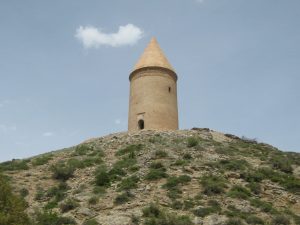
Fig. 1. The Rādkan tower seen from the south (Image: CreativeCommons)
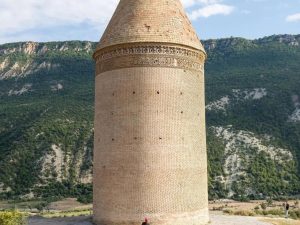
Fig. 2. The Rādkan tower seen from the south (Image: CreativeCommons)
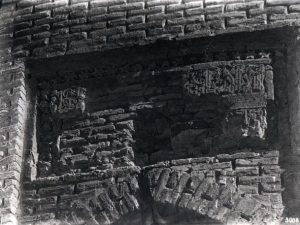
Fig. 3. The Rādkan tower. Herzfeld’s photograph of the inscribed panel in 1925 (Image: Archnet.com, CreativeCommons).
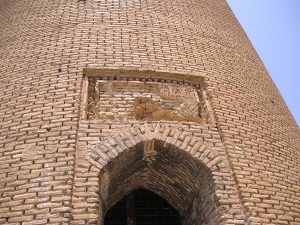
Fig. 4. The Rādkan tower. The restored inscribed panel above the entrance (Image: Archnet.com, CreativeCommons)
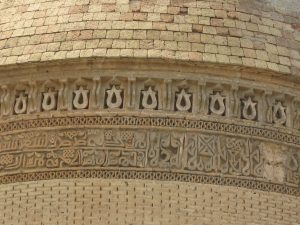
Fig. 5. The Rādkan tower. The inscription below the dome (Image: ARchnet.com, CreativeCommons)
Archaeological Exploration
In June 1848, Xavier Hommaire de Hell, the French traveler examined the tower and inscription. He published a short description of the monument along with an accurate drawing of the inscribed panel above the entrance. A reproduction of Hommaire de Hell’s drawing can be found in Henri-René d’Allemagne’s travel account. Ten years later, Nikolai Khanikov visited the Radkan tower in 1858 and copied its inscription. The Russian traveler and explorer Grigori Valerianovich Melgunov, who visited Rādkān in 1860, was the first to mention the inscription above the door ⸺ an inscription that had previously been copied and published by Hommaire de Hell in the Atlas accompanying his book, though he made no reference to it in his travel narrative. Melgunov also described the inscription on the frieze below the dome, which is written in both Middle Persian and Arabic.
The most comprehensive study of the monument was conducted by Ernst Diez, who examined the tower and its inscriptions in 1911. Diez provides a detailed analysis of the architectural features of the tower, as well as an in-depth study of the inscriptions. Additionally, he offers a thorough review of previous research on the monument, including studies conducted by Russian scholars. Ernst Herzfeld visited the tower in 1925 and closely examined the inscriptions. The Middle Persian text of the inscription was the object of a recent reading and translation by Carlo Cereti.
The tower has undergone restorations in the 1950s, 1970s, and 2010s.
Bibliography
Blair, S. S., The Monumental Inscriptions from Early Islamic Iran and Transoxiana, Leiden, 1992, pp. 85-87.
Cereti, C. G., “Two Late Pahlavi Inscriptions from the Alborz Mountains: Lajim and Mil-e Radekan,” in Translation and Transmission: Collection of Articles, edited by Jaakko Hämeen-Anttila and Ilkka Lindstedt, Ugarit-Verlag, Münster, 2019, pp. 55-94.
D’Allemagne, H. R., Du Khorassan au pays des Backhtiaris. Trois mois de voyage en Perse, Paris, 1911, vol. 2, p. 45, and vol. 3, p. 70.
Diez, E., Churasanische Baudenkmäler, Berlin, 1918, pp. 36-39, 87-100.
Herzfeld, E., “Postsasanidische Inschriften,” Archaeologische Mitteilungen aus Iran, vol. 4, 1933, pp. 140-147.
Herzfeld, E., “Arabische Inschriften aus Iran und Syrien”, Archaeologische Mitteilungen aus Iran, vol. 8, 1937, pp. 79-81.
Hommaire de Hell, X., Voyage en Turquie et en Perse exécuté par ordre du gouvernement français, vol. 3, Paris, 1856, pp. 297 and 301; Atlas, plate LXXXV.


